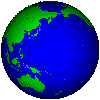|
Postcards from:
Las Vegas, Nevada USA
Istanbul Turkey
Cappadocia Turkey
Urfa Turkey
UrfaPhotos
Mardin Turkey
MardinPhotos
Erbil Iraq
Erbil
photos
Fethiye Turkey
Fethiye
photos
Aydin Turkey
Aydin
photos
Istanbul Turkey
After
Kurdistan trip
Las Vegas, Nevada USA

Gobekli Tepe- Map of the region.
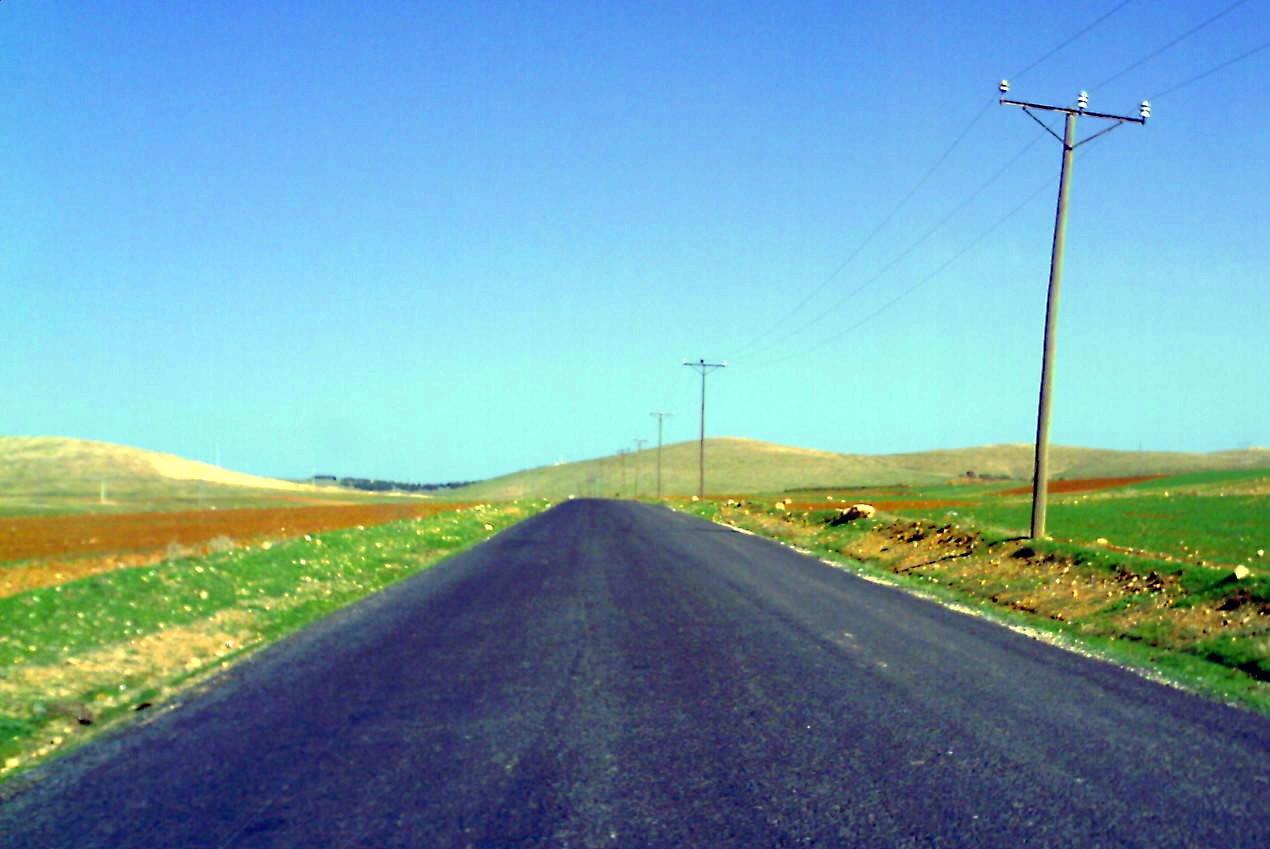
Gobekli Tepe- On the road to the site.
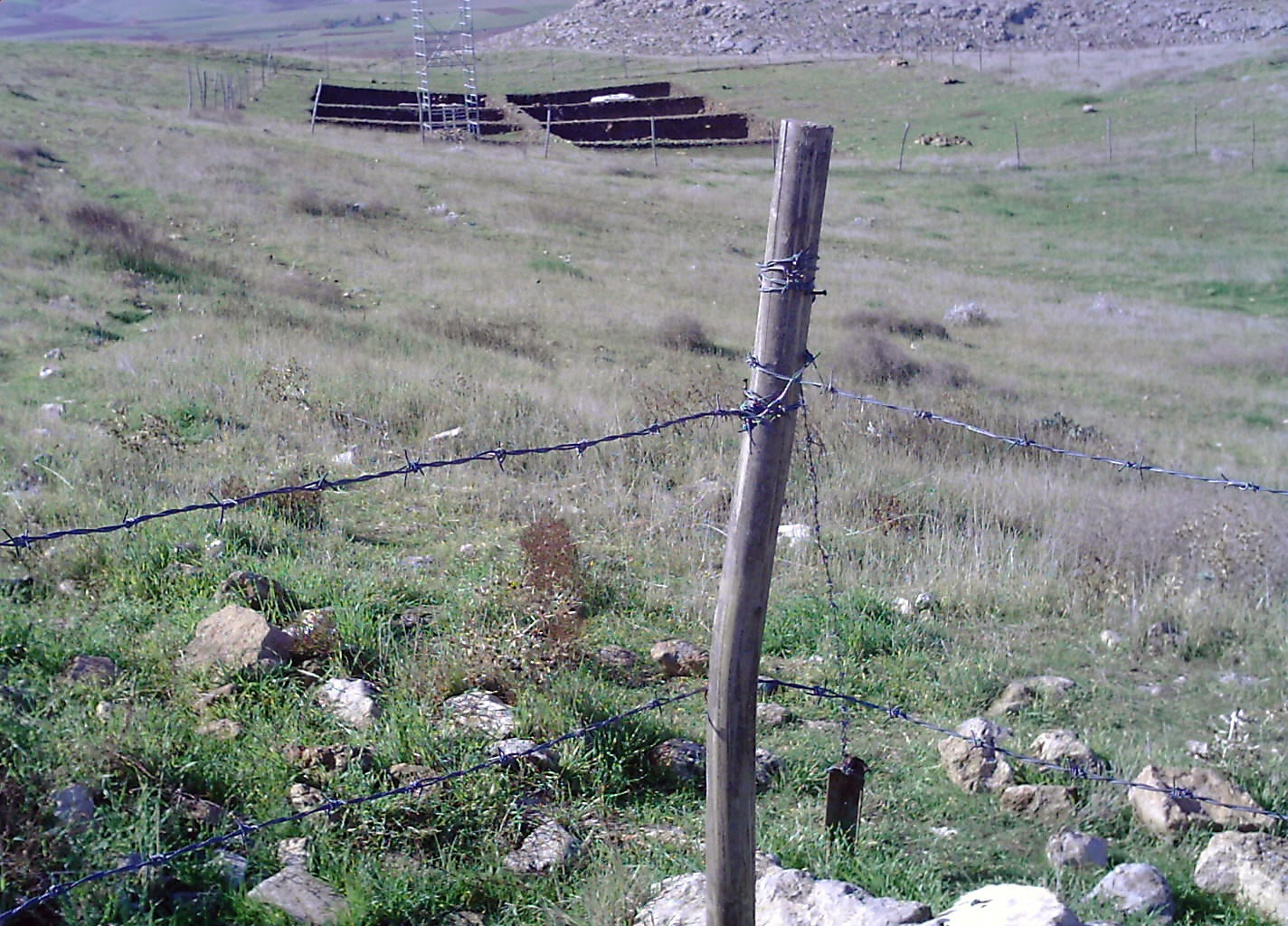
Gobekli Tepe- Around the main site of ongoing excavation are other
exploratory digs like this one in the distance.
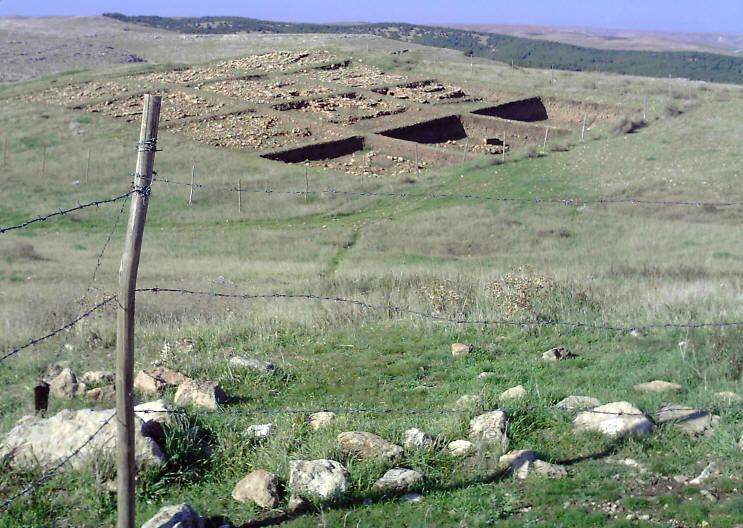
Gobekli Tepe- Around the main site of ongoing excavation are other
exploratory digs like this one.
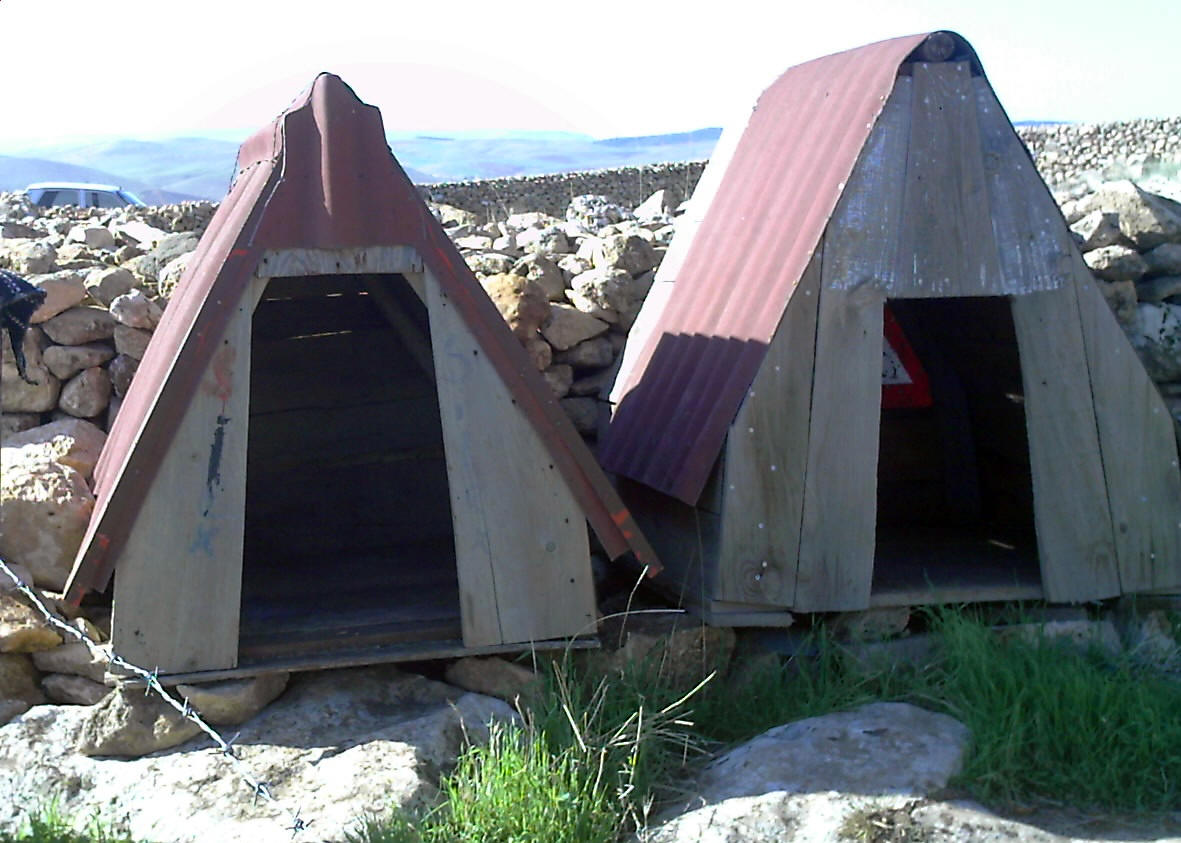
Gobekli Tepe- Caretaker must have a couple dogs, though I never saw them.
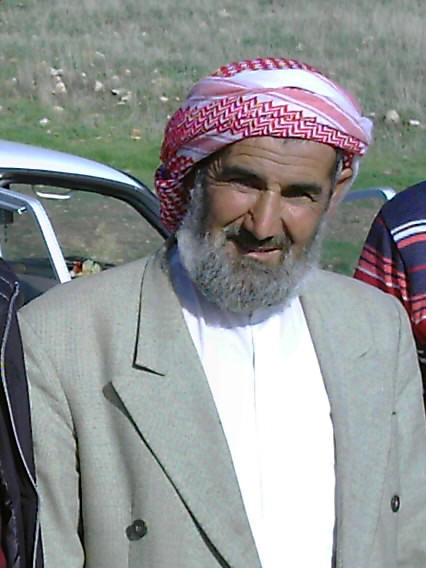
Gobekli Tepe- Caretaker Savak poses for photo.
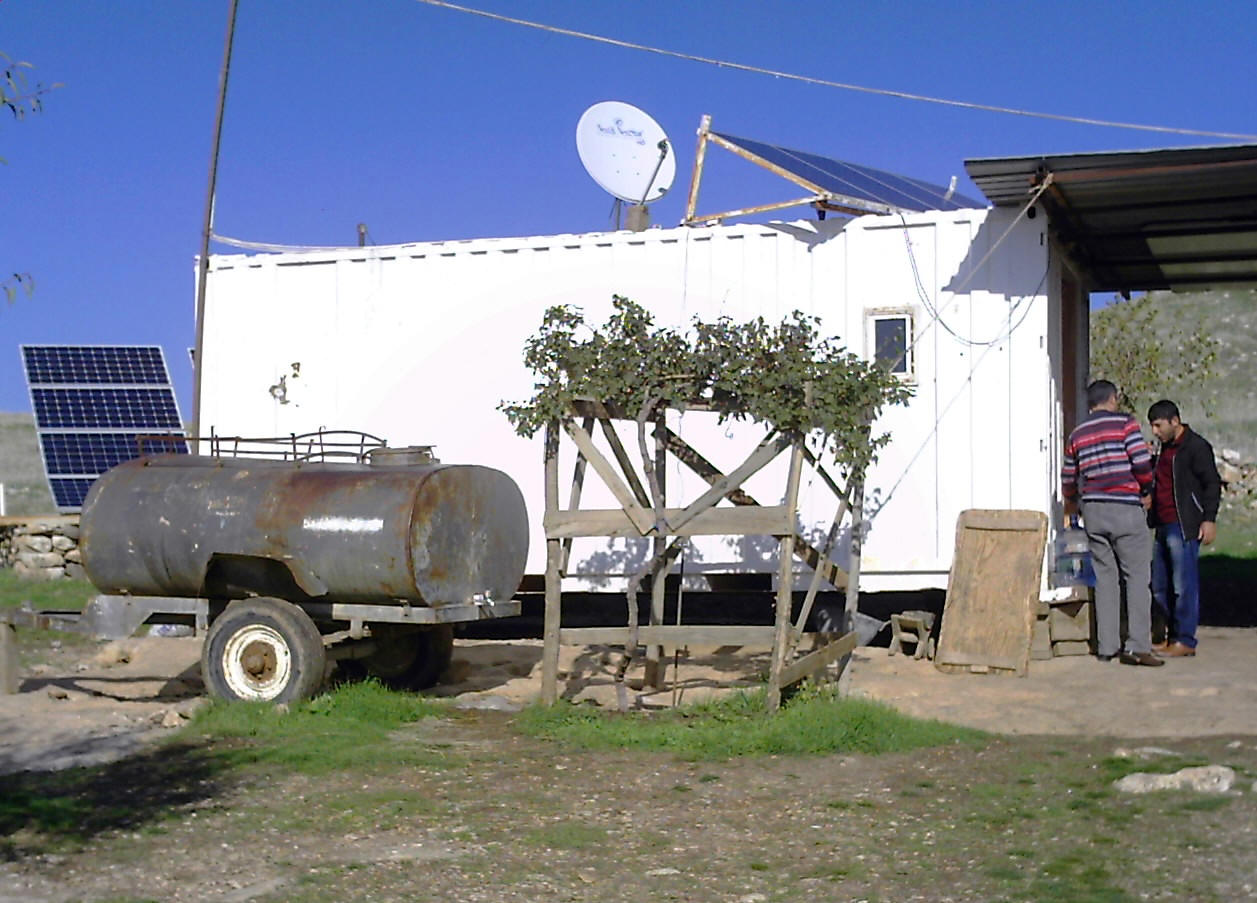
Gobekli Tepe- Caretakers self contained office on the site.
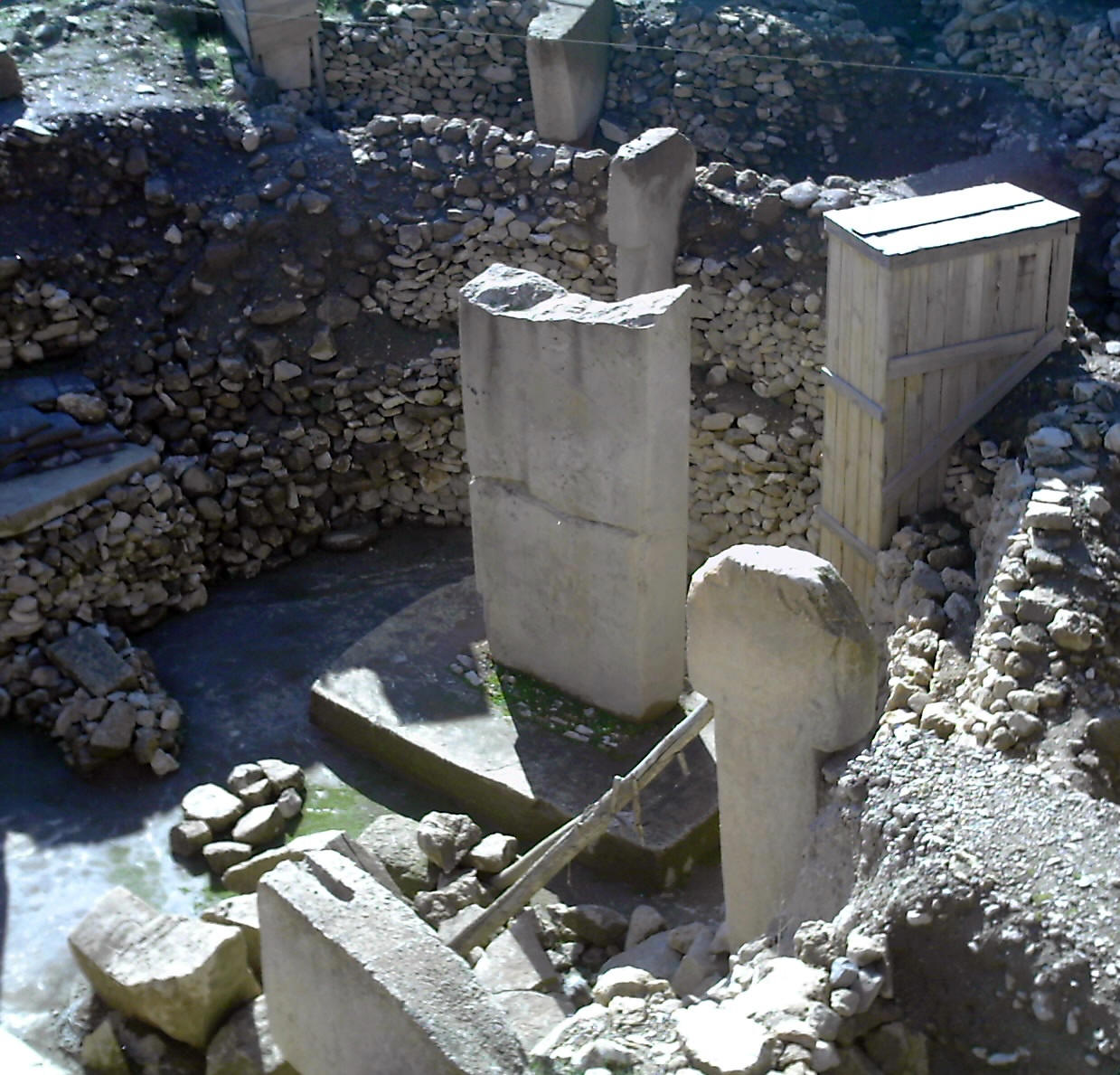
Gobekli Tepe- More fragile columns have been encased in wooden boxes for
protection like these.
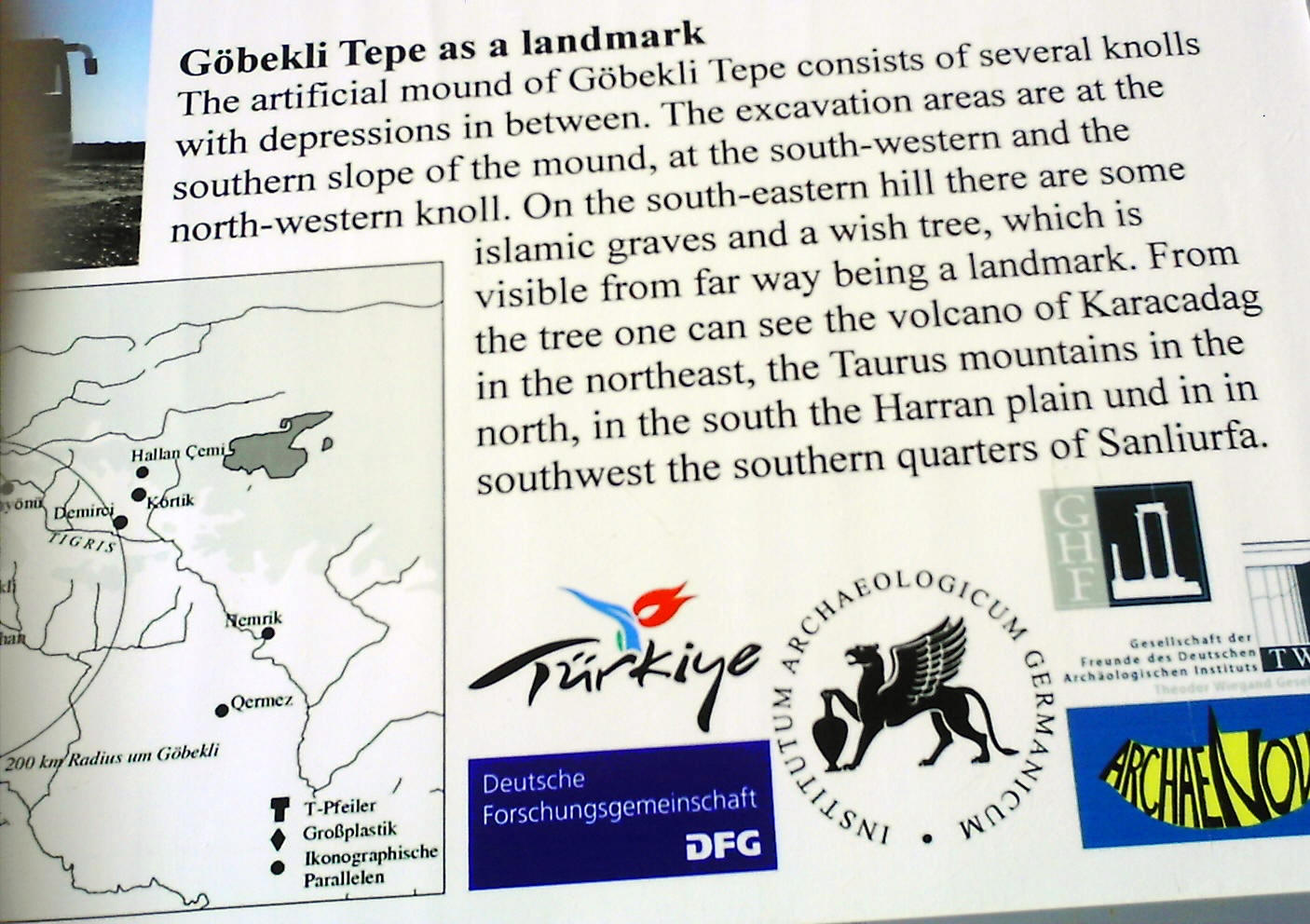
Gobekli Tepe- One of the signs providing more information about the site.
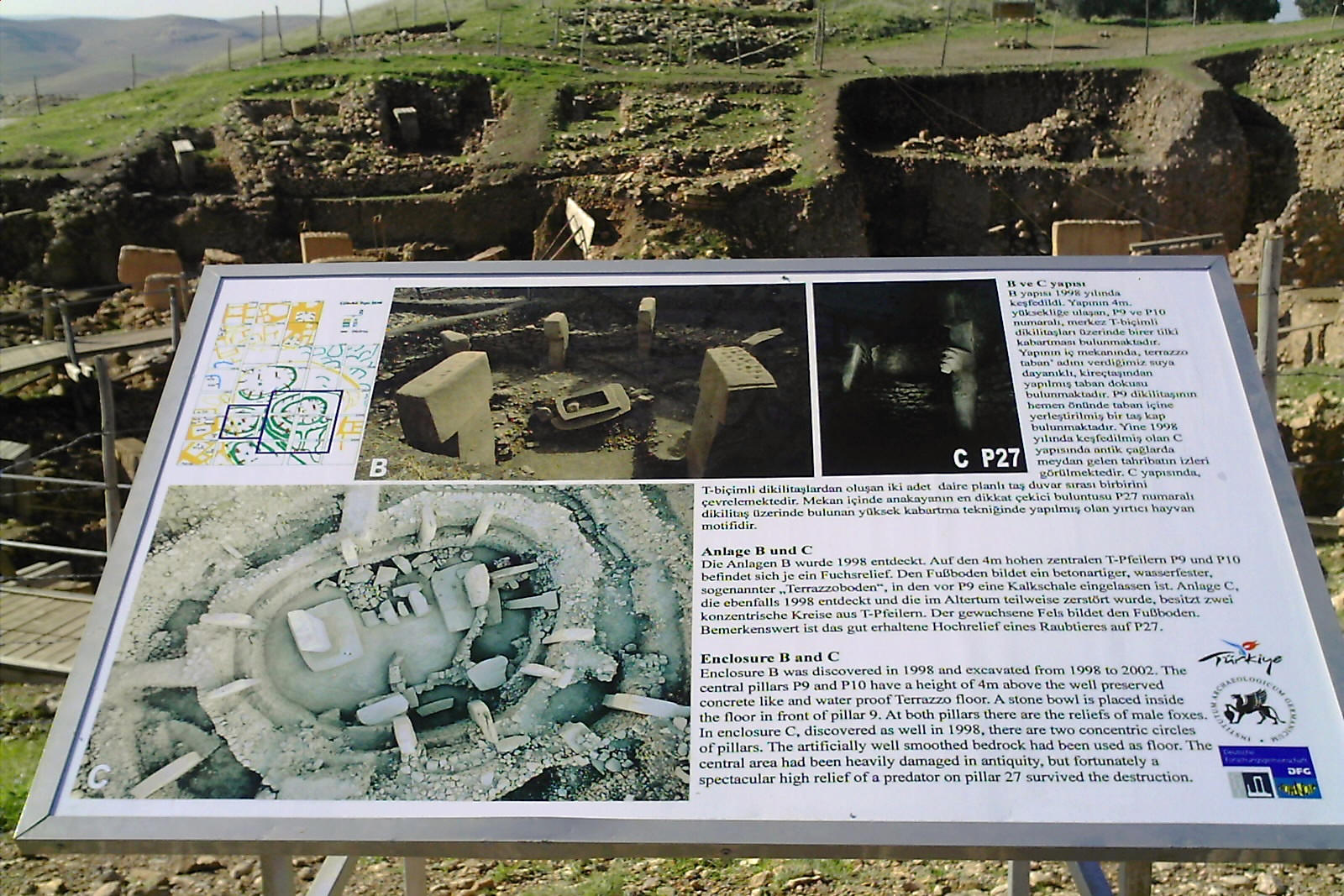
Gobekli Tepe- One of the signs explaining Enclosures B and C.
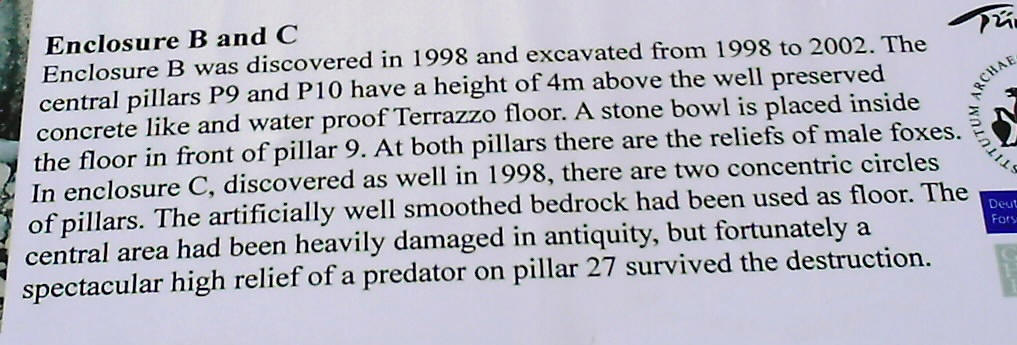
Gobekli Tepe- Close-up of the text explaining Enclosures B and C.
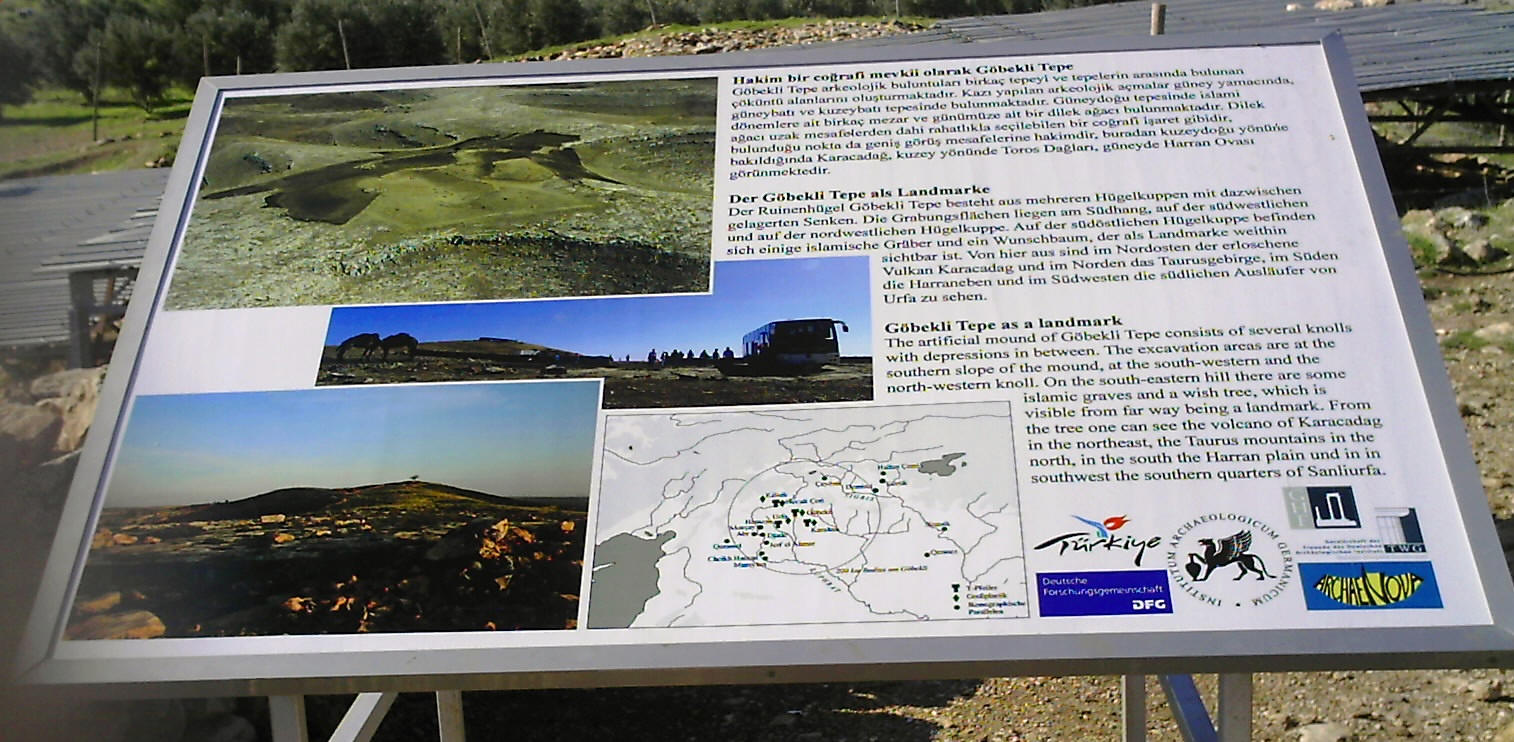
Gobekli Tepe- One of the signs explaining the site.
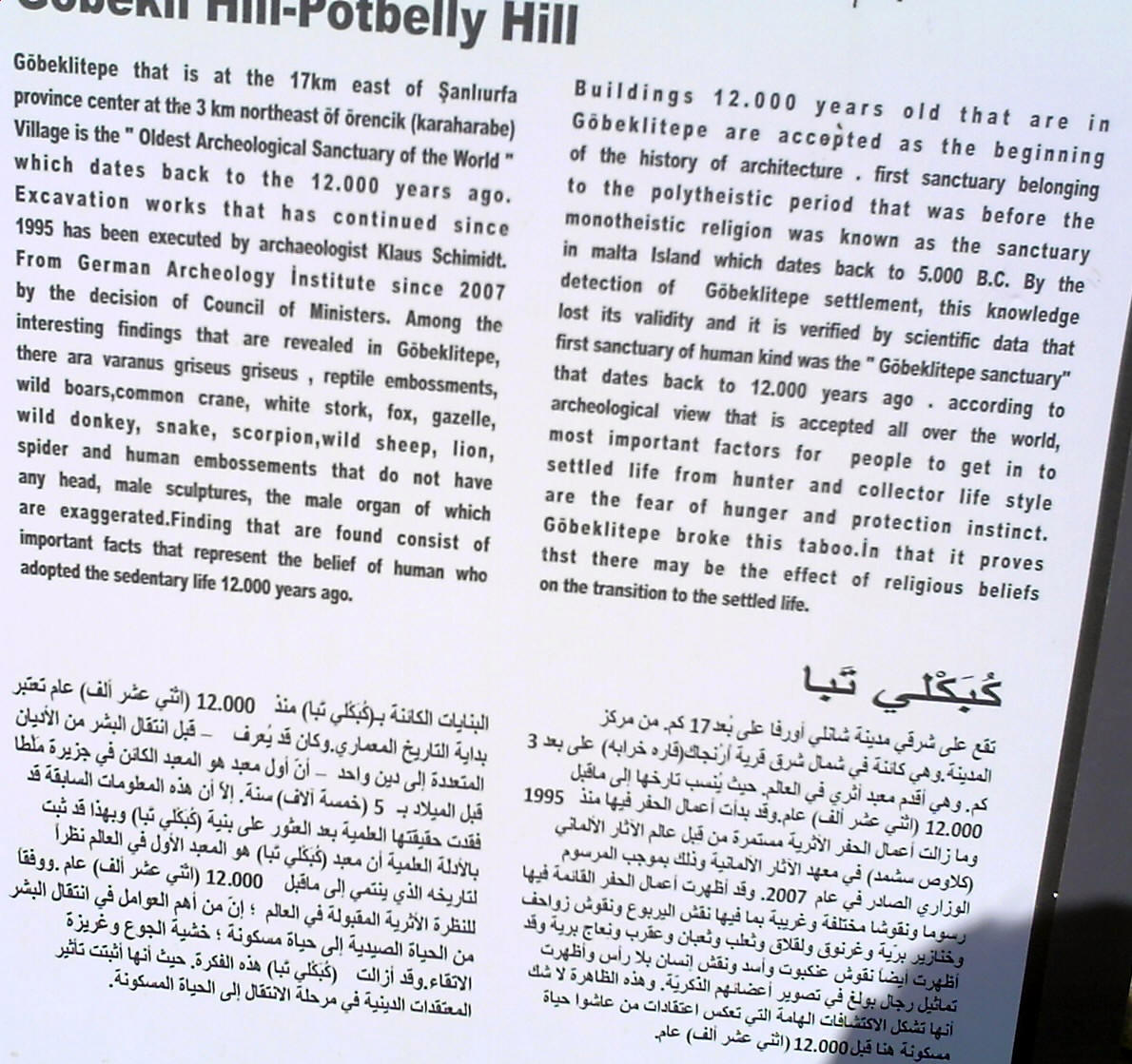
Gobekli Tepe- Readable shot of the signs explaining Pot Belly Hill.
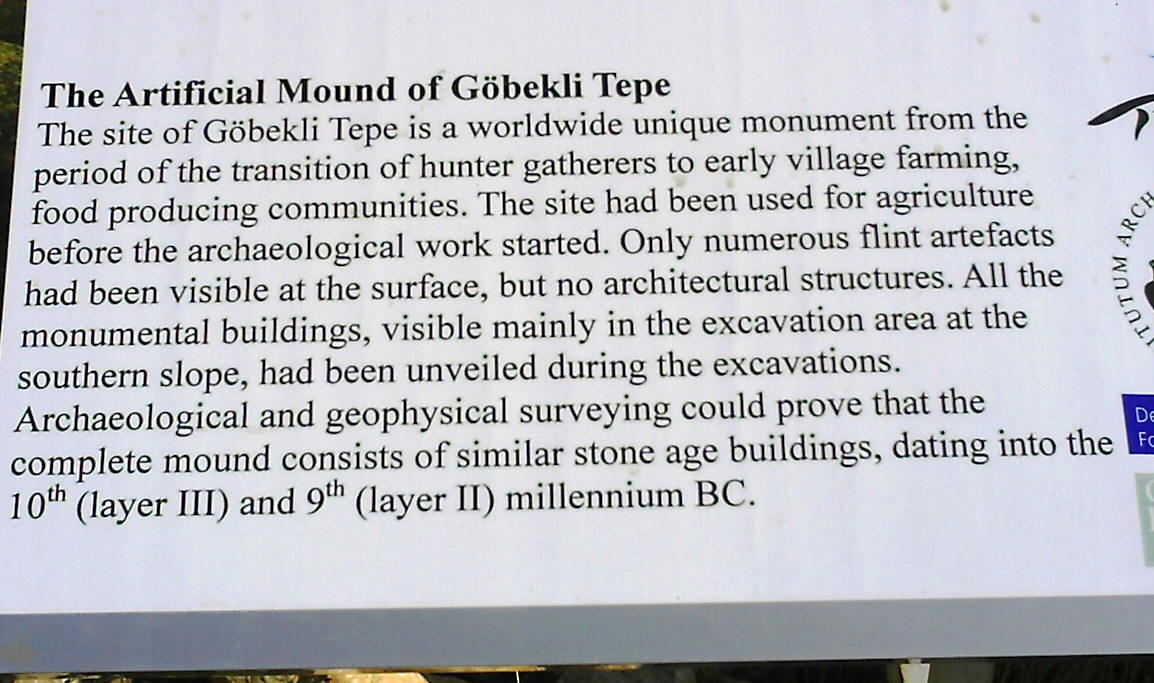
Gobekli Tepe- Readable shot of the signs explaining the Artificial Mound.
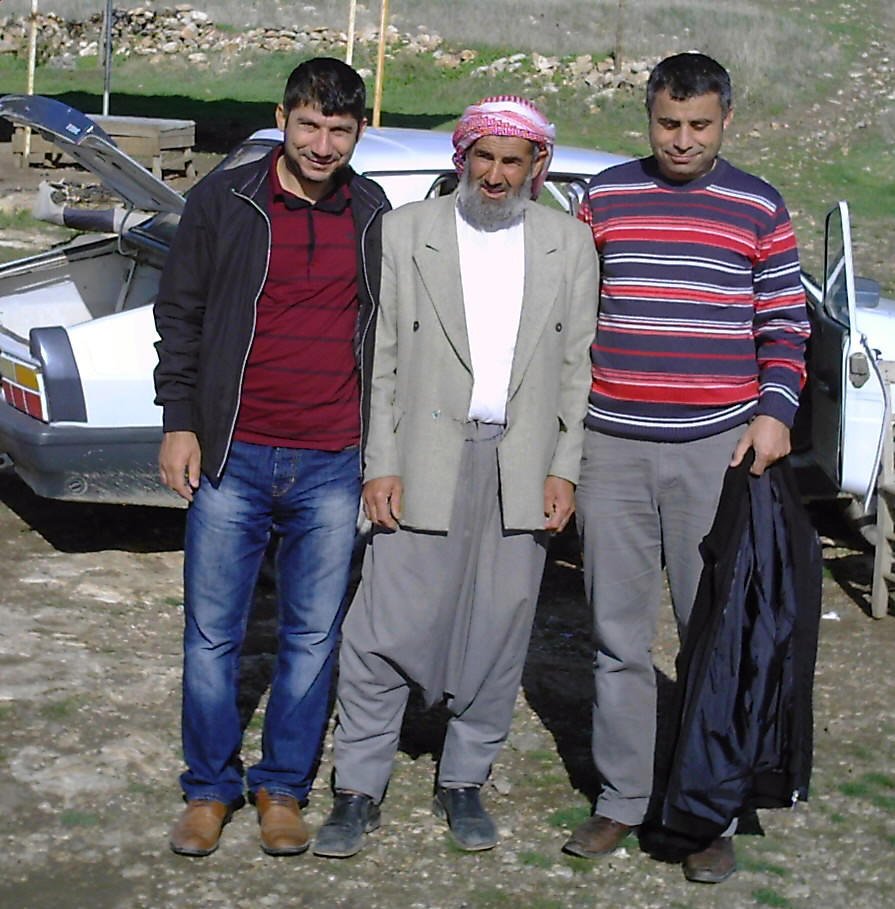
Gobekli Tepe- Serdaf, Caretaker Savak and my government guide, Serdar.
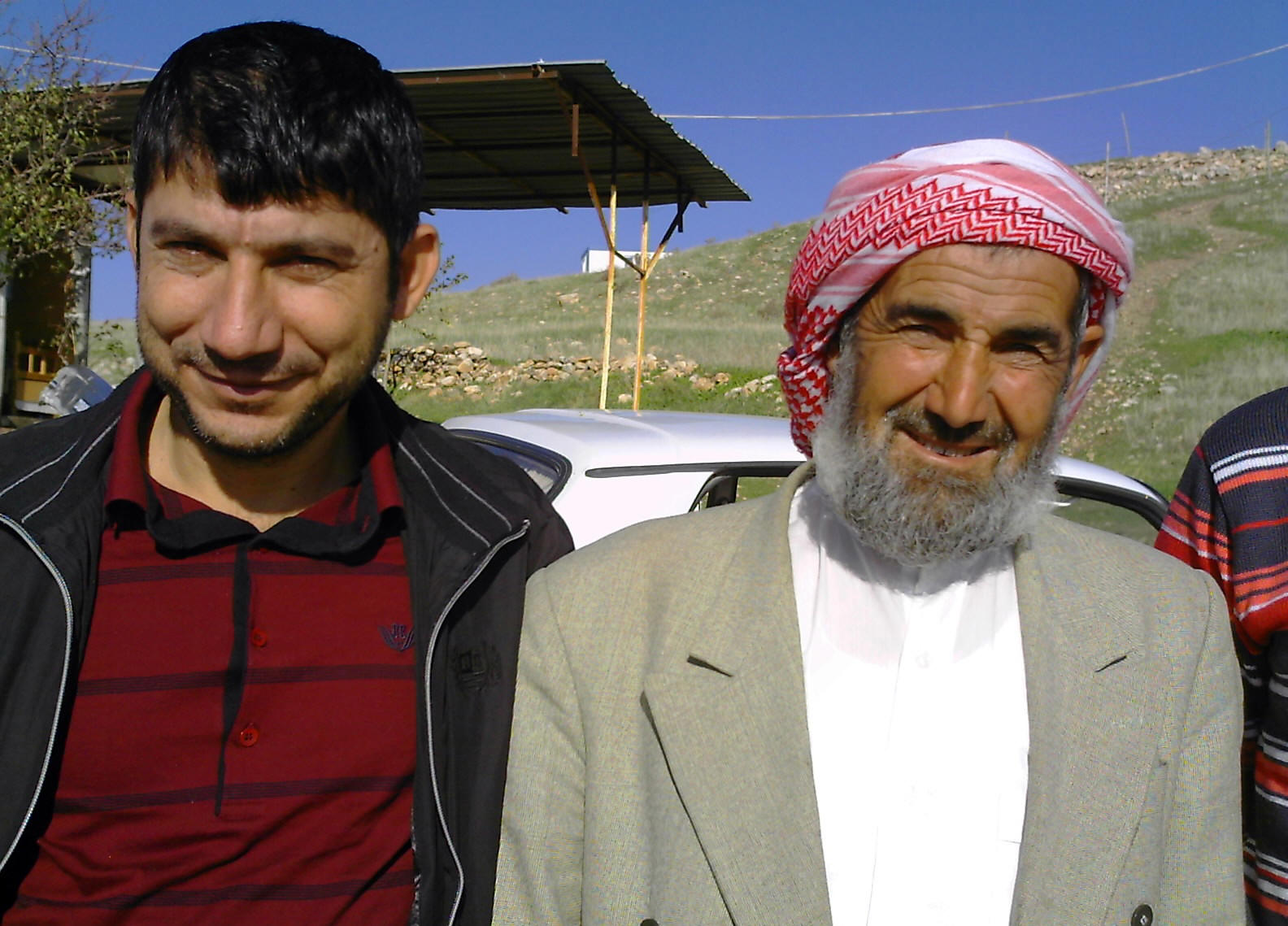
Gobekli Tepe- Serdar's brother and caretaker Savak pose for my photo.
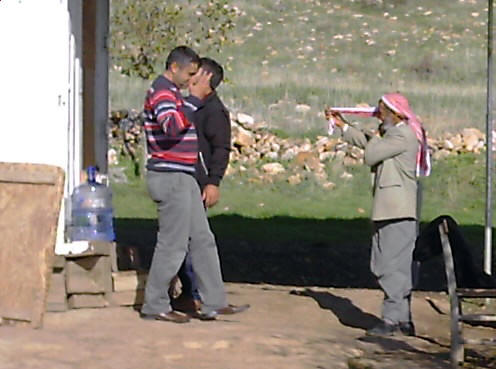
Gobekli Tepe- Serdar talking with caretaker, Savak who is adjusting his head
scarf.
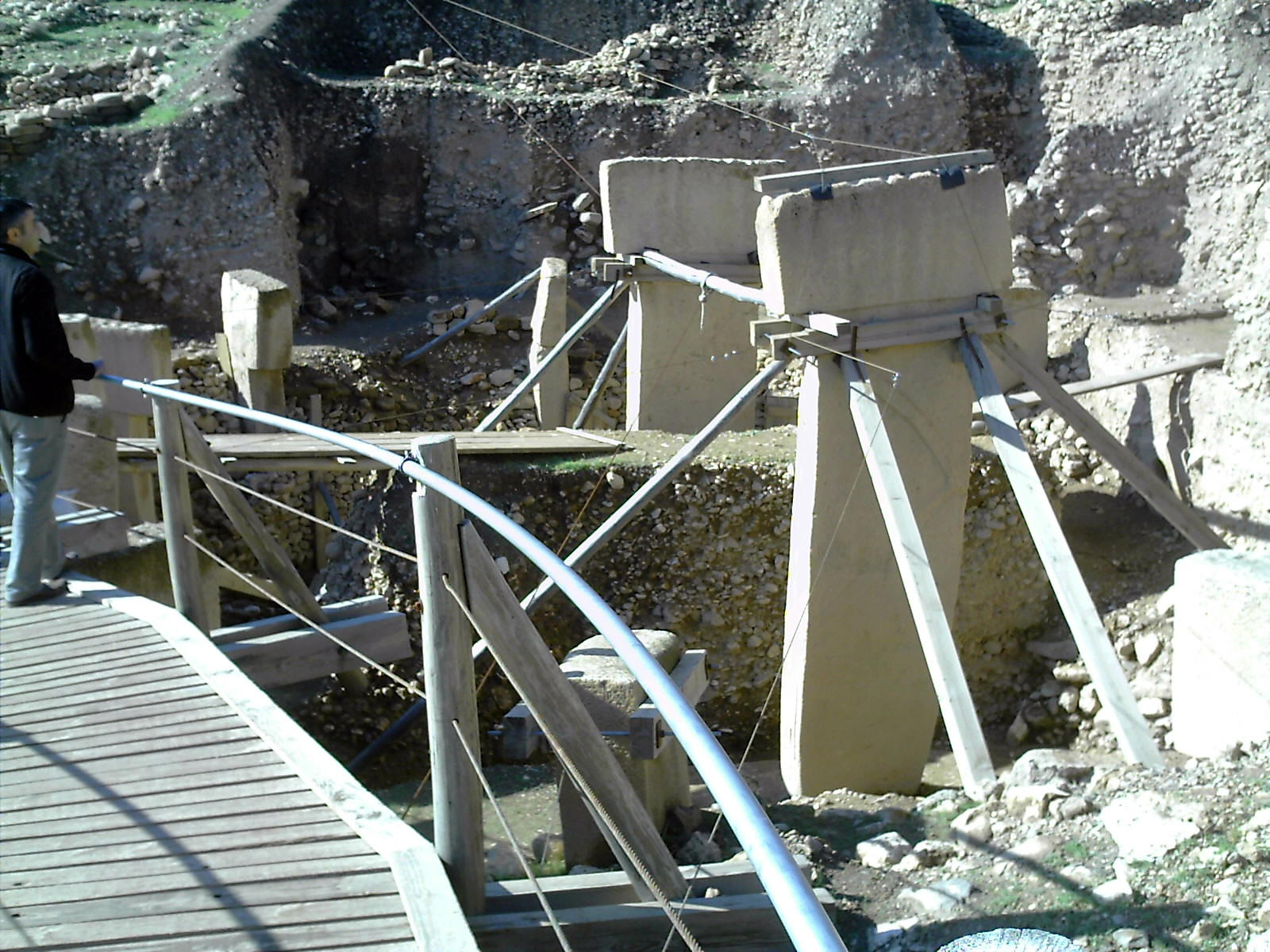
Gobekli Tepe- Steel supports like these have been installed on some of the
more fragile structures .
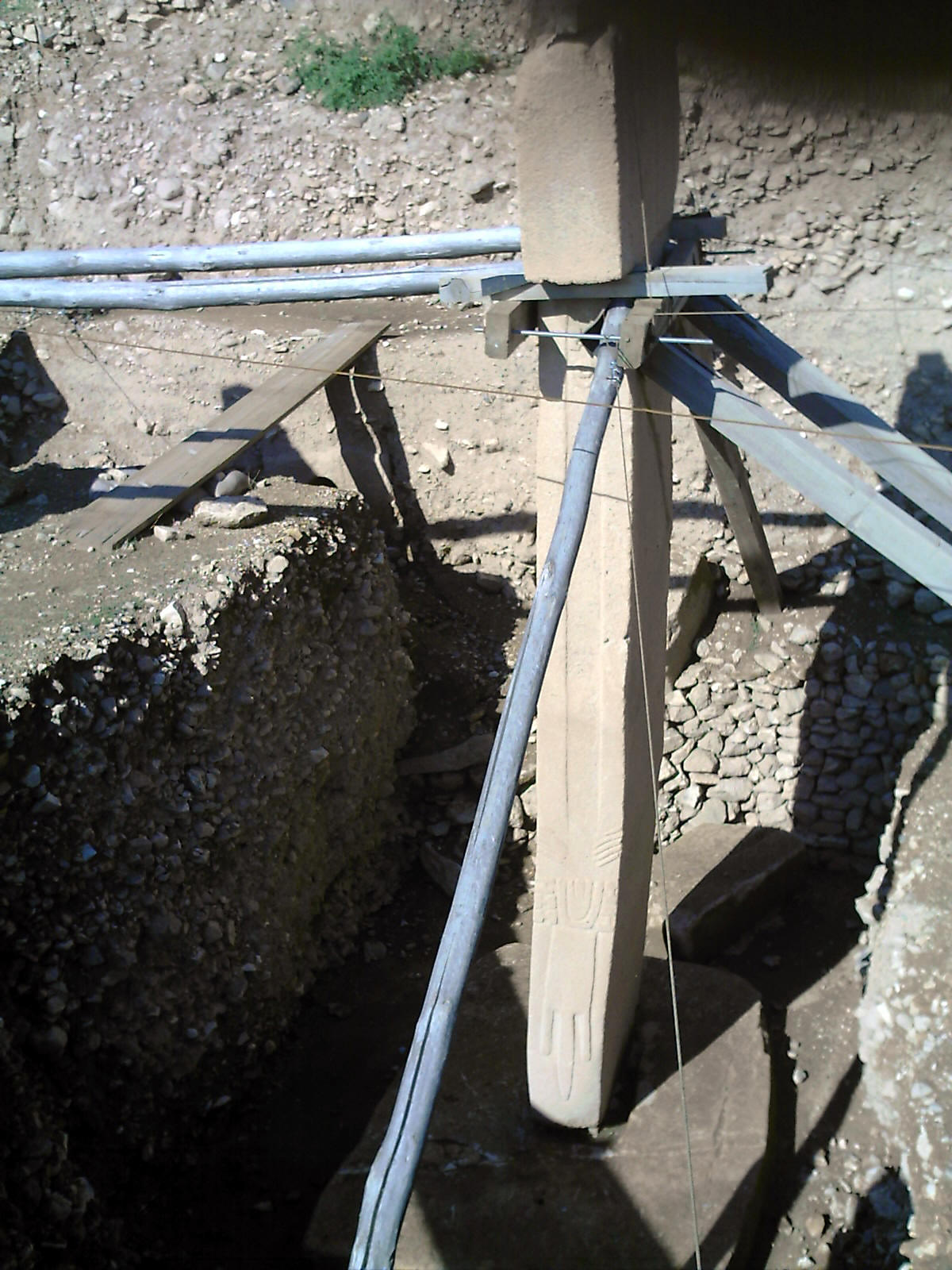
Gobekli Tepe- Sturdy steel supports have been erected on some of the
fragile structures.
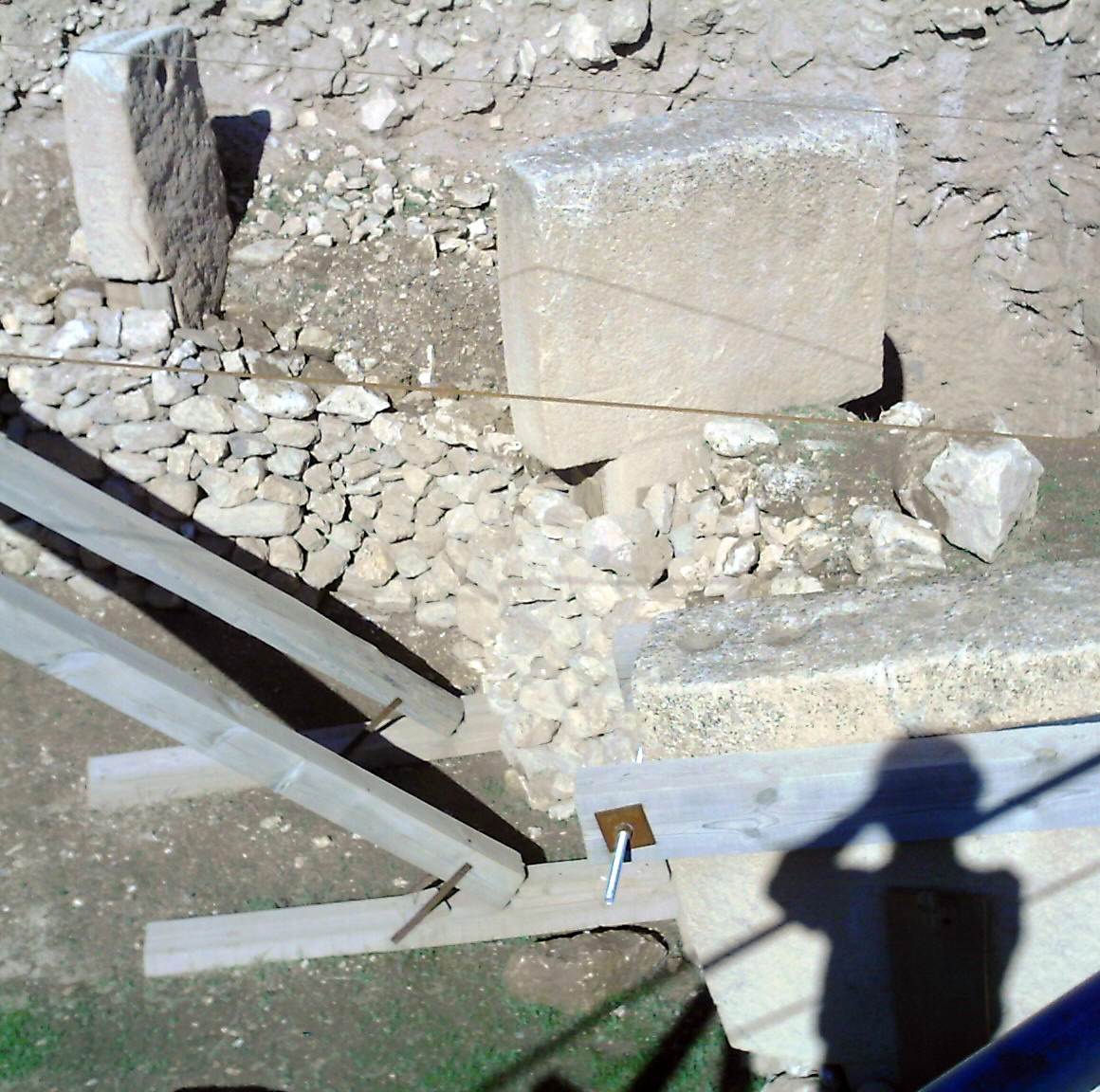
Gobekli Tepe- Sturdy steel supports like these protect many of the fragile
structures .
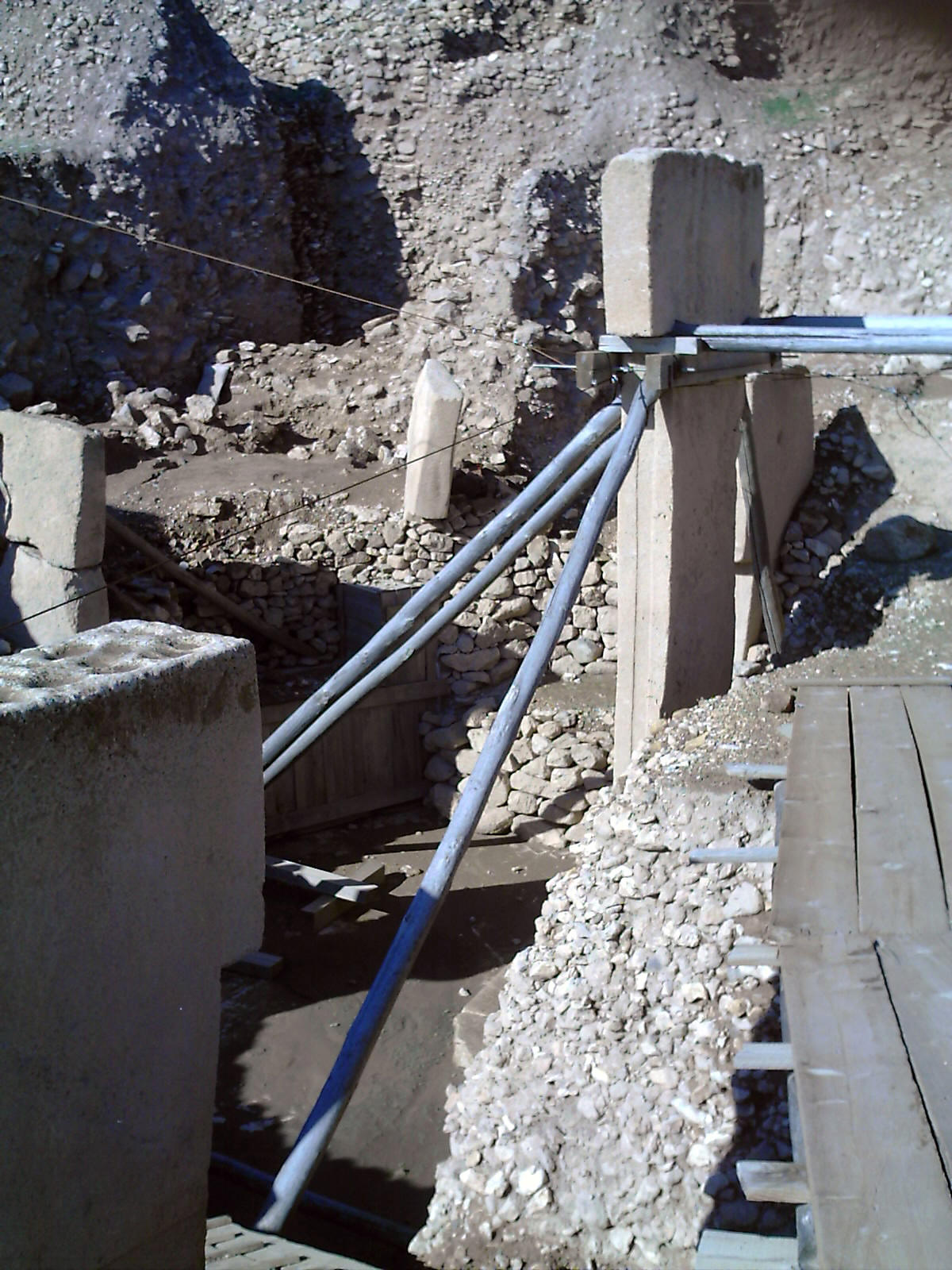
Gobekli Tepe- Sturdy steel supports protect some of the fragile
structures as shown here.
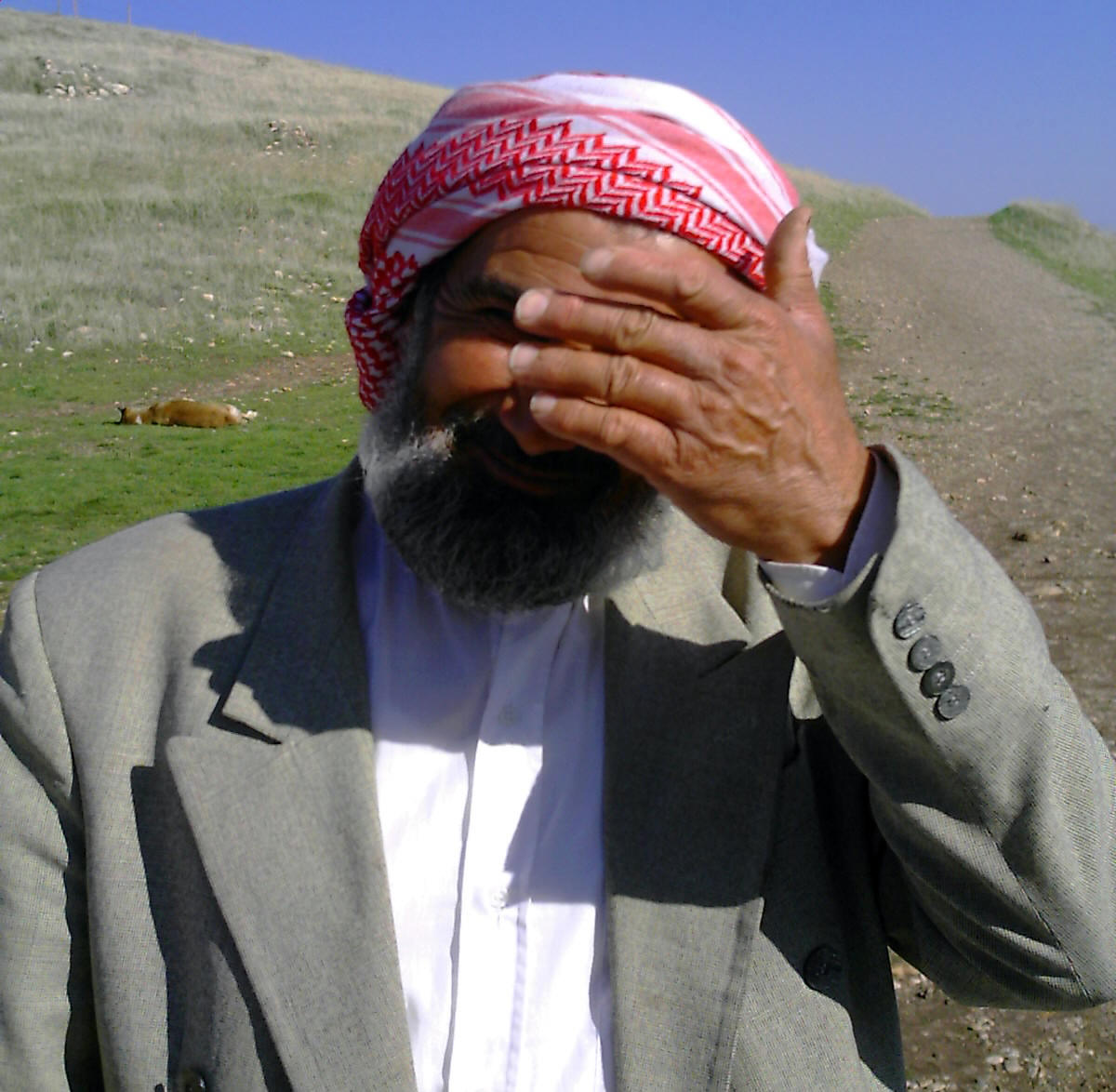
Gobekli Tepe- This is bashful caretaker Savak, nephew of the shepherd,
Savak Yildiz who discovered the site back in 1994.
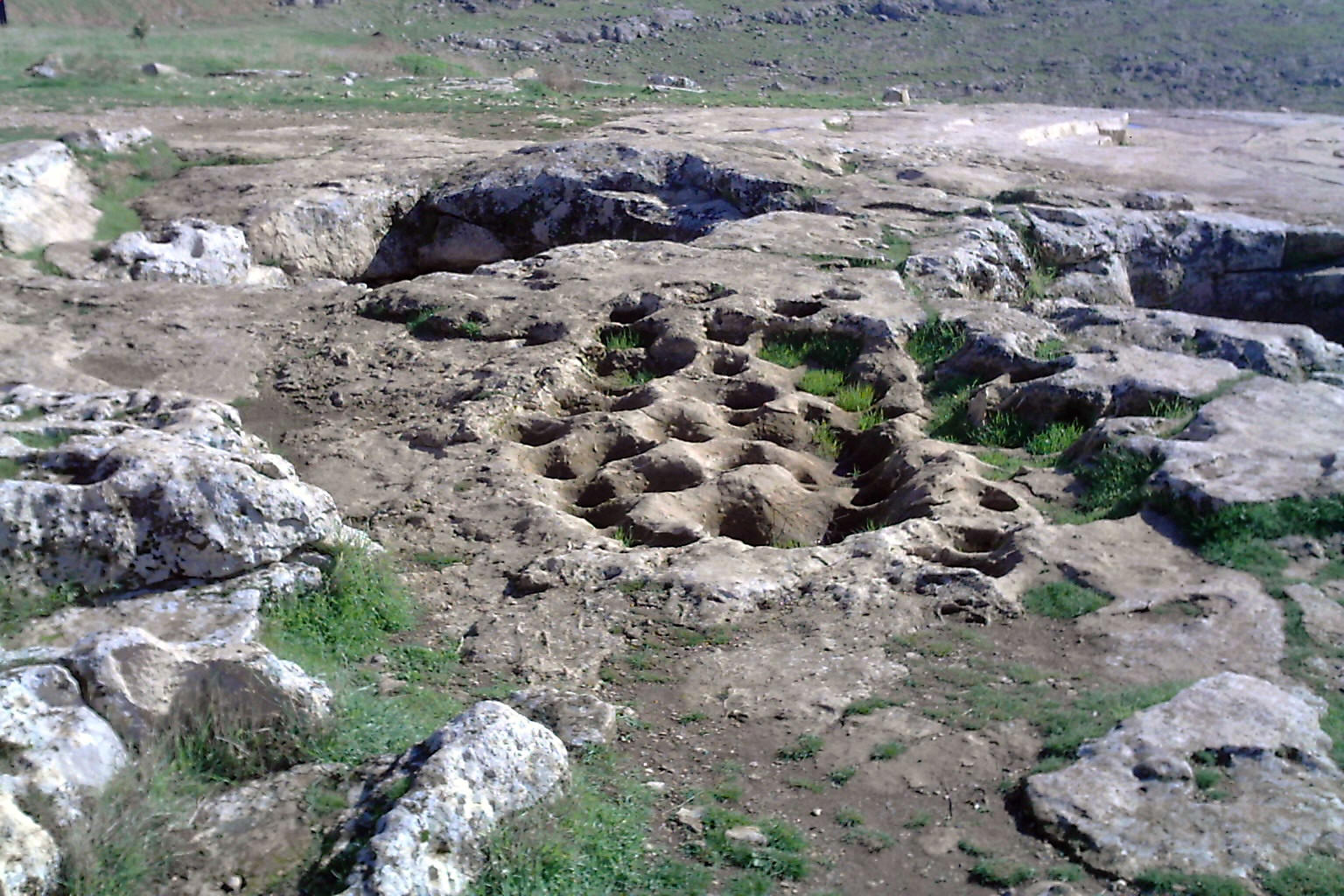
Gobekli Tepe- This is the first artifact cut into the bed rock I saw at the
edge of the parking area.
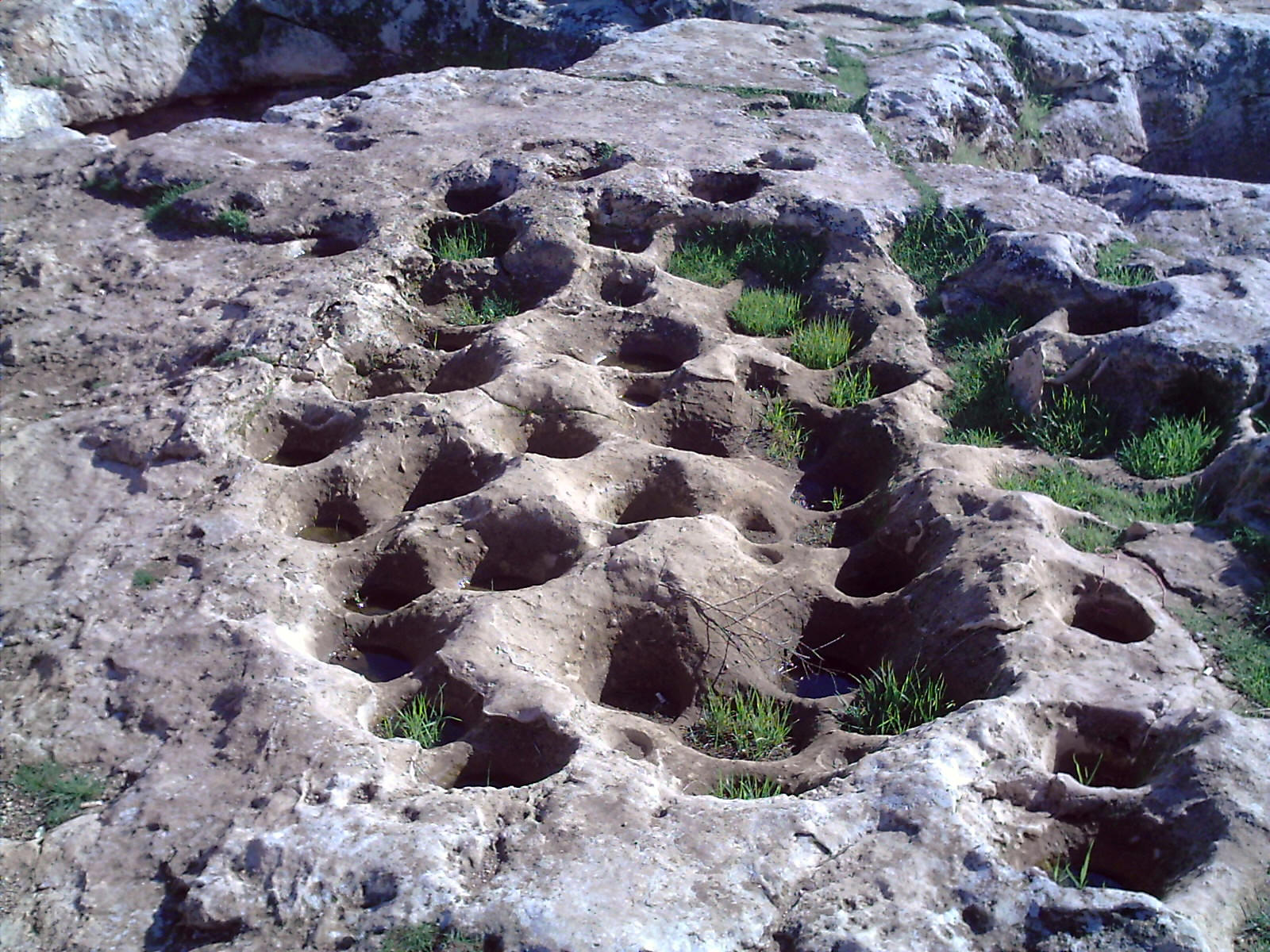
Gobekli Tepe- This is the first artifact cut into the bed rock I saw at the
edge of the parking area.
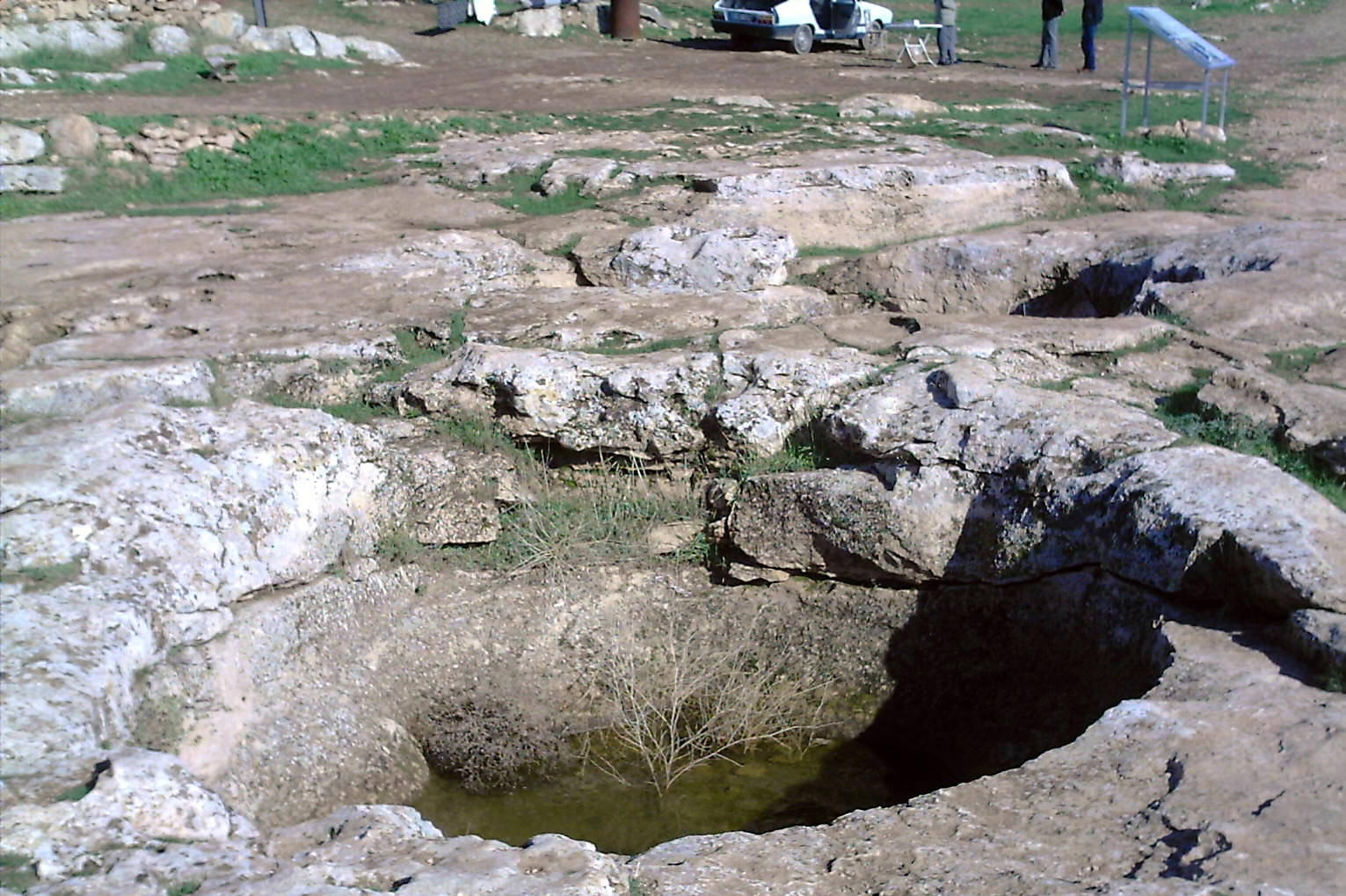
Gobekli Tepe- This is the first artifact cut into the bed rock I saw at the
edge of the parking area.
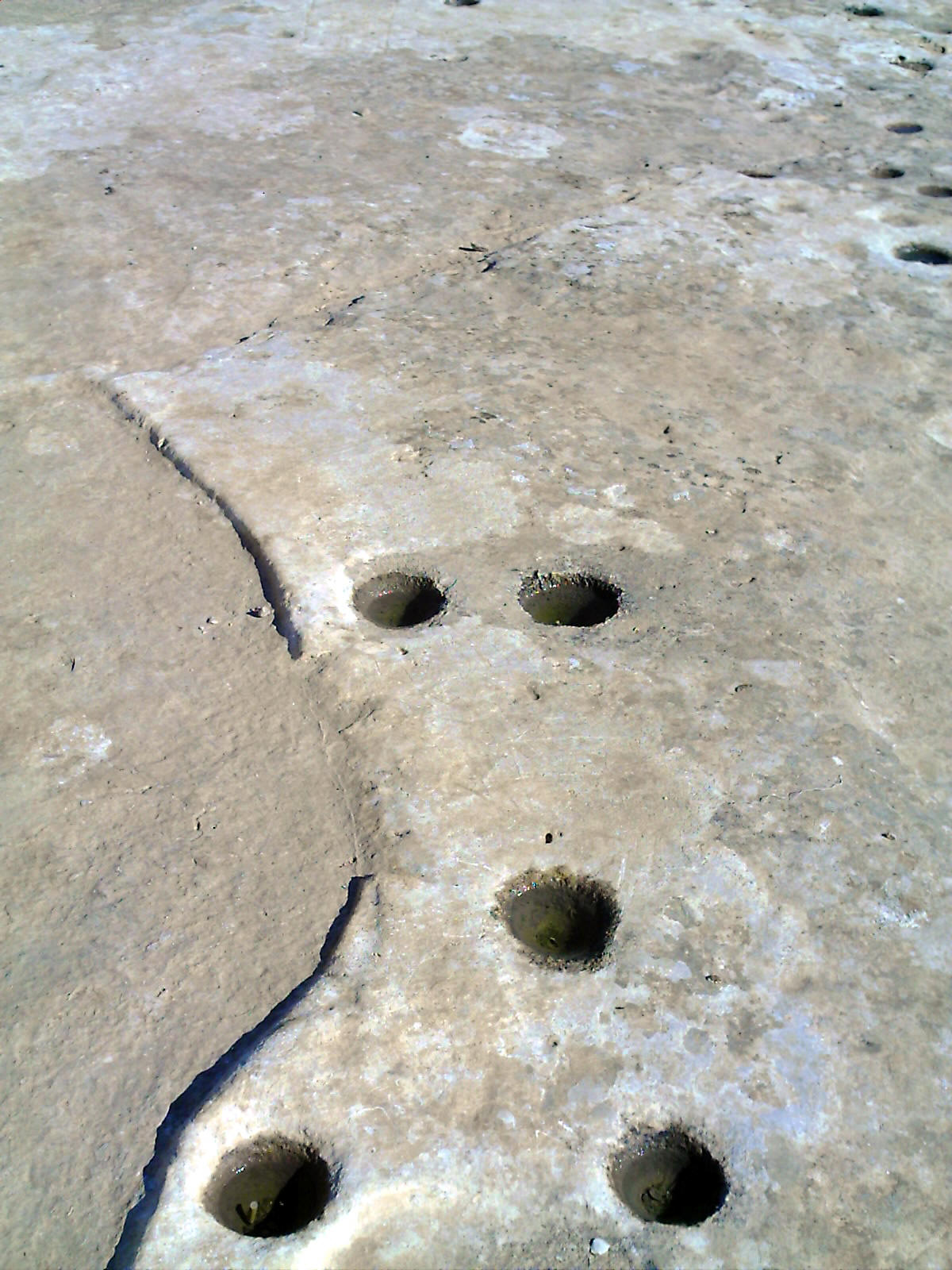
Gobekli Tepe- This is the first artifact cut into the bed rock I saw
at the edge of the parking area.
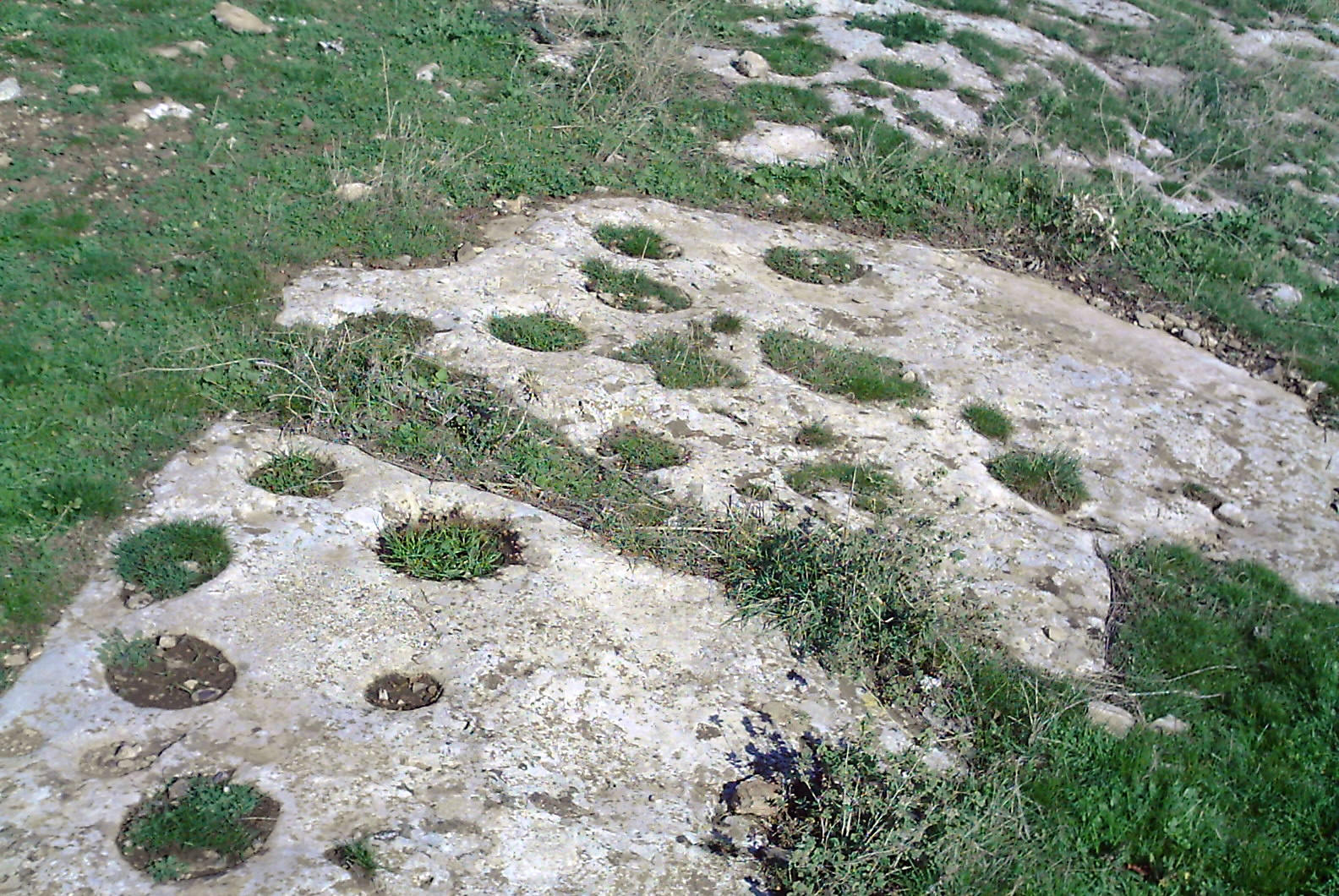
Gobekli Tepe- This is the first artifact cut into the bed rock I saw at the
edge of the parking area.
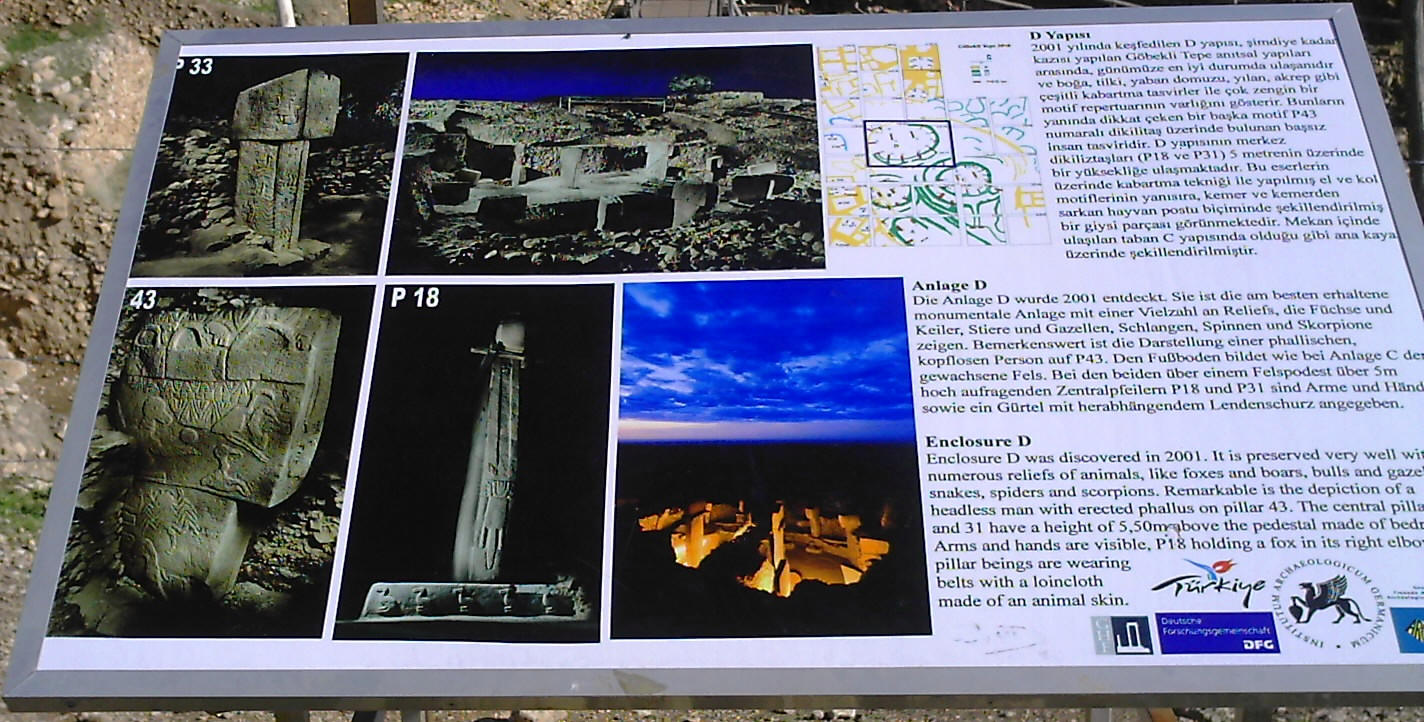
Gobekli Tepe- One of the signs explaining Enclosure D.
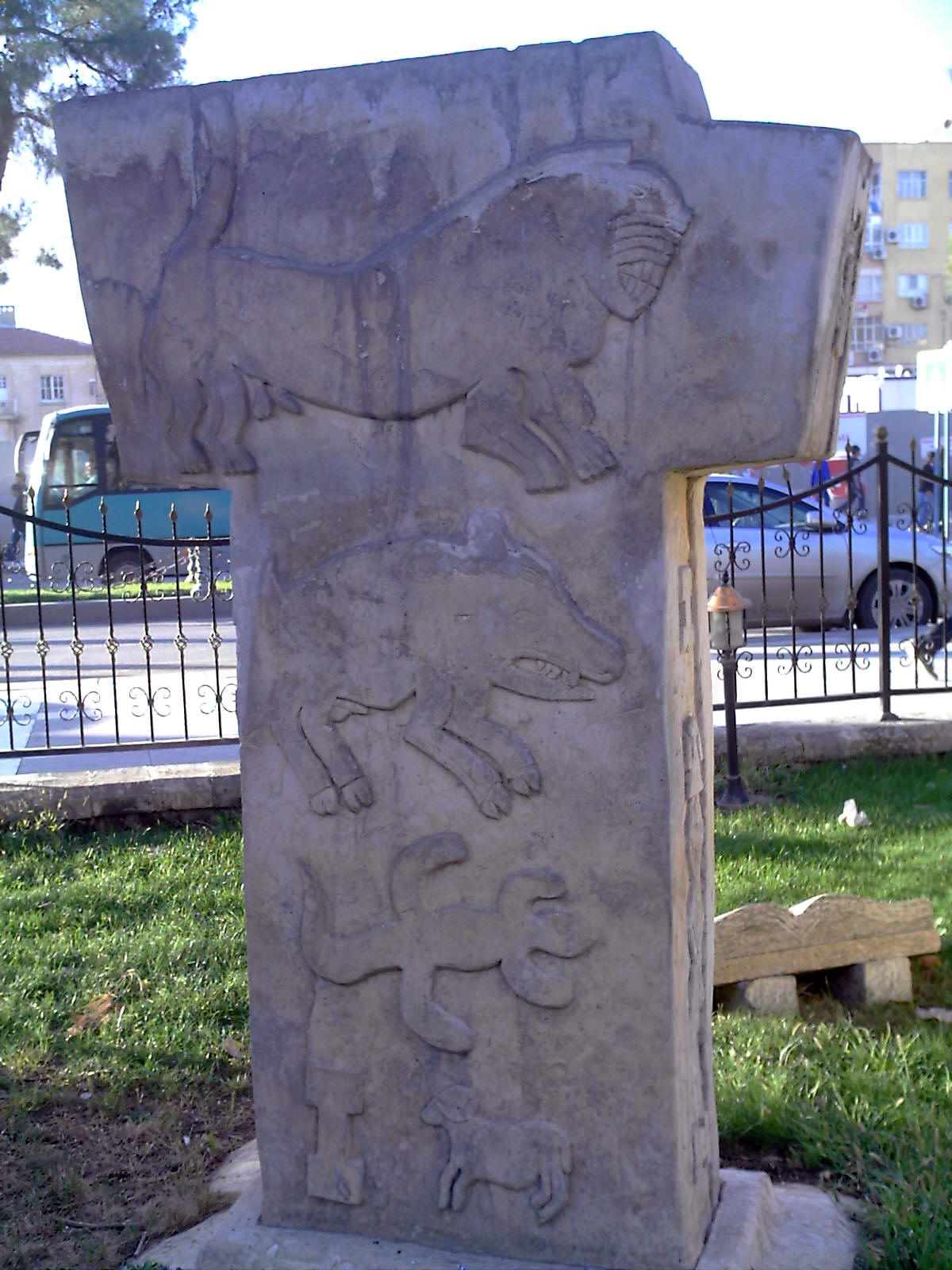
Urfa - Replica of Gobekli Tepe column on display in Culture Center
garden.
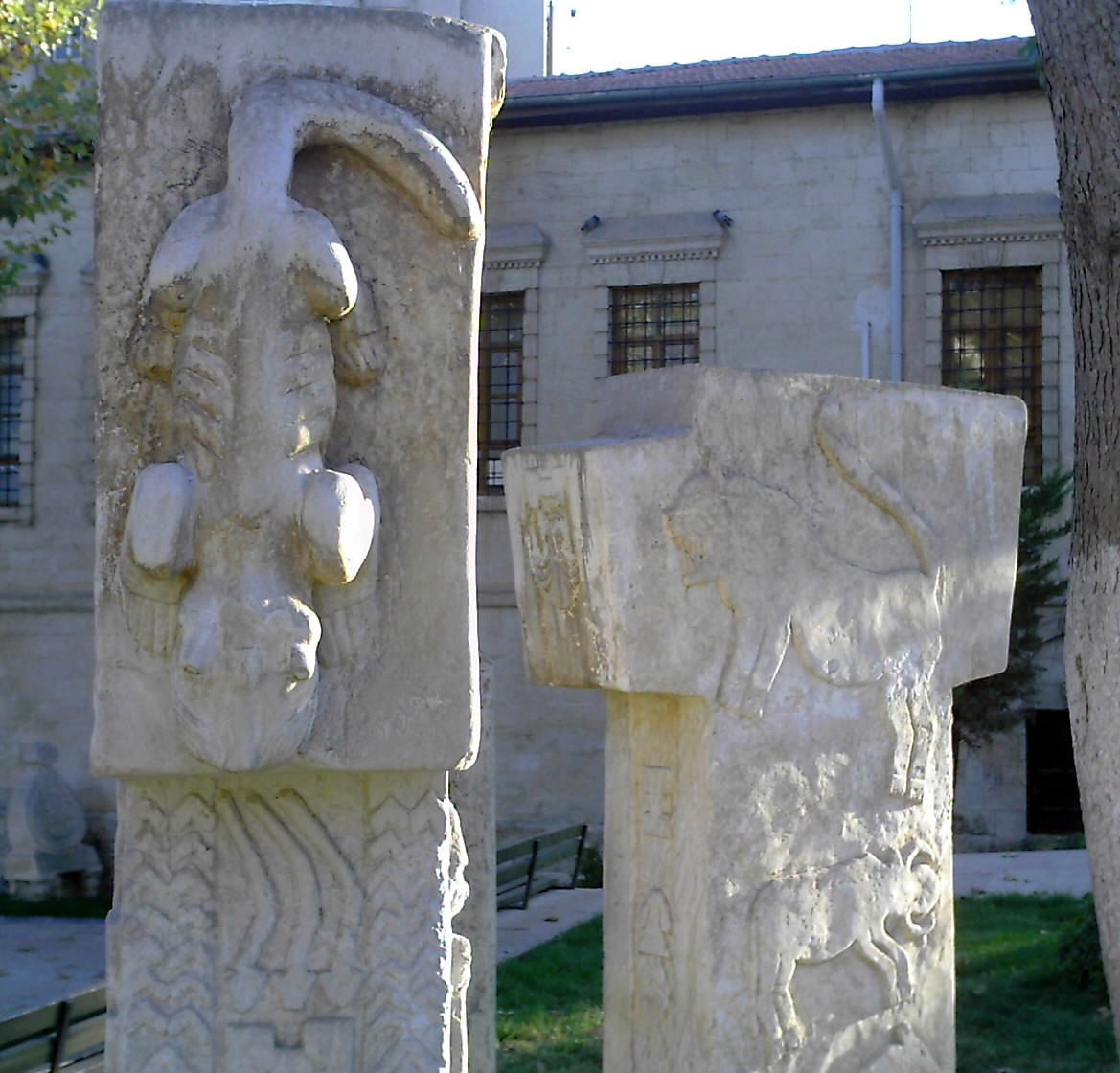
Urfa - Replica of Gobekli Tepe column on display in Culture Center
garden.
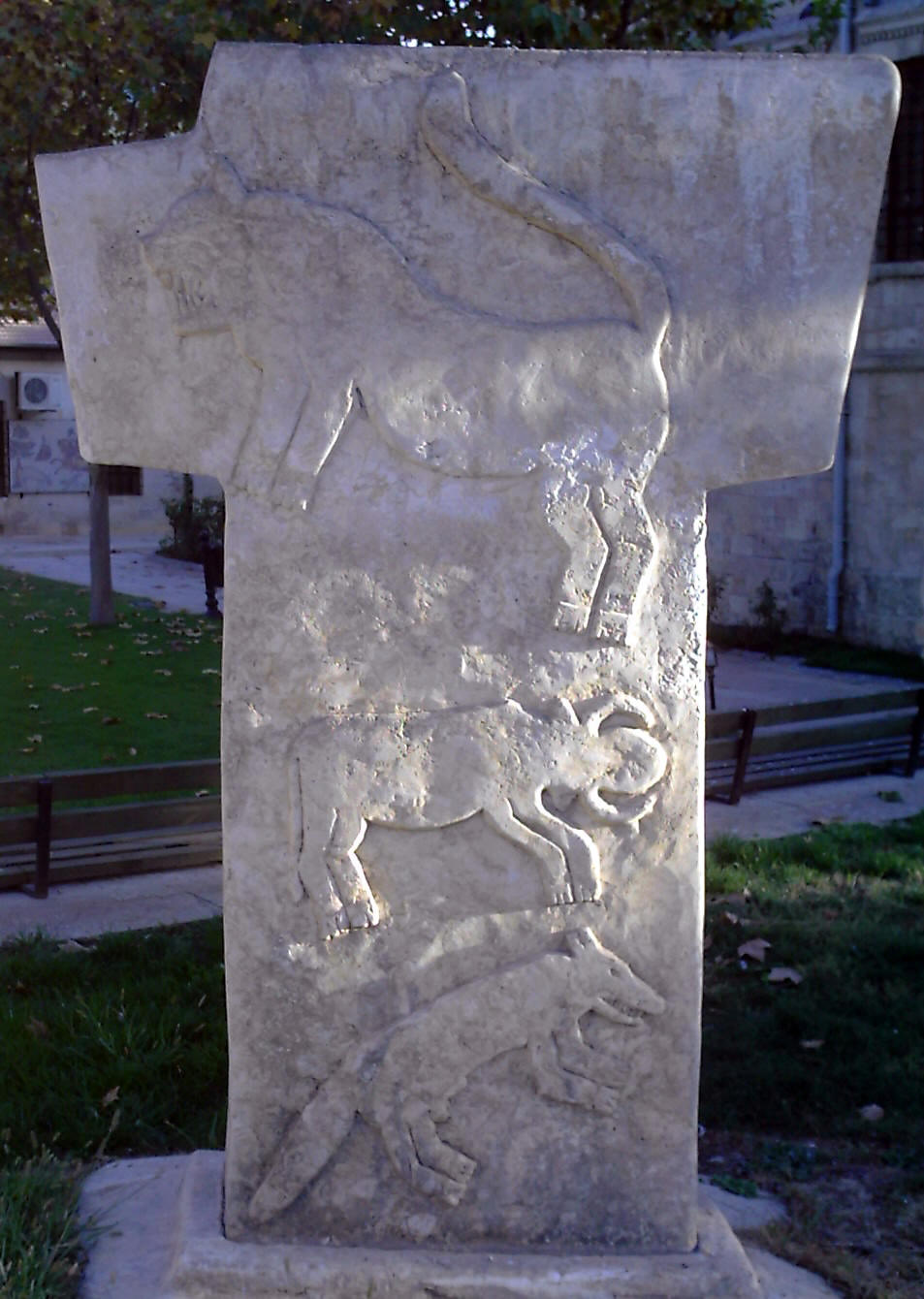
Urfa - Replica of Gobekli Tepe column on display in Culture Center
garden.
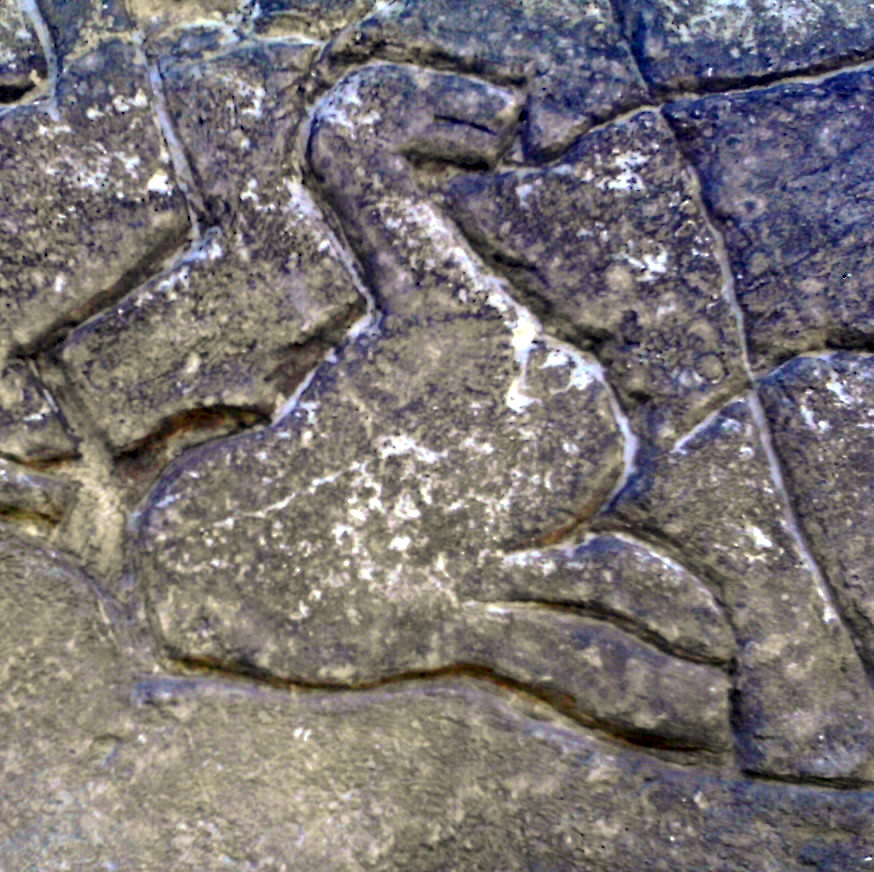
Urfa - Replica of Gobekli Tepe column on display in Culture Center
garden.
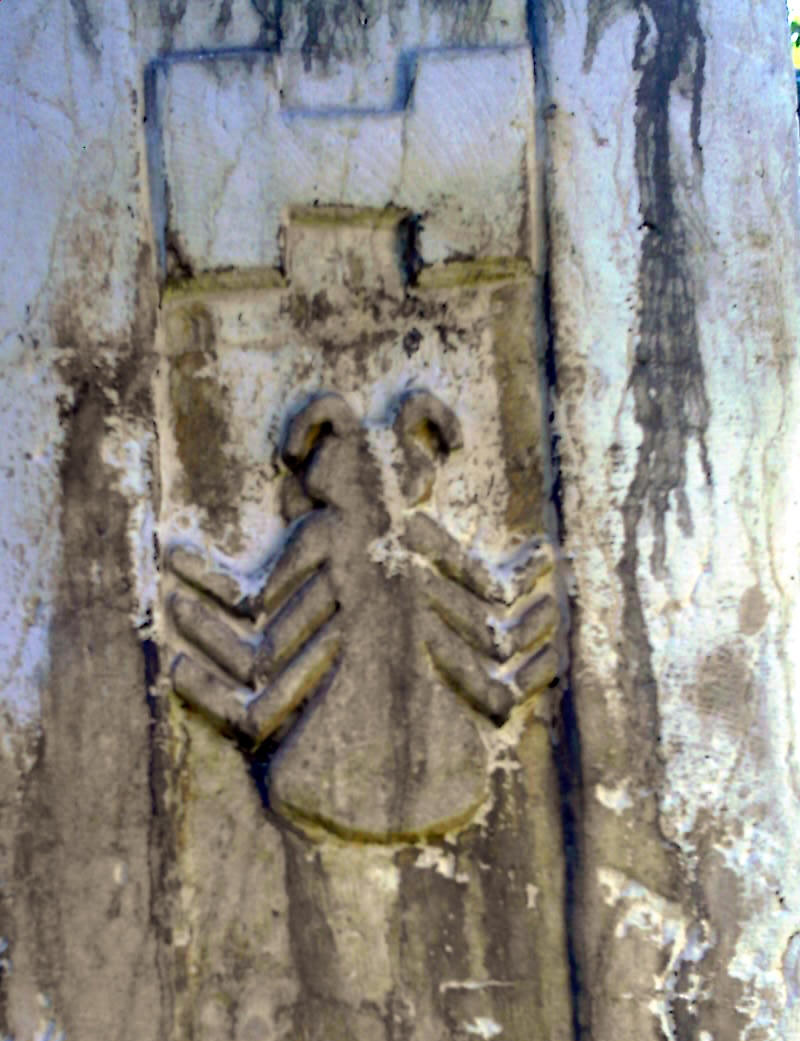
Urfa - Replica of Gobekli Tepe column on display in Culture Center
garden.
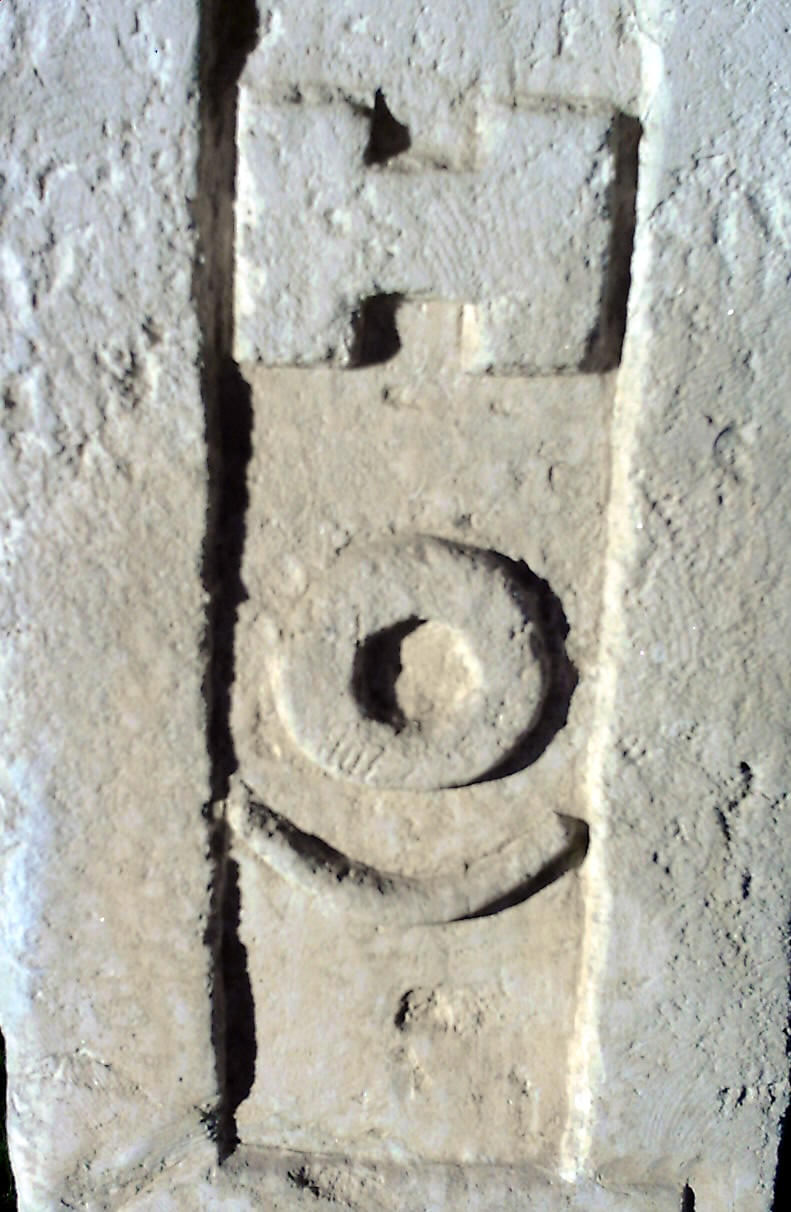
Urfa - Replica of Gobekli Tepe column on display in Culture Center
garden.
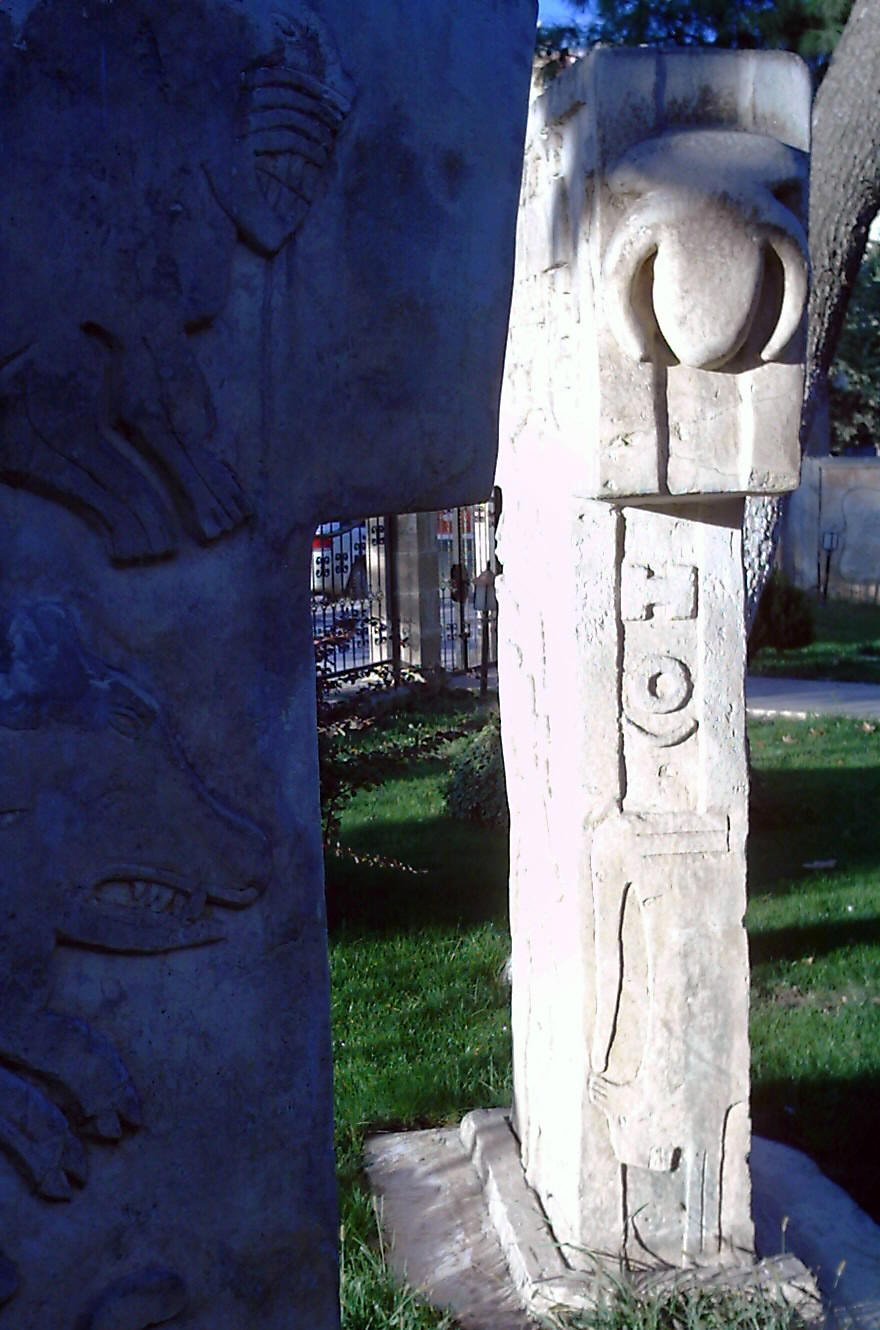
Urfa - Replica of Gobekli Tepe column on display in Culture Center
garden.
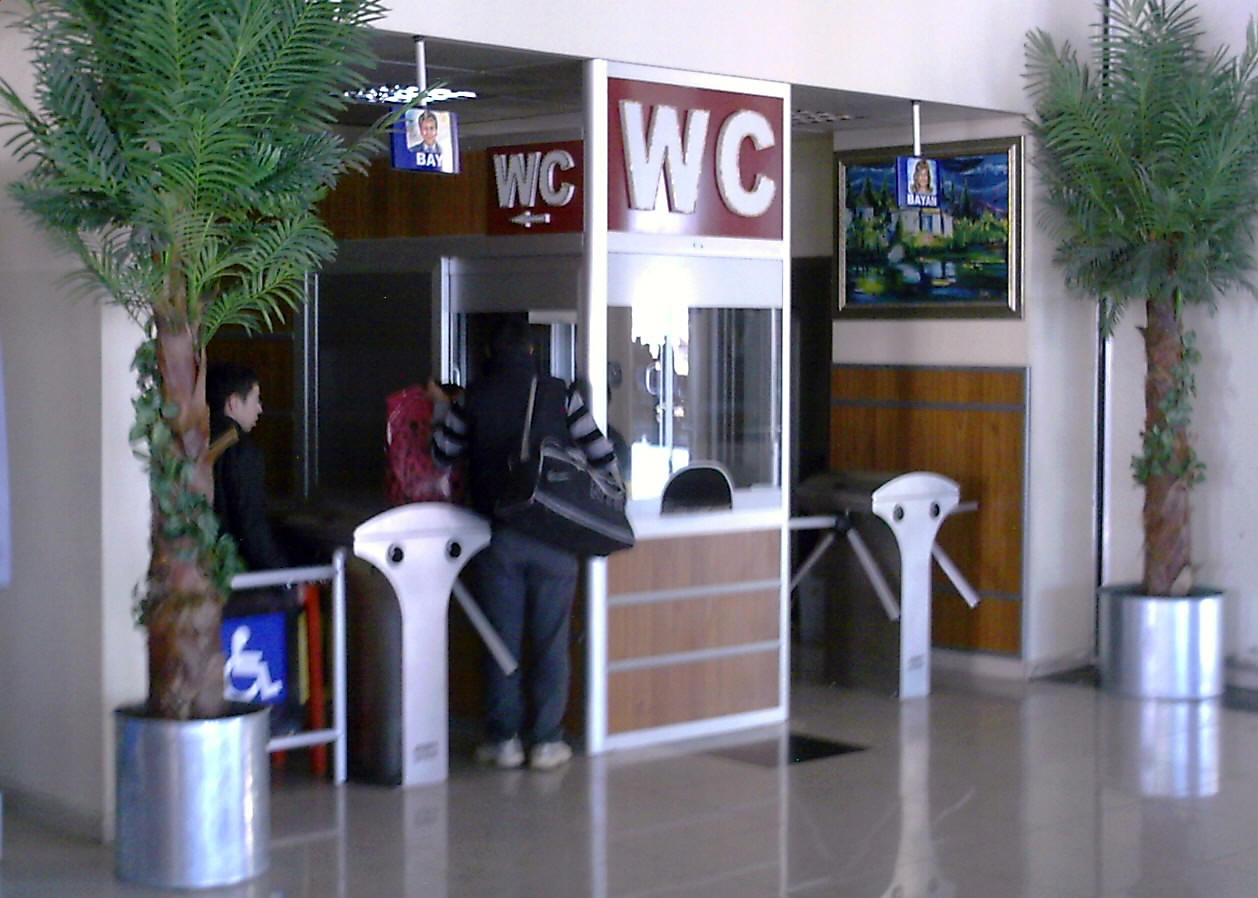
Urfa- All public toilets require a one lira payment for use... all over
Turkey... must be a national law!
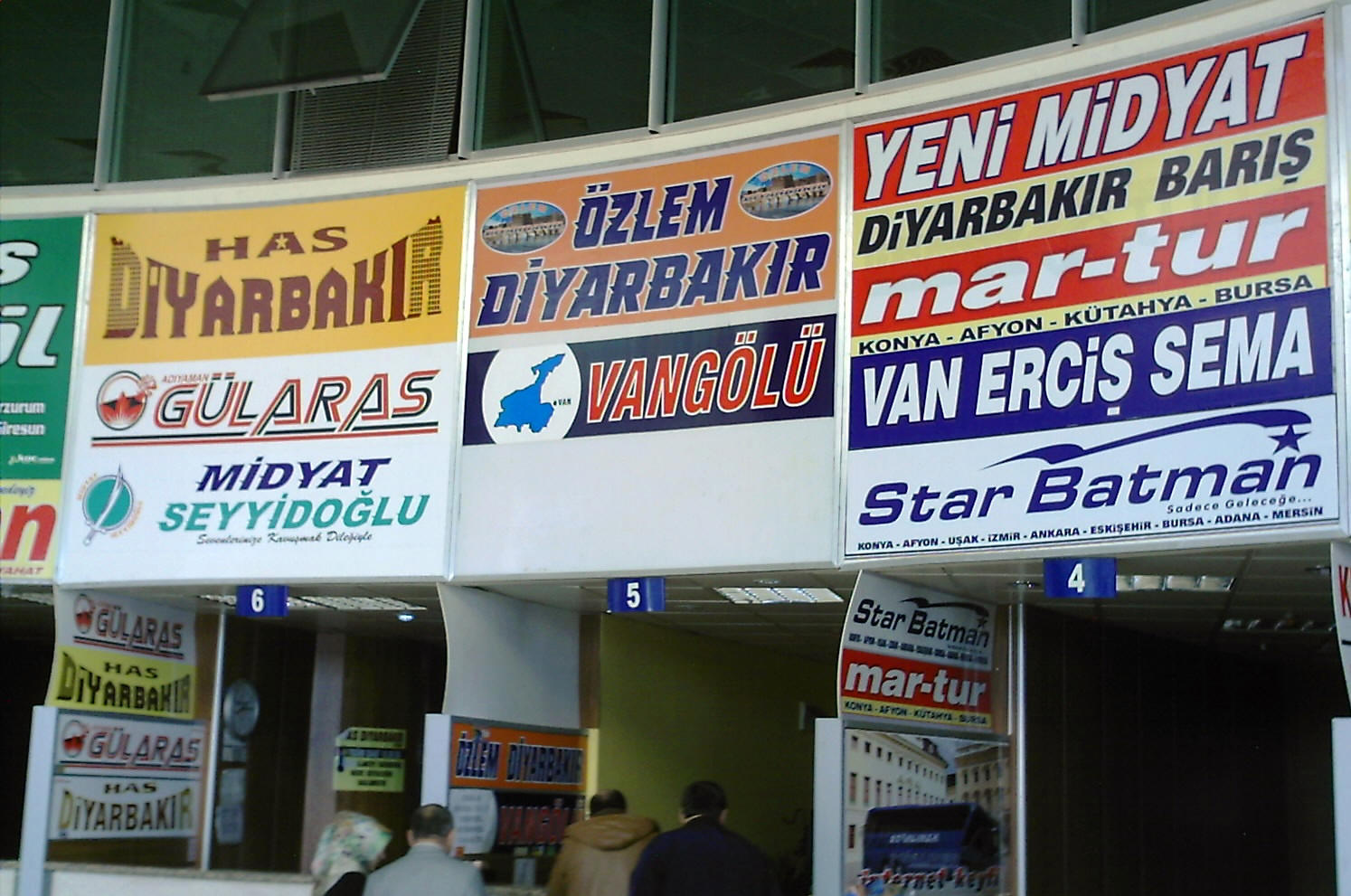
Urfa- Some of the intercity bus service agents with booths in the main
otogar.
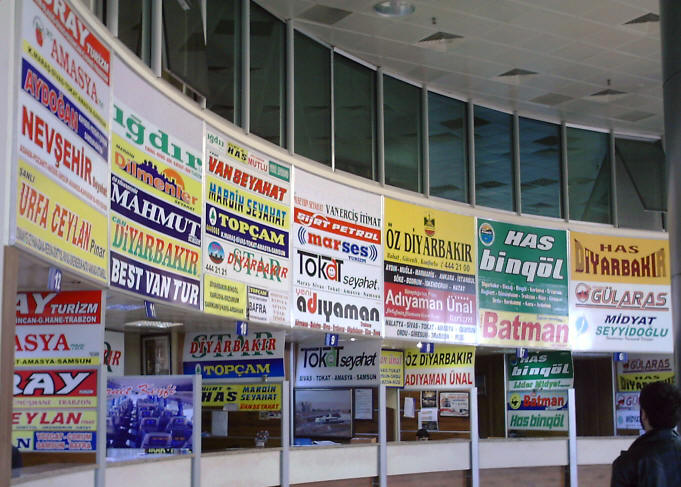
Urfa- More of the intercity bus service agents with booths in the main
otogar.
|
   1 December
2012 1 December
2012
Few people outside Turkey have ever heard of
Urfa or SanliUrfa. I am here in order to visit the fabulous archaeological site of Göbekli
Tepe, a twelve thousand year
old temple connected with the domestication of
wheat (Watch this hour and half long YouTube
documentary; it is amazing!). But the city of
Urfa
itself has many attractions.
After all, it is the traditional
birth place of the prophet
Abraham or Ibrahim as he is known to Muslims and plays other
important roles in Biblical history. A large park below the
cliff top Urfa Castle in the north-east
corner of the city contains a cave said to be the traditional place of
his birth. Abrahams Cave is a tiny dark hole chopped
into the cliff face at ground level. The actual cave is hardly
visible today, being surrounded by a
modern marble entryway and a protective glass viewing window.
One would think the founder of the Western world's three great
monotheistic religions would have had a more auspicious
beginning, but that small hole in the ground is where it all
started.
Within the
same park also is to be found the Abraham Pool which legend says
holds the water
created by God when Nimrod tried to throw Abraham into a fire
for teaching monotheism. According to
the myth, the fire was miraculously turned into
water thus sparing Abraham's life and the hot coals became fish.
So honored is the myth, today law protects the fish and it is a
serious crime to molest them. As the pools and canals connecting
them have limited dimensions, it is a wonder the confined school
has not experienced a population explosion. It is certain they
will not starve to death as an endless mob of mostly children
are constantly feeding them a special "fish food" sold by
countless venders throughout the park. I took
photos of course.
Climbing the hill above the city one day I explored the ruins of the
castle from which legend says Nimrod attempted to stamp out the
"one god" heresy being promoted by the prophet Abraham. While there, I had one of my most memorable
experiences. A group of junior high-school girls and their
English teacher decided to take advantage of the opportunity to
converse with an actual live native English speaker: me.
Mostly giggling, they struggled to formulate questions in
English and I obliged by searching for simple answers in
English. At one point someone asked if I knew of the Koran and
when I admitted to even having read it, the religion teacher
accompanying the group suddenly materialized and led an enthusiastic round of applause for
the enlightened infidel. I suppose they figured someone had
converted me. When I started taking my pictures everyone wanted
to get snap shots as well with the strange white haired foreigner
included in their photos.
My research into background information for Göbekli
Tepe near Urfa where I
stayed most of the time
produced an avalanche of useful materials. During an extended search I
discovered this
excellent article in the
December 19, 2011
New Yorker magazine. Rich in supporting evidence it describes
what has been learned from the archaeological site and how
the new insights augment earlier conclusions about the ascent of
mankind from prehistoric times. Even if you have no interest at
all in the Turkish ruins, the implications for understanding our
human condition make reading the article worthwhile. Additional
information from this
National Geographic article is both entertaining and enlightening. Finally,
a scholarly
eighty minute video
by filmikz.ch-Gobeklitepe adds a credible speculative
dimension to our understanding of this amazing archaeological
bridge. Be sure to compare the 3-D model of the original
temple structures created for the film with
my photographs of the
actual archeological ruins as they exist today.
But, as usual I get ahead of my story. The ten
hour over night bus ride left
Goreme at seven PM and arrived in
the outskirts of
SanliUrfa a
half hour before 5AM. Snatching a few
minutes sleep now and then, the trip passed quickly. When the
bus belched us all out at a still deserted bus terminal this
predawn early hour I could see no indication of anyway to get
into the city center and no one, and I mean NO ONE spoke a
stitch of any of the several languages I can use in desperate
situations.
PERFECT. Now a real adventure is unavoidable. The other
passengers all seemed to have made sensible previous arrival arrangement
and most were gone from the scene almost immediately. Alone on
the deserted arrival platform I started my exploratory wandering
around the dimly lit periphery of the arrival lot and soon
spotted human activity down the hill. This turned out to be the
overnight garage for the city bus system and
drivers loitered about making preparations for the start of their work
day. Following the roads around the perimeter of the intercity
bus terminal complex I eventually found the driveway into the city bus
garage and cautiously wandered in.
The first bewildered guy I surprised clearly wanted to help me
solve what ever improbable problems I must be having at this inhuman,
still dark
hour out here in the middle of nowhere. With gestures and a
mangled pronunciation of the city name, SanliUrfa I made him
understand I wanted to get into the center of the city and Saint
Serendipity intervened.
Palpably
anxious to understand my need... and HELP, he figured out my
charades, walked me over to a particular bus about ready to
leave, made the driver comprehend my problem and then
motioned for me to get on, grinning with satisfaction. As I fumbled with
my wad of Turkish lira, gesturing questions about paying a
fare, both men good naturedly waved my payment offer off and indicated I should
just sit down... which I did.
After a ten minute drive, clusters of store
fronts suggested we had
arrived in the downtown part of the city where the driver stopped
at another smaller bus assembly point and made me understand he needed to
wait a few minutes before starting his regular run. When we did
get going he periodically gestured for me to stay seated until we
had reached a specific place in town, where upon he opened the
door and waved me out with something in friendly Turkish that must have
been the equivalent of "have a nice day."
Now on the
street in what appeared to be an area catering to tourists I
wandered wide eyed until I spotted a tiny bakery already open
and strolled in hoping to find one of those delicious sesame
bread rings called
simits. Sure enough this beaming guy proudly sold me one of
his still warm pastries for about twenty cents worth of lira and I left
thrilled at such good luck to continue my wandering mission. I later learned
the bus
had been one of the every five minutes circular R-1 ring route
buses, a system I quickly learned to exploit in my exploration
of the inner city.
The starting point selected by my bus company guardian angles
this morning gave me a good look at many tourist hotels close to
the major attractions clustered in this area. Abraham's Park
is a focus of
tourist activity. Abraham's Pool
in the park teeming with thousands of holy carp attracts
hoards of foreign tourists as well as a steady stream of locals. Religious pilgrims from all
the Abrahamic faiths come here to see Abraham's cave, said to be
the actual place of his birth. With an endless choice of benches, the
park is a pleasant place to sit a while and watch armies of
people marching by.
The first hotel I selected
boasted five stars
and a manageable room rate of 144TL ($80), so I took a room in the
Hotel
El-Ruha as the best value of the three I'd checked that first
morning. At breakfast
I eagerly sampled all the dozen or so different cheeses
offered. The sheep milk cheese tasted unusual, but pretty good
for an odd food. That got me to wondering what other mammals
milk would be made into cheese.
I've heard of camel cheese; are there
others? Humans are mammals, too. What about human milk cheese?
Checking the Internet this is
what came up!
While I spent a winter in North Dakota with 5AM milking
responsibilities, I have a hard time imagining how anyone would
go about milking
whales,
but there are people who do it evidently. I'm
still amazed by the discoveries possible
when thinking outside the box! However, it is getting more and more
difficult to ever have a truly original thought. If I can think
it, someone else earlier probably has already thought it! Back
to the subject at hand, the
Turks do like their cheeses... and olives! Breakfast buffets
always include generous selections of both... and strong sweet tea
served in tiny juice glasses. Meat for breakfast is always
baloney and lots of it. Diners are sure to find several kinds of
bread and a half dozen kinds of sweet spreads that predictably
includes honey... usually served with the comb for a waxy chew.
After four nights in the El-Ruha Hotel
without WiFi in my room I decided to try a different lodge. The
60TL
Hotel Guven
looked like a bargain on first inspection, but service limitations and
an anemic breakfast prompted me to abandon the place after a
single night, moving a block north to the 70TL four star
Hotel
Harran where I spent the remainder of my two weeks in the
city. The Harran needs better maintenance, but at only $39
some compromises are not unexpected. The first two rooms they
gave me had
serious problems with no hot water and no Wifi. The third room
in the back tower solved most of the problems well enough that I
stayed on for ten nights. While in the Harran I usually walked
over to the
Gulhan Restaurant for their lunchtime cafeteria selections.
The Turkish food menu satisfied my curiosity about the cuisine
at reasonable prices.
I am still running into evidence of racial
prejudice against the Kurds in Turkey, even here in Urfa which
has a large Kurdish minority. This morning I chatted with Serdar Aoci
who runs the City government tourist information center and
learned he is Kurdish. As he speaks better than passable English
I took the opportunity to explore his impressions of racial
relations in his country. With little encouragement he related
several experiences where he felt his Kurdish heritage
had resulted in prejudiced treatment; some bureaucratic process
which would be no problem for other Turks suddenly became
impossible or very difficult for a Kurd. As our conversation
progressed I became aware of subtle signs of his increased agitation.
Always a gentleman he remained completely rational, but a
tightness in his voice betrayed an undercurrent of suppressed
emotional feelings. I too know the feelings of being treated
irrationally from rejections I experienced as a young father
being told by a landlord he had no vacancy as soon as he learned
we had a new baby in our family.
I'm taking a lot of pictures during my long stay in this
interesting city. The
first batch features reminders
of experiences in and around the hotels... and that eventful
visit to Urfa Castle where a gang of teenage girls and their
English teacher excitedly pounded me for information about my
"fascinating" life and views of Turkey and its people. Another
day during one of my walks I came upon the Urfa Cultural Center and
its garden full of archaeological replicas. Out came my trusty GoGear camera for
this collection. I have enjoyed
several strolls through the gardens of Abraham's Park and Pools.
Yesterday I took the time to record some of what I'd been seeing
during my strolls. Here are the
photos.
The main reason I came to SanliUrfa is because it is only
twenty-five kilometers from the world's most ancient
archaeological find: Gobekli Tepe. After many aborted attempts
to find public transportation up to the digs from the city and finally
acknowledging twenty-five kilometers is no longer a practical
day hike, I finally made arrangements with the Ministry of
Culture tourist information agent, Mr. Serdar Aoci to take me
there... and tell me what he knows about it... using
understandable, if somewhat Kurdish accented English.
Using Serdar's personal car we headed east for the road to the
archeological site, but first detoured to pick up his younger
brother currently waiting for a
geography teaching job to make use of his
recent university degree. The twenty-five minute drive
took us through rolling hills interspersed with fields of cotton
and corn. The archeological site itself is located in a
remote rural area; the closest village is four kilometers away. Having
devoured dozens of documentaries and traveler reports of the
site, I pretty much knew what to expect as I eased out of the
car onto the cleared area serving as a parking lot.
At the very edge of the
graveled parking area the first of the ancient
artifacts became obvious. What it is, no one is quite sure. I
speculated it might be an ancient hot tub carved into the bed
rock or a decorative fish pond. Scattered over the smooth
slightly curved bed rock surface dozens of bowl shaped cavities
suggested containers or grinding mortars to me. As this area is
hardly mentioned in the Internet reports I'd studied, I spent
quite a while examining the unusual stone work. Finally
satisfied, I followed Serdar and his brother, Serdaf on down the
well worn narrow path toward the main excavation pits. While images of
the site from my online studies eliminated any surprises, the
actual sight of the first pit struck me as initially
underwhelming.
What I saw appeared to be an unorganized jumble of partially
uncovered pillars and broken stone monuments, many of which
could only be surmised from the protective wooden box coverings
which completely hid the precious artifacts inside. In a few
minutes the reality of an actual ongoing archaeological dig
became apparent and I realized just how privileged I was to be
allowed to visit and study this most ancient of human records.
You will note I have included numerous links to background
materials and various professional informed speculations about
the origin, relations to other ancient evidence and purposes of
this enigmatic cluster of clusters of what seems to be a sacred
place of worship or celebration. One researcher speculated
Gobekli Tepe might be the origin of religion itself! All agree
the people made their living by hunting and gathering wild
things. There also is agreement these people predate the
invention of pottery, metal smelting as well as farming.
That raises the question of what tools would have been used to carve the
images seen on many columns. Serdar stooped down and presented
an obviously flaked/knapped piece of flint about an inch and a
half long with a very sharp edge. Amazed, I took the ancient
cutting tool and closely inspected it to be sure it actually had
been manufactured by human hands. No doubt about it. The long
sharpened edge needed a designer and a skilled artisan to
produce such precision. Any doubt about it soon disappeared as Serdar
stooped again to present me with a second example much like the
first. Now, I started looking for the peculiarly shaped orange colored
rocks and soon found a couple more myself.
The grounds around the
archaeological dig are literally covered with scraps of flint
like those Serdar found. As impressed
as I by
our finds, Serdar noted: "Many tourists take rocks like those
away as souvenirs... despite signs forbidding it. It is hard to
enforce such rules." he added with a sly conspiratorial grin. In fact, there is only one caretaker on the
premise unless an excavation is in progress. Most researchers
speculate flint knives like these could have been used for
shaping and carving
the stones.
As we prepared to leave
Savak
(pronounced Shavack), the
caretaker revealed himself to be the nephew of the
old Kurdish shepherd, Savak Yildiz
who
had originally discovered the site
back in October 1994.
Savak
proved to be a
delightfully charming guy, relating his role, with Serdar's
translation help as caretaker of his uncle's discovery for
almost two decades now, obviously a bit uncomfortable with the
notoriety it has brought him.
As Savak chatted with
Serdar I started taking my pictures of the guys, noting
especially the peculiar "upside down shirt" baggy trousers
called shalvar
worn
by most older Kurdish men. As Serdar is also Kurdish I asked him why
he wore western style pants. "They are more convenient when I'm
working, but at other times I prefer the comfort afforded by the
Kurdish style." he replied. The Shutterfly slide show for
my Gobekli Tepe exploration is
here.
This amazing
Samsung Galaxy Note seems to be an everything
gadget. Lately I've been enjoying video chats with a couple
friends who have learned how to use
Google Talk on their computers. It works with all computers
(as well as Android smart phones)
which have built in cameras (most laptops do). Google Talk
makes it possible to conduct free video chats to or from anywhere in
the world. The adventuresome also might want to explore
Google Voice capabilities. With it you get a free telephone
number and the coordination of all your several phones. It takes some
learning, but the effort is worth the trouble.
I have now been here in SanliUrfa for two weeks and will soon
leave for
Mardin,
a convenient jumping off
place into
northern Iraq I am told. During my time here I have twice heard military
level gun fire and explosions while trying to sleep in my hotel
room. On two other occasions flights of fighter jets passed over
our hotel. News reports make it clear this part of Turkey is a
war zone. (Read:
Turkey's Kurdish Problem) Still, people mostly go about their business as usual,
hardly taking any notice of the hostilities occurring around the
periphery of their city. Several informants assure me it is both
possible and SAFE to travel deeper into the Kurdish south
eastern part of the country! The safety is something not obvious from all
the news reports about attacks on the PKK by Turkish military,
but I keep watching the
eKurd news service for relevant information. I'll close
this postcard now so it can go out before I leave for mysterious points
east.
PS:
4 Dec Hello again from Urfa Turkey,
Things are so cheap here I have been seduced into repeatedly
extending my stay... especially since I found the 39 dollar
boutique
Hotel Akgol with excellent WiFi and an actual table terminal
in the lobby
(but with damned
Turkish keyboards and old
versions of Windows XP not supporting QWERTY keyboard change).
Views from the top floor dining room and guest rooms are kinetic
and interesting, but lighting in the bathrooms is woefully
inadequate. Breakfast is the real weak link in the chain
of satisfactions for this hotel: many kinds of olives, a big
selection of cheeses, bread with a half dozen sticky spreads,
hard boiled eggs, a generous pile of unhealthy slices of salami,
tea or powdered coffee, cereal, orange Kool-Aid and a couple
tasteless fried pastry thingies. I won't starve, but I am
looking forward to my next deluxe hotel where they come a little
closer to a Western breakfast.
Rain and predicted more rain for the next few days has
complicated my onward travel planning, but it looks like I'll be
able to make it over to
Mardin Wednesday. As there is rain predicted for many
following days I may be stuck there for a while, but the place
looks interesting enough for an extended hangout.
The observations about other sources of milk for cheese in the
last postcard got a rise out of a couple readers and prompts me
to note I neglected to mention the fantasies I had about
collecting milk from some of the mammals like lactating human
ladies or
whales with their calves. As a teenager I spent a winter on
a North Dakota farm with 5AM milking responsibilities so I have
some direct first hand experience with the process of milking
mammals... of the mooing kind.
PSS: HOTELS
(November-May):
Hotel Guven $33 1 nite
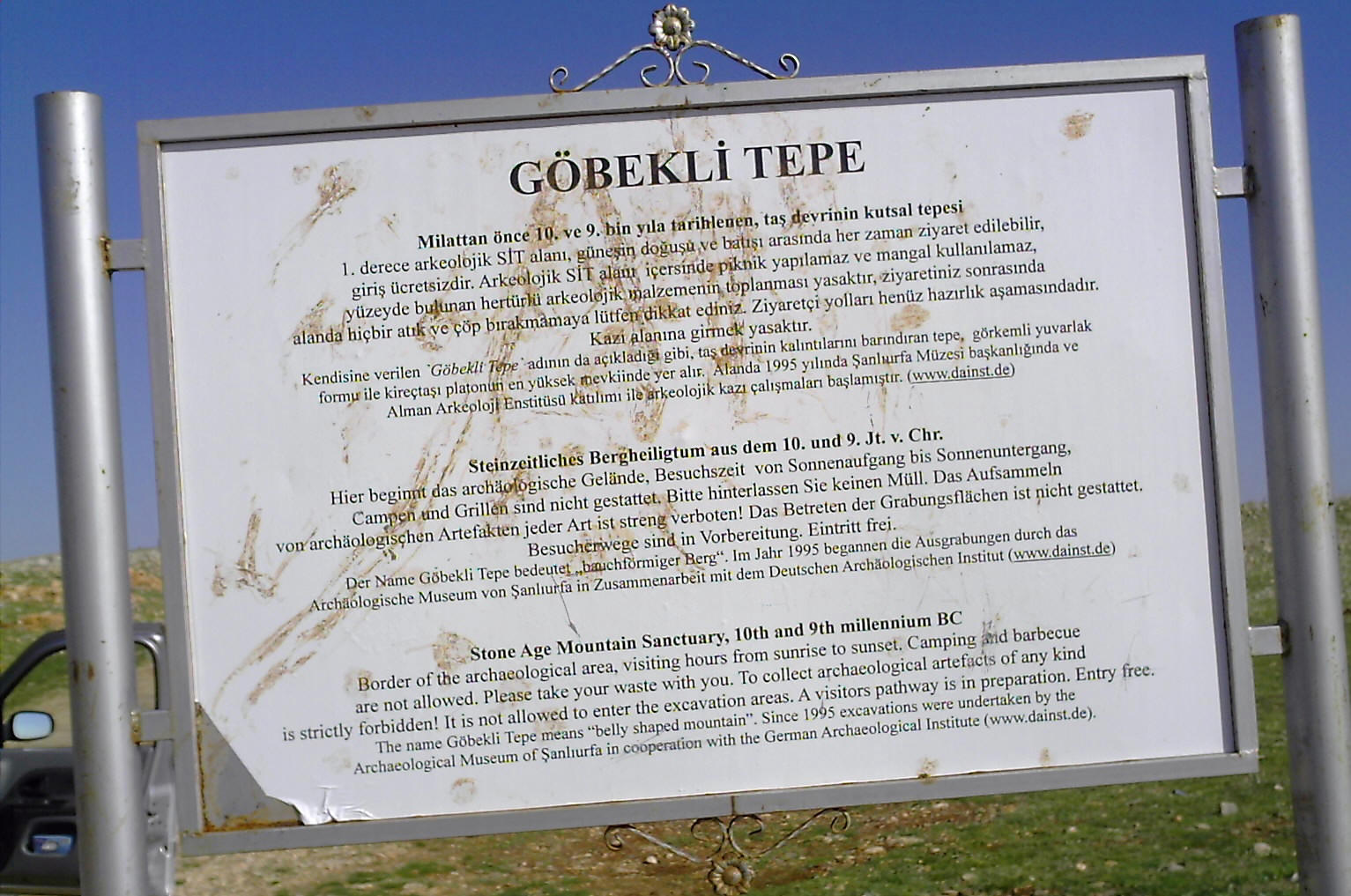
Gobekli Tepe- Sign next to the entry gate explaining the
rules for visitors.
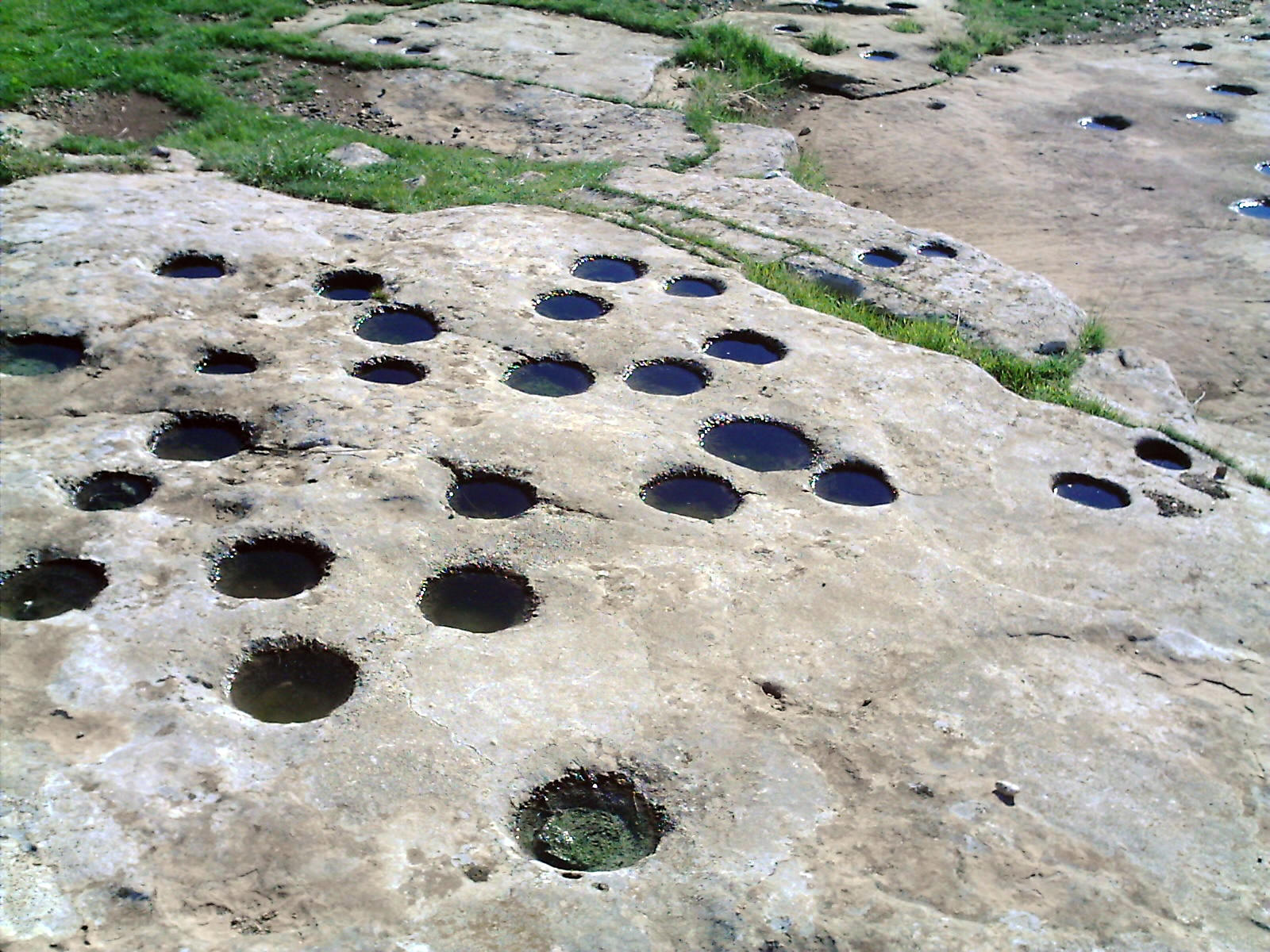
Gobekli Tepe- This is the first artifact cut into the bed rock I saw at the
edge of the parking area.
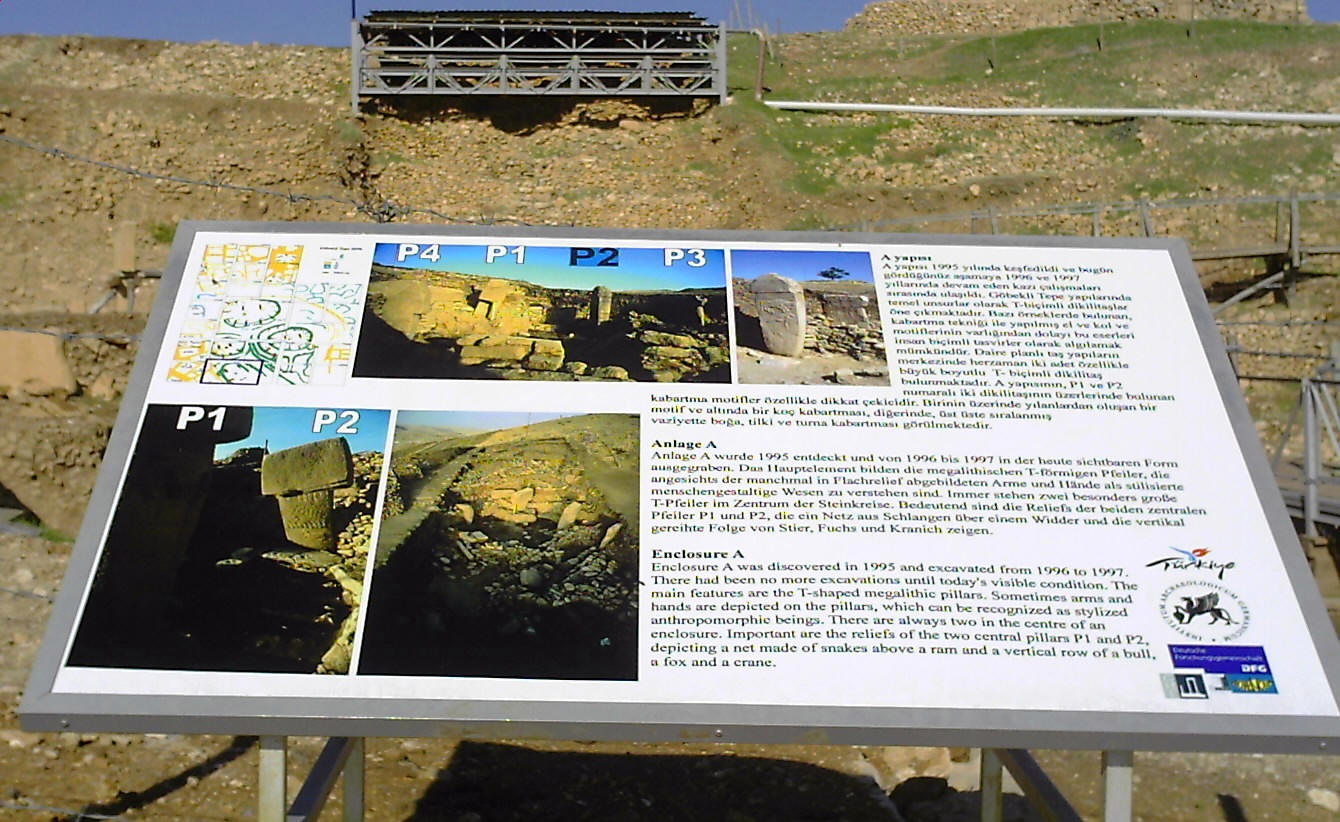
Gobekli Tepe- One of the signs explaining Enclosure A.

Gobekli Tepe- Close up of the text on the entry gate sign.
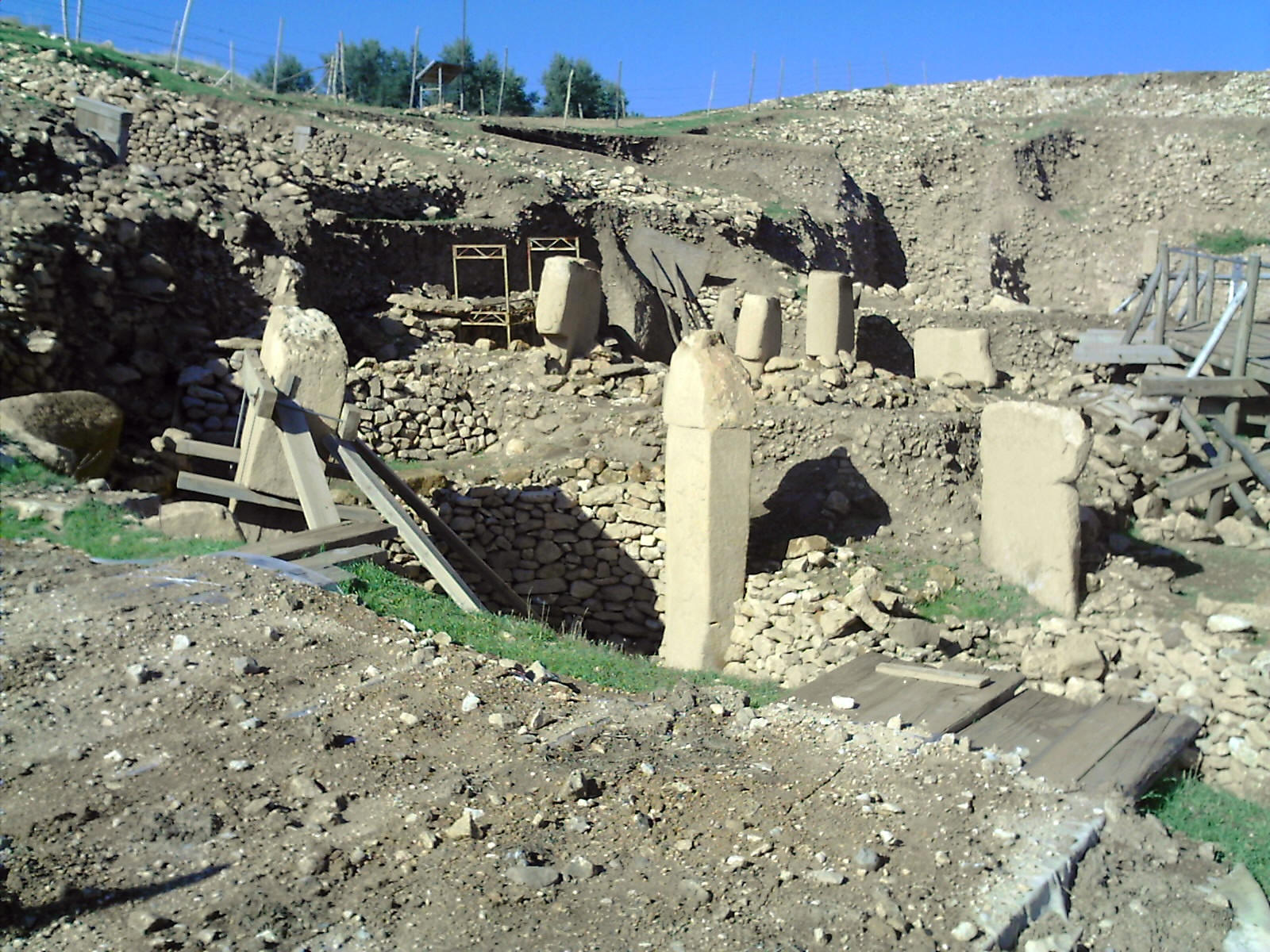
Gobekli Tepe- This is the first pit I reached during my exploration of the
excavation sites.
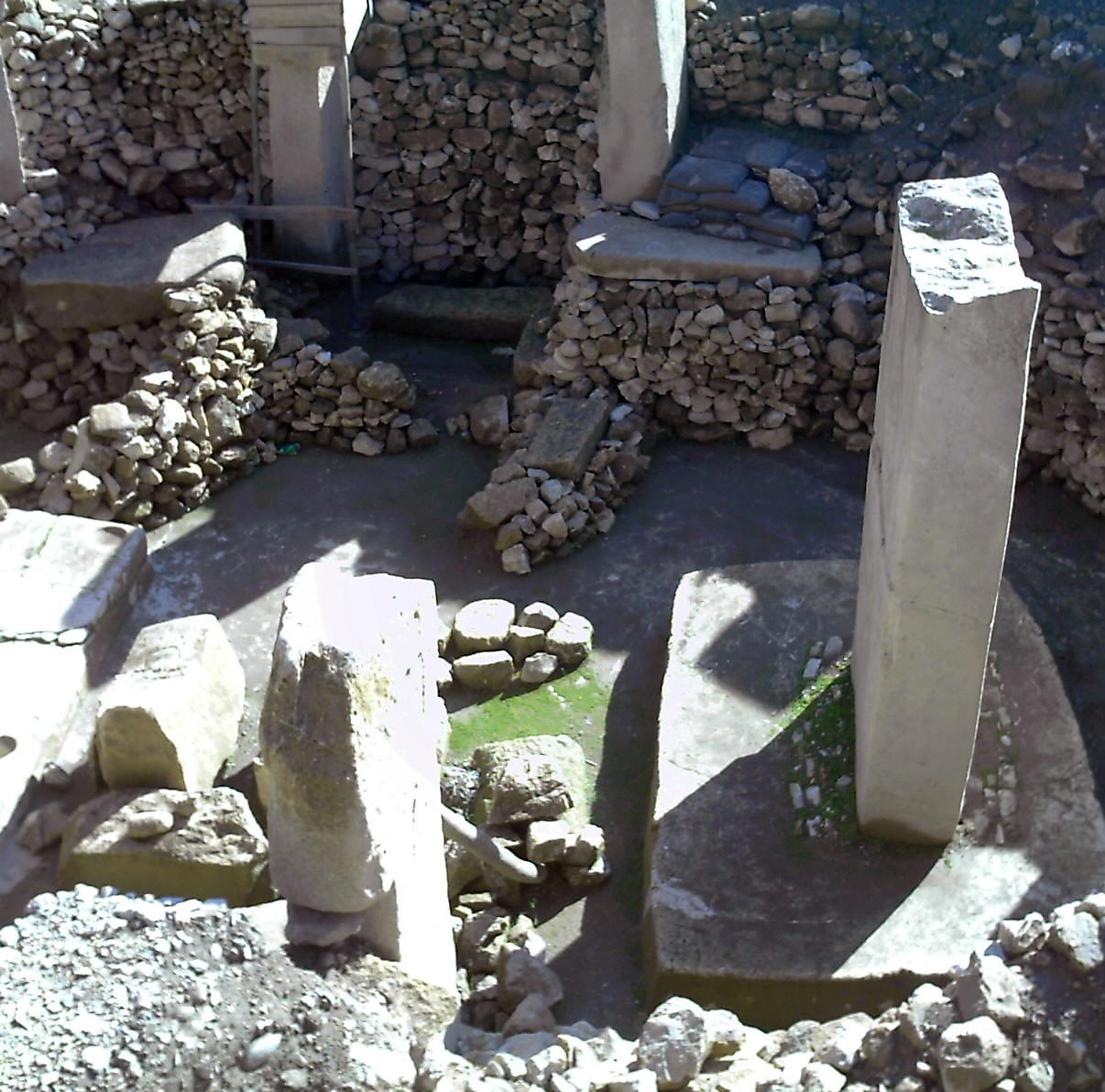
Gobekli Tepe- As I walked around the several
boardwalk systems I snapped frequent record photos. I'll never
be here again.
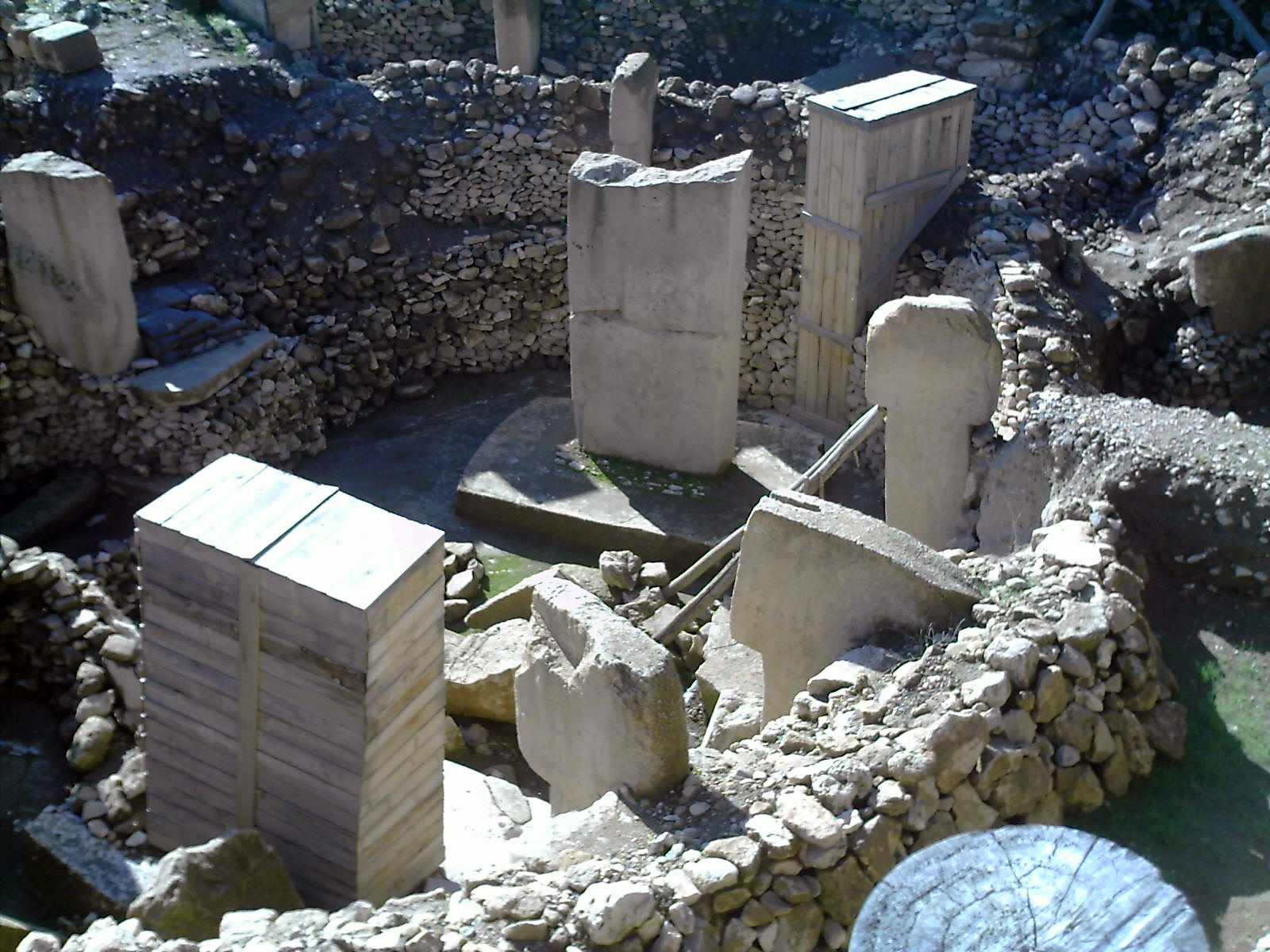
Gobekli Tepe- Many of the fragile structures like
these have been encased in protective wooden cases.
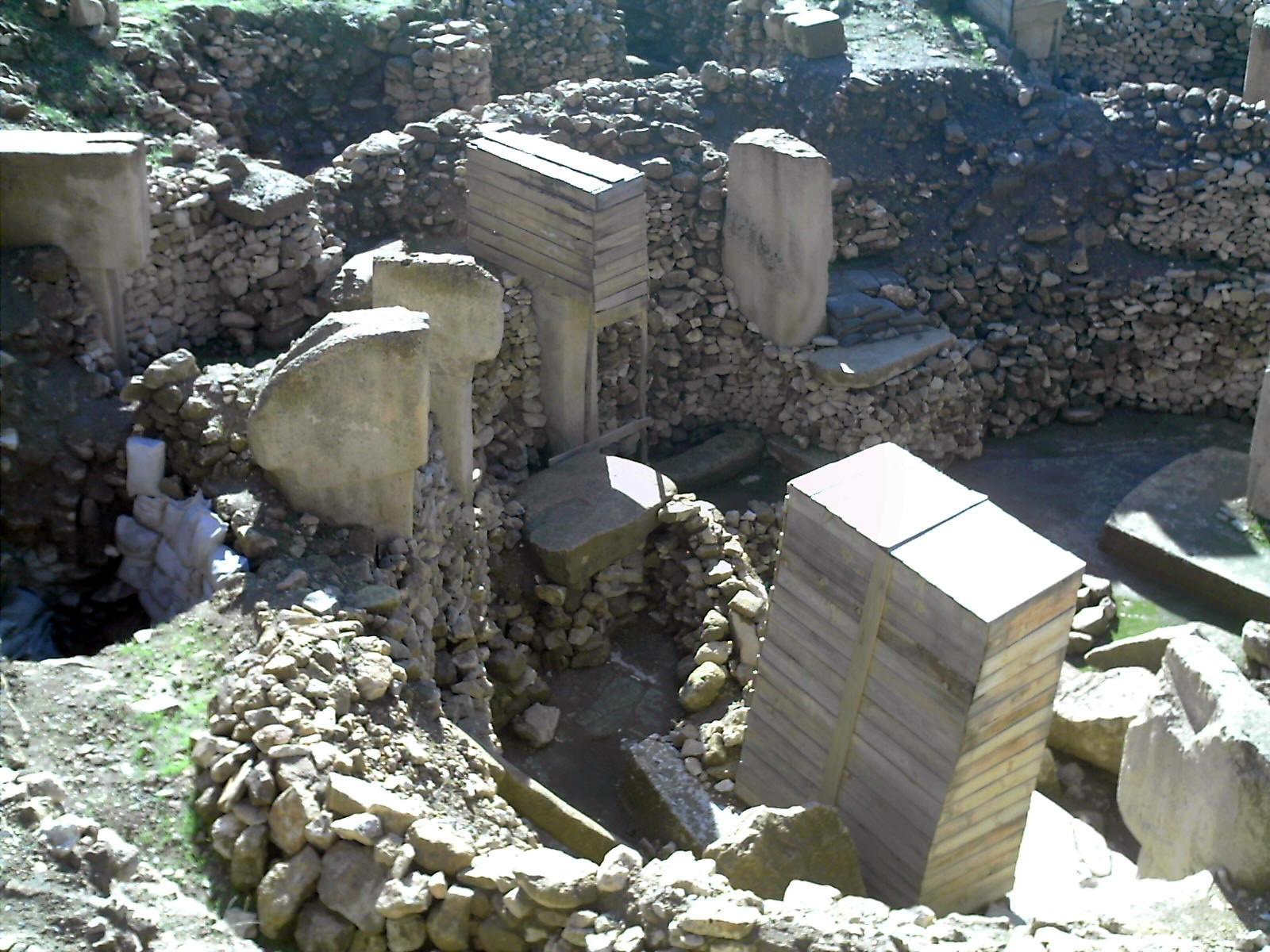
Gobekli Tepe- Many of the fragile structures
uncovered have been encased in protective wooden cases.
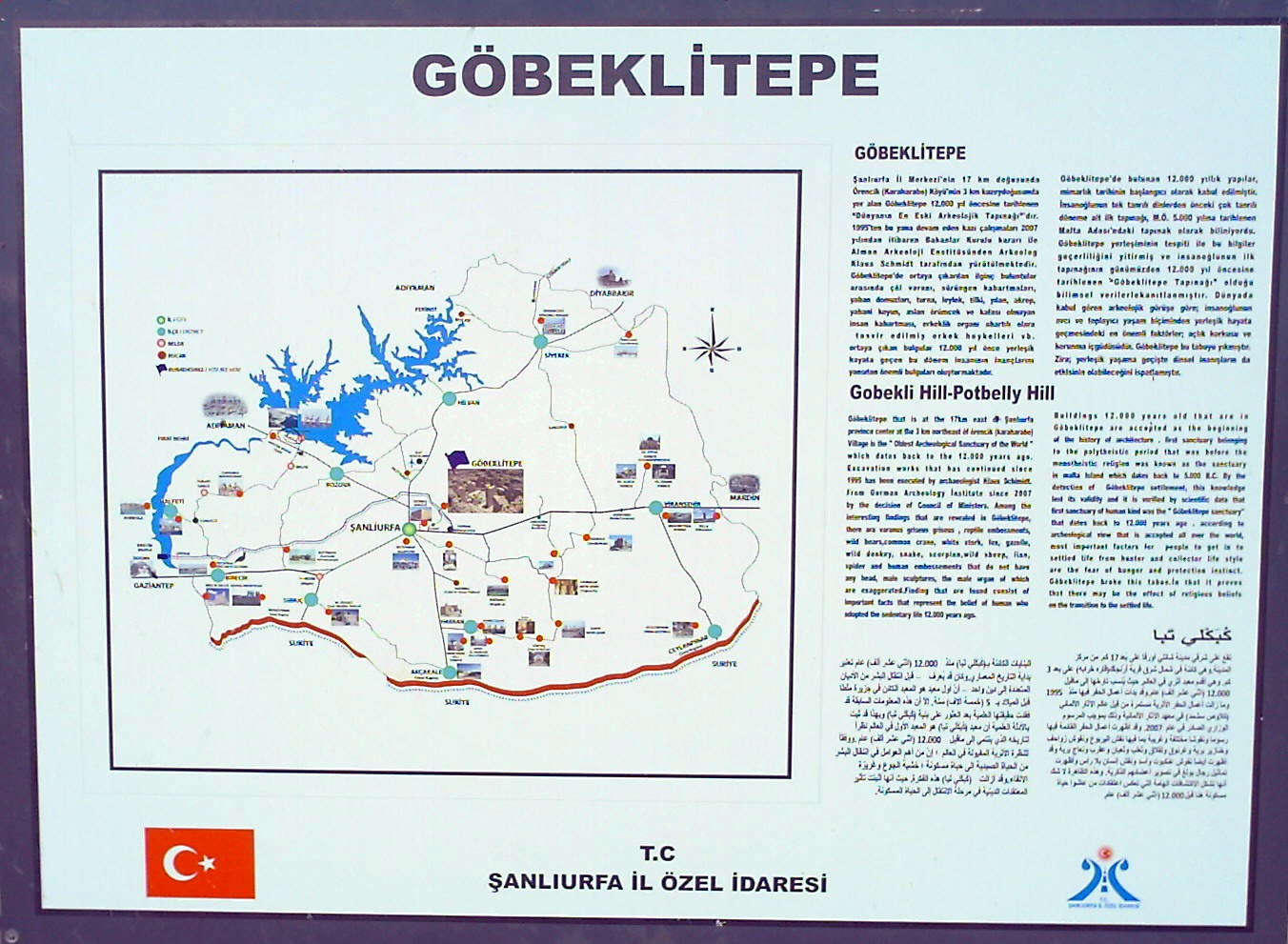
Gobekli Tepe- Sign explaining the origin and meaning
of the name, Gobekli Tepe.
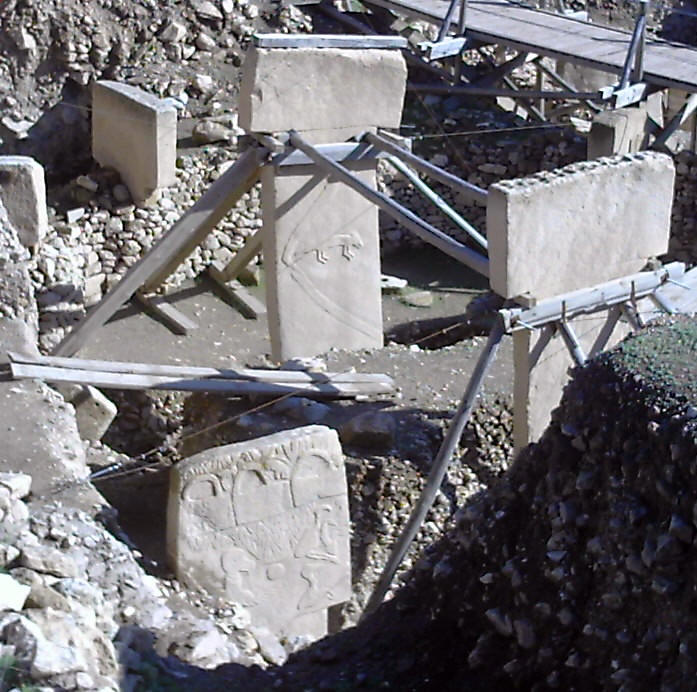
Gobekli Tepe- Steel supports like these have been
installed on some of the more fragile structures in all of the
pits.
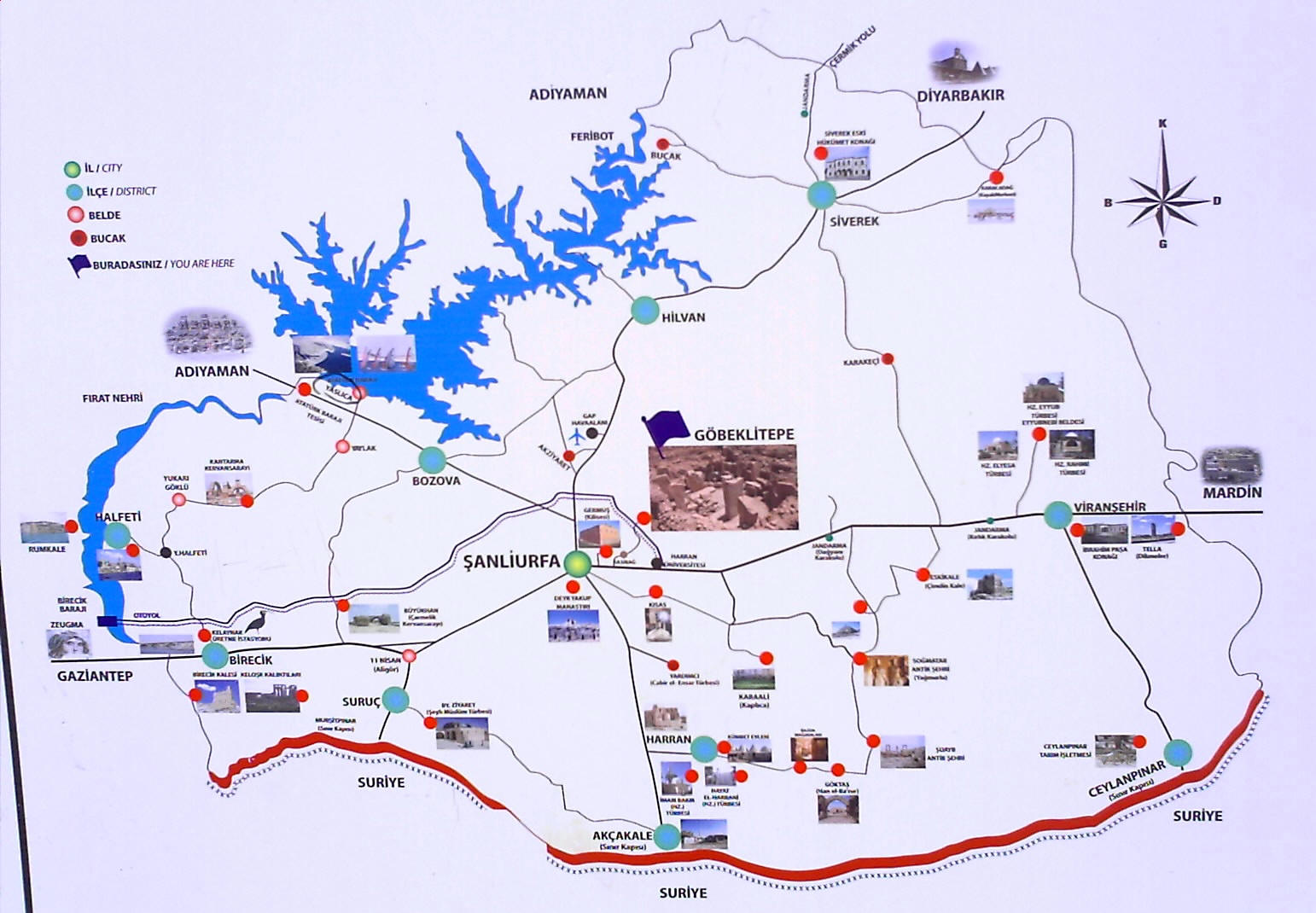
Gobekli Tepe- One of the signs showing a map of the
area.
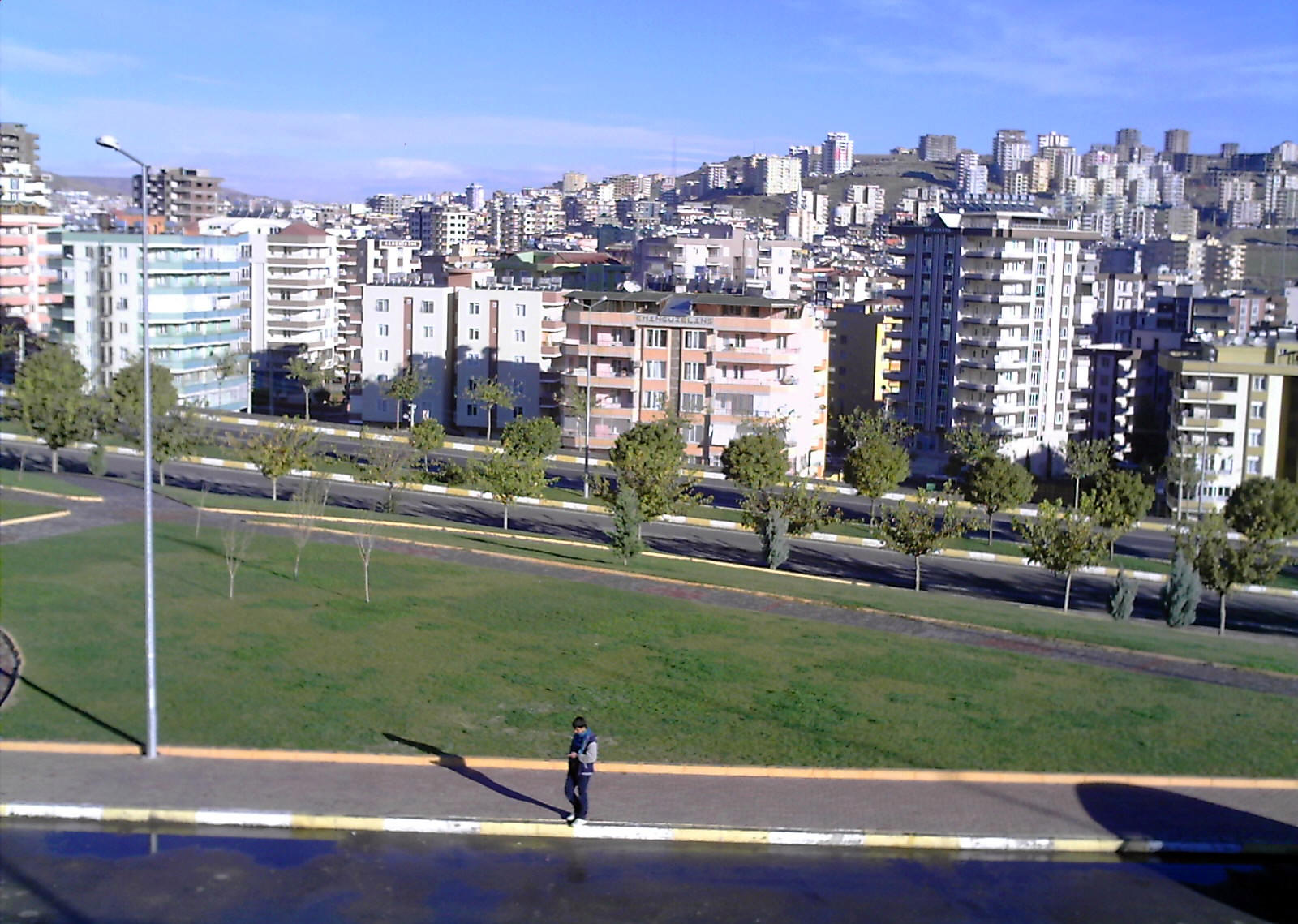
Urfa- Looking north from the intercity otogar or bus
terminal.
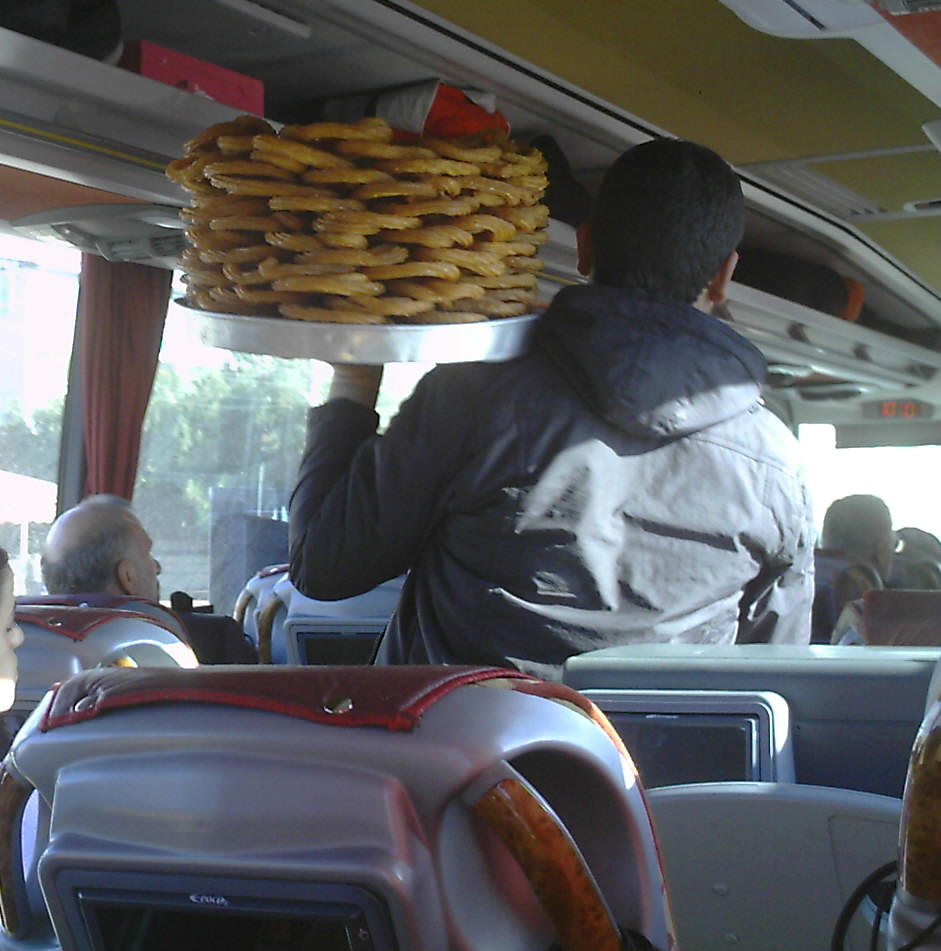
Urfa- Vender selling simits gets on bus just before we departed
for Mardin.
|
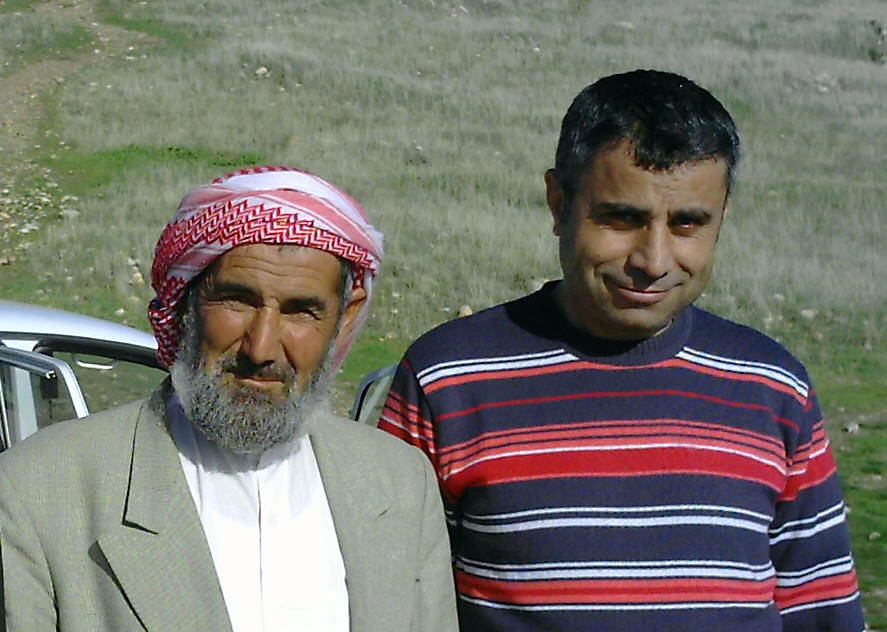
Gobekli Tepe- Caretaker Savak and my guide, Serdar pose for photo.
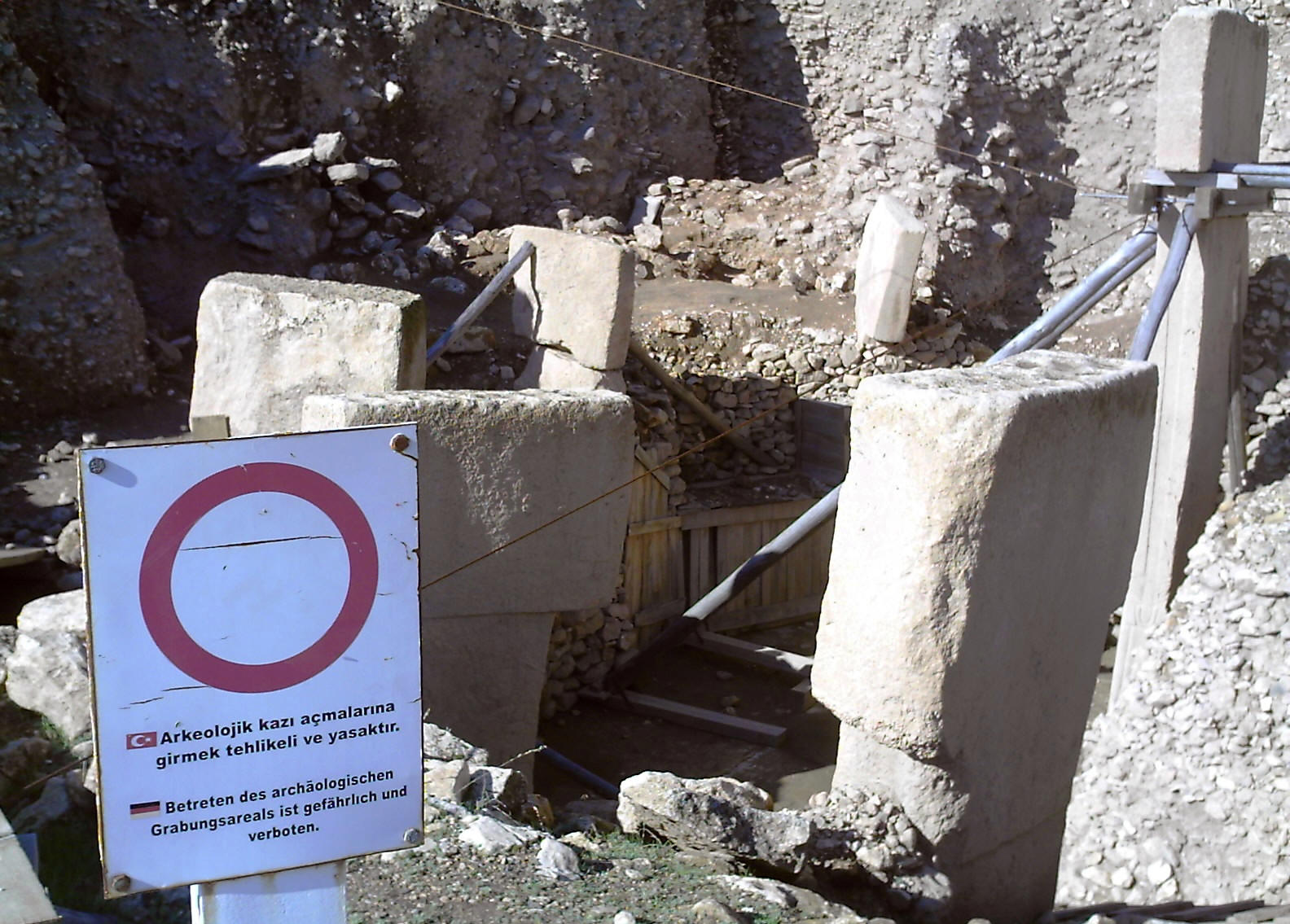
Gobekli Tepe- As I walked around the several boardwalk systems I snapped
frequent documentation photos: I'll never be here again.
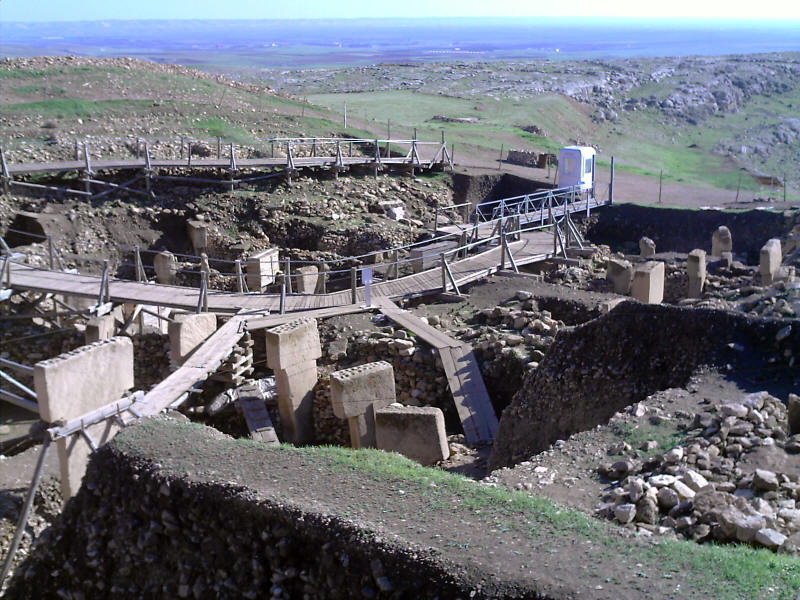
Gobekli Tepe- Board walks like this section wind around the edges of all the
excavation pits to allow tourists to see what has been uncovered so far by
the archeologists.
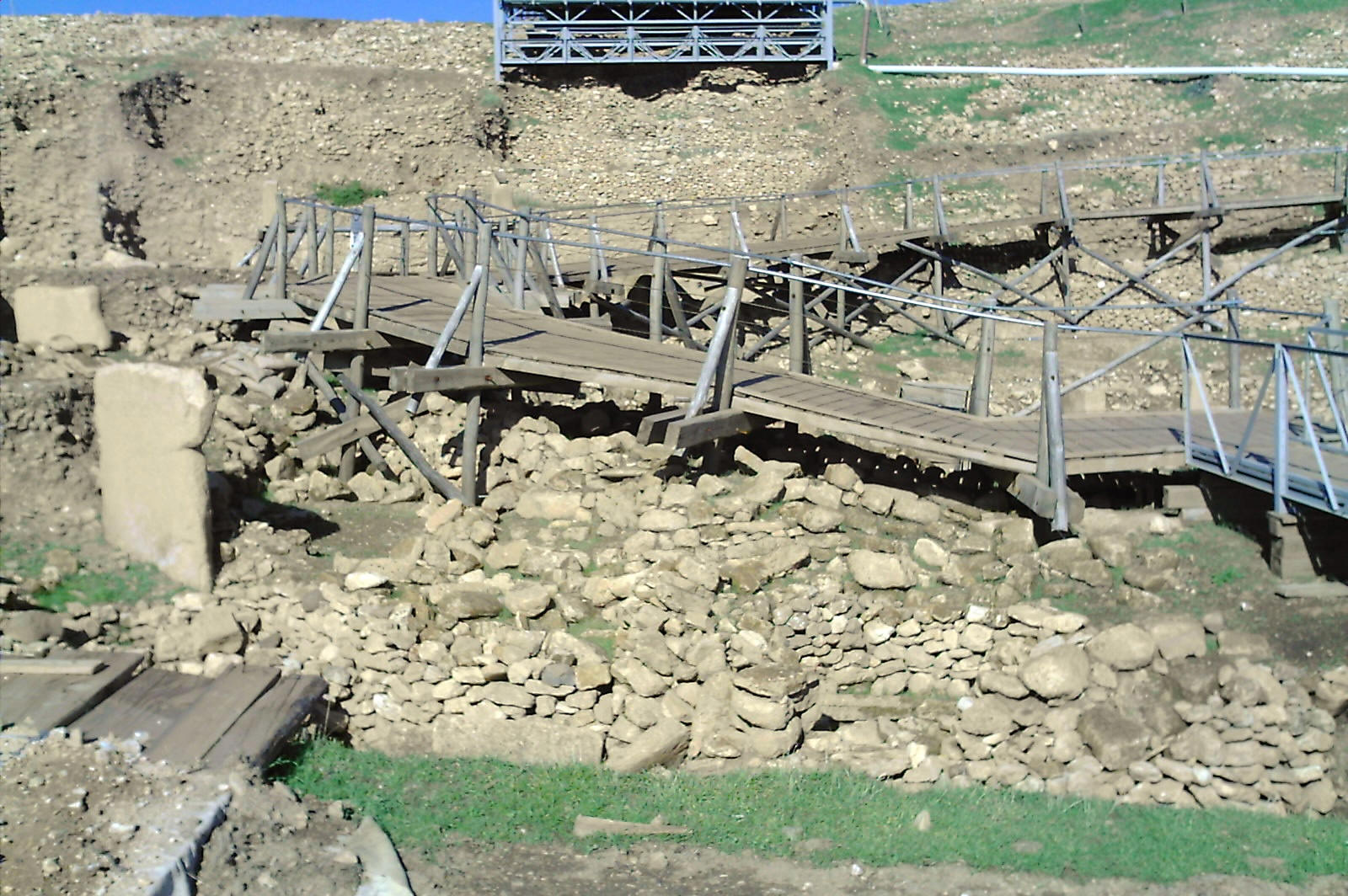
Gobekli Tepe- Board walks like this section wind around the edges of all the
excavation pits to allow tourists to see what has been uncovered so far.
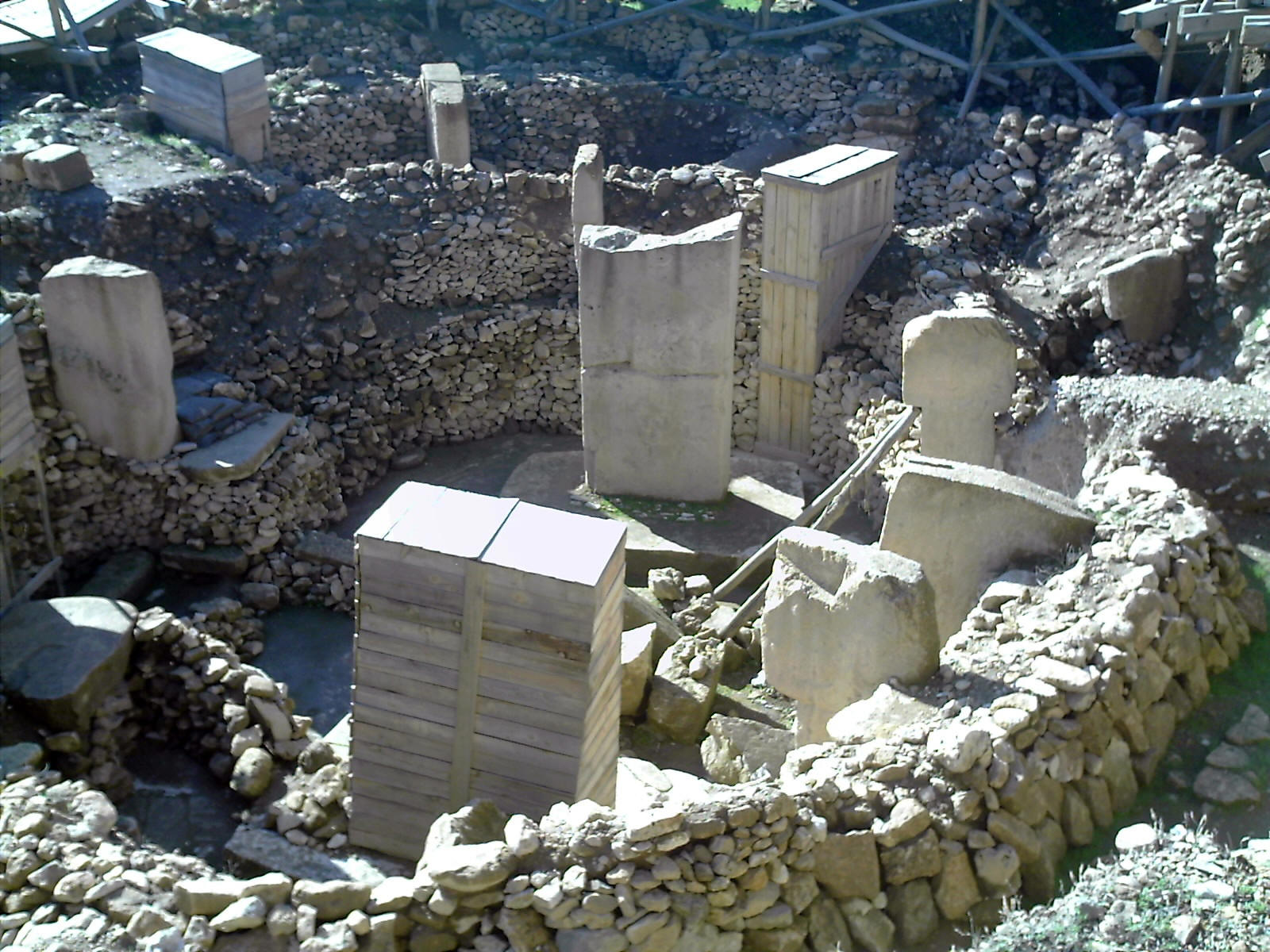
Gobekli Tepe- Examining the ruins from every angle as I walked around the
several boardwalk systems I snapped frequent photos. This is my once in a
lifetime chance.
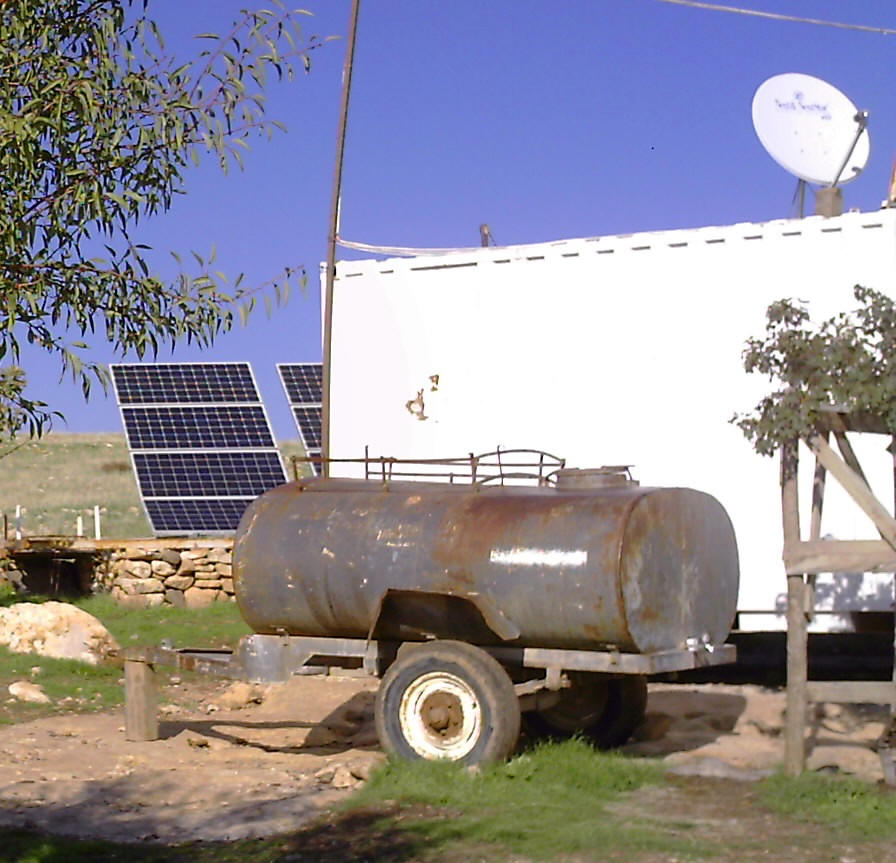
Gobekli Tepe- Large water tank at the caretakers self contained office on
the site. 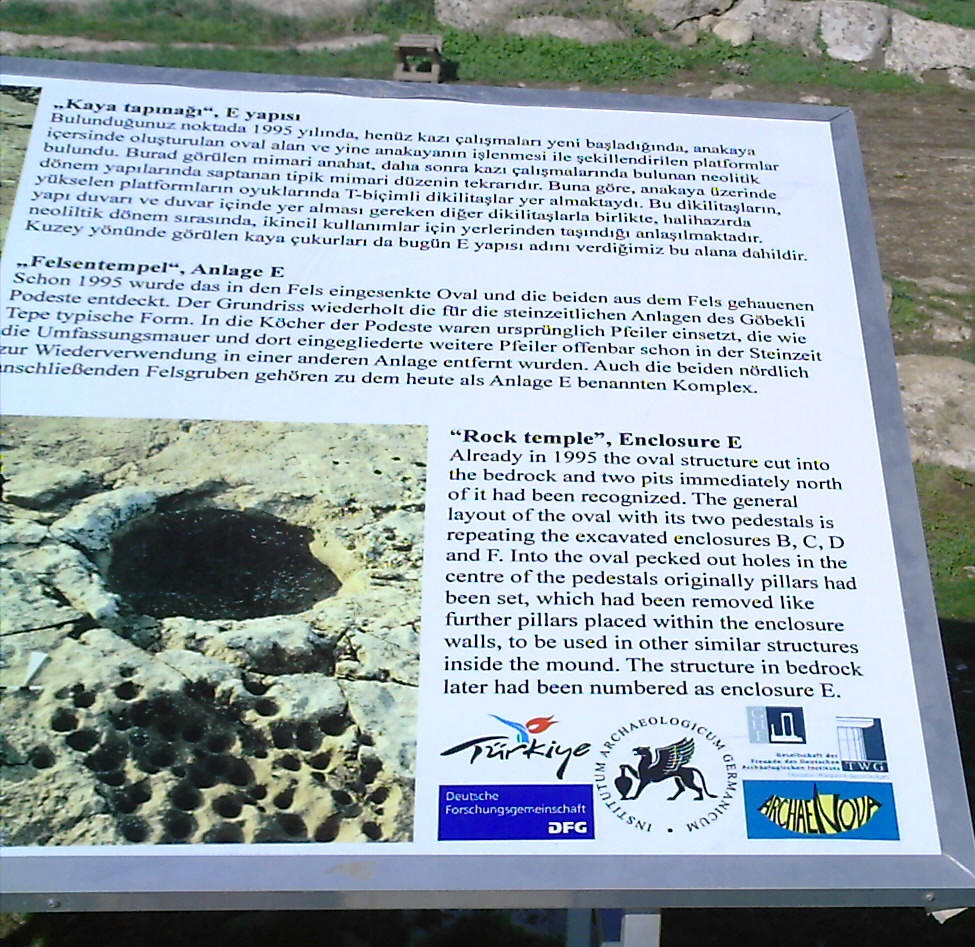
Gobekli Tepe- One of the signs explaining Enclosure E.
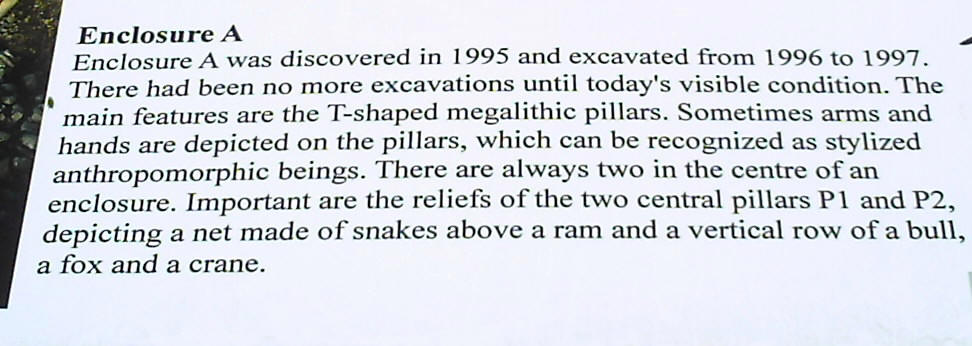
Gobekli Tepe- Close up of the text explaining Enclosure A.
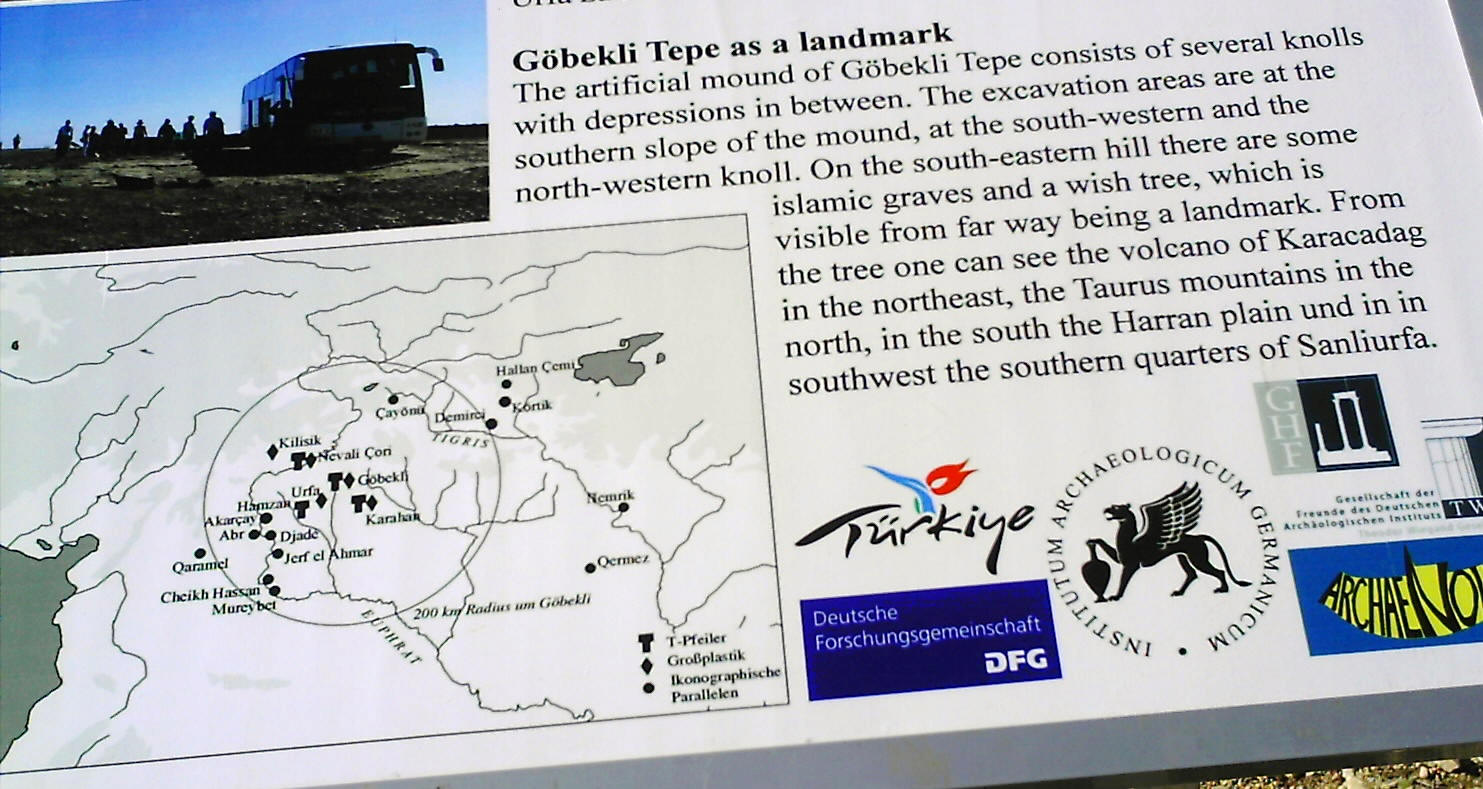
Gobekli Tepe- One of the signs explaining site as a landmark.
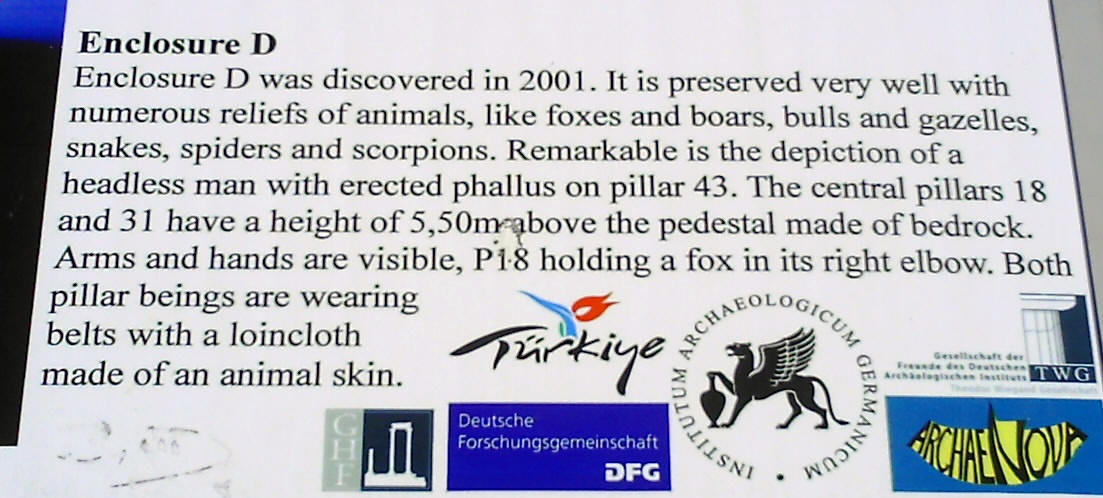
Gobekli Tepe- Readable shot of the signs explaining Enclosure D.
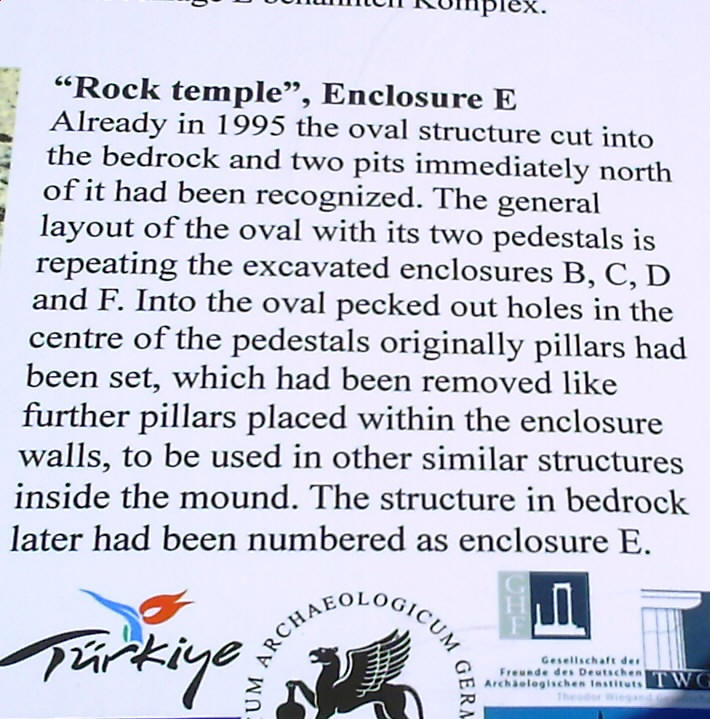
Gobekli Tepe- Readable shot of the signs explaining Enclosure E.
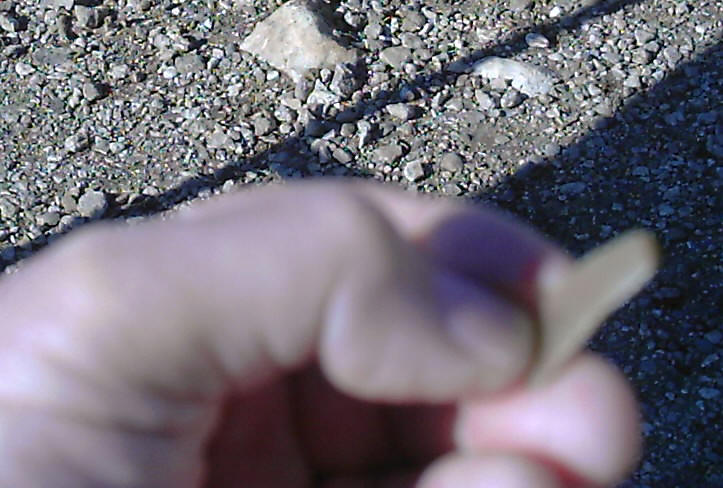
Gobekli Tepe- Serdar finds a second orange flake of flint. I see it has been
napped by human hands.
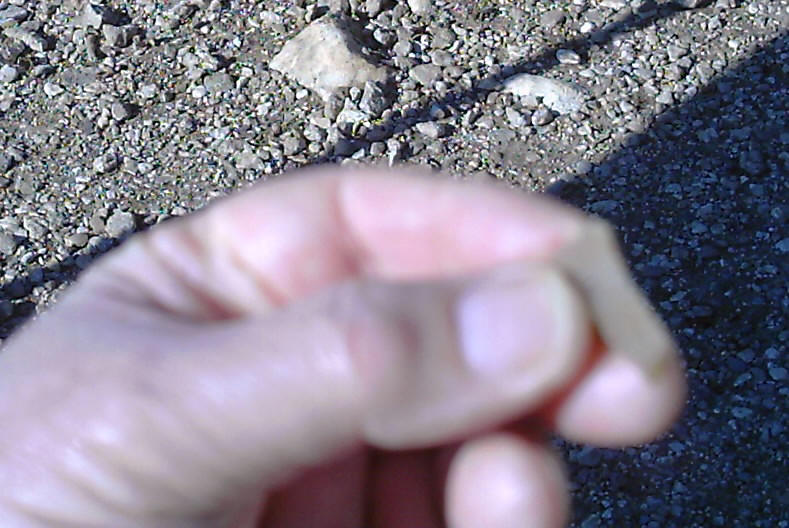
Gobekli Tepe- Serdar picks up a small orange flake of flint. I see it has
been napped by human hands. Sorry about the fuzzy photo.
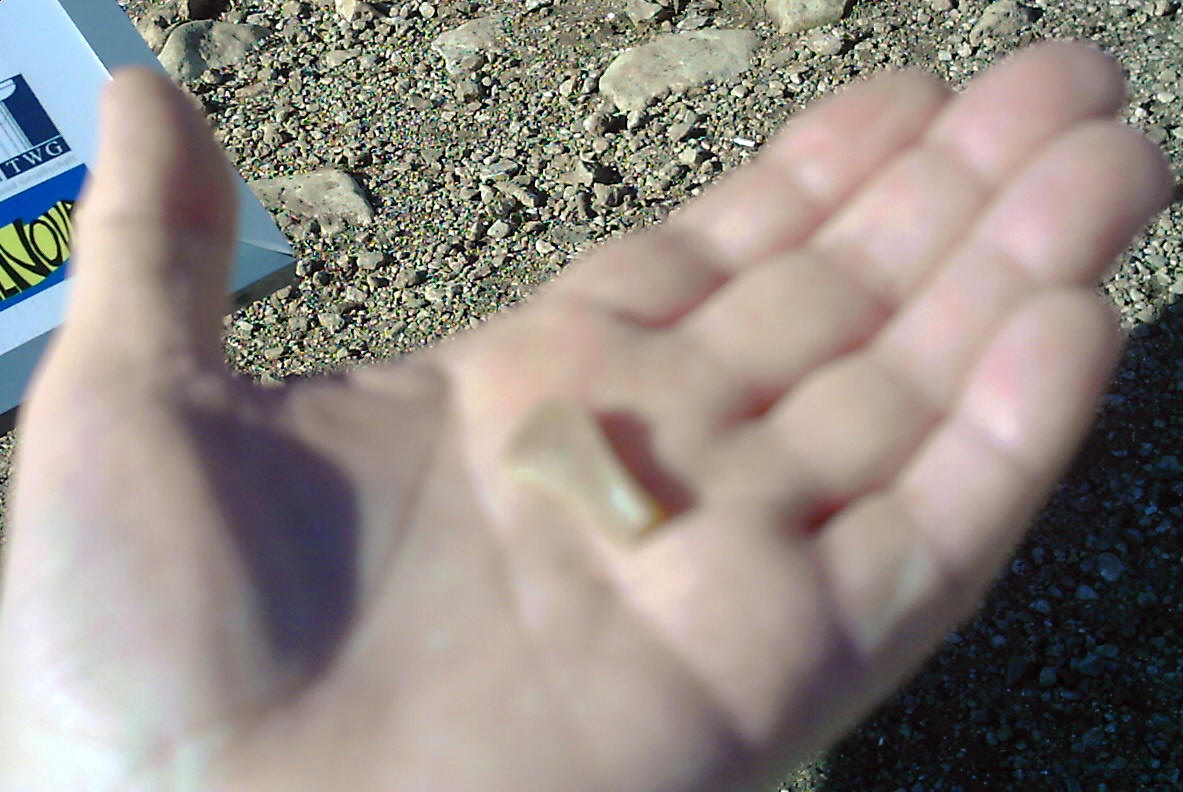
Gobekli Tepe- Serdar picks up a small orange flake of flint. I see it has
been napped by human hands. This fuzzy photo is the best I could do with a
close up shot.
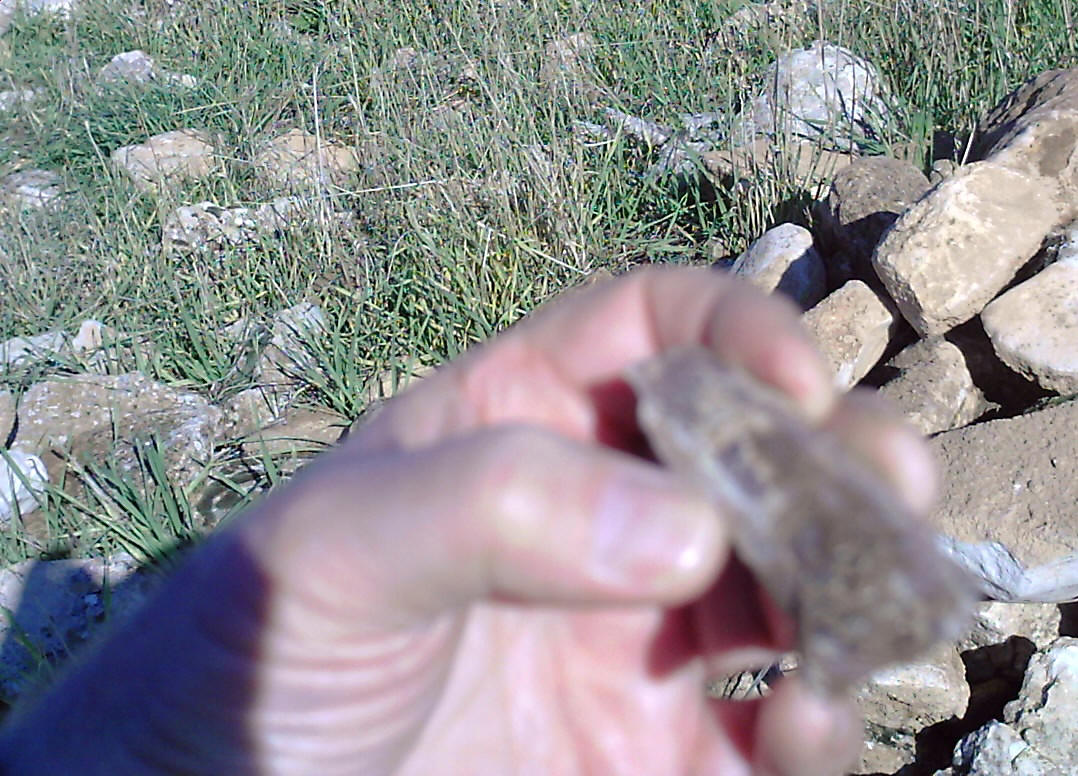
Gobekli Tepe- I start looking and find my own orange flake of flint, also
napped by human hands. Fuzzy photo is the best I could do.
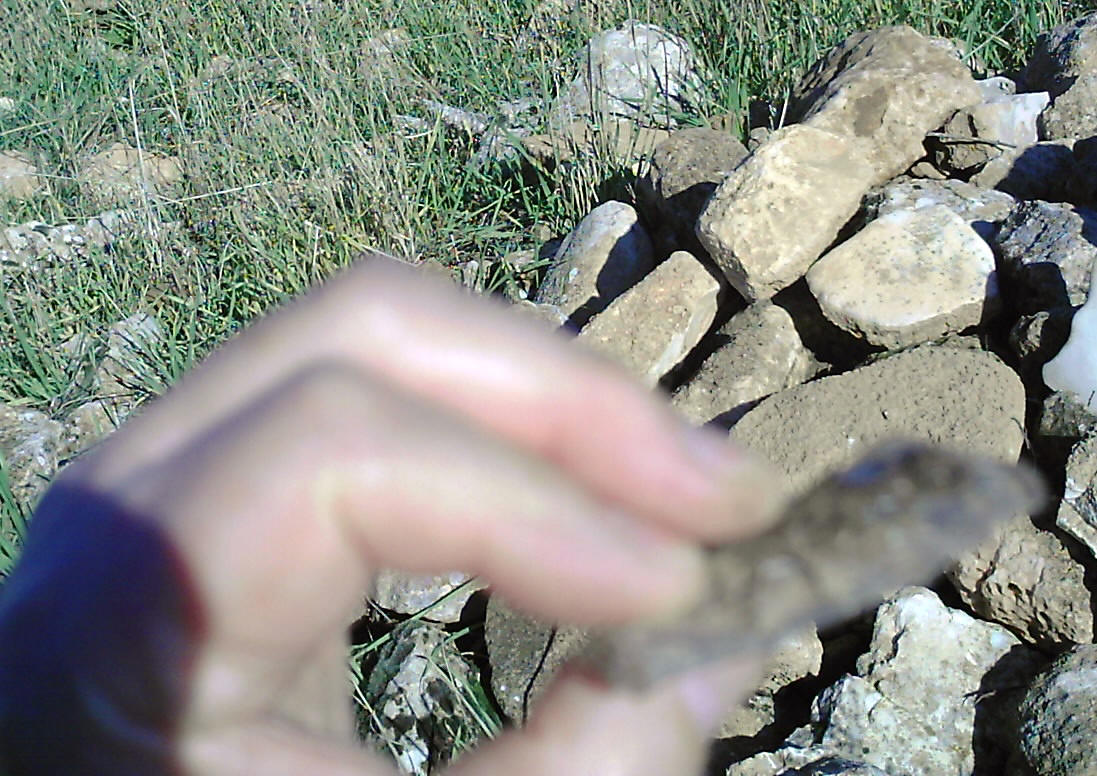
Gobekli Tepe- Another shot of my own orange flake of flint, also napped by
human hands. Fuzzy photo is the best I could do.
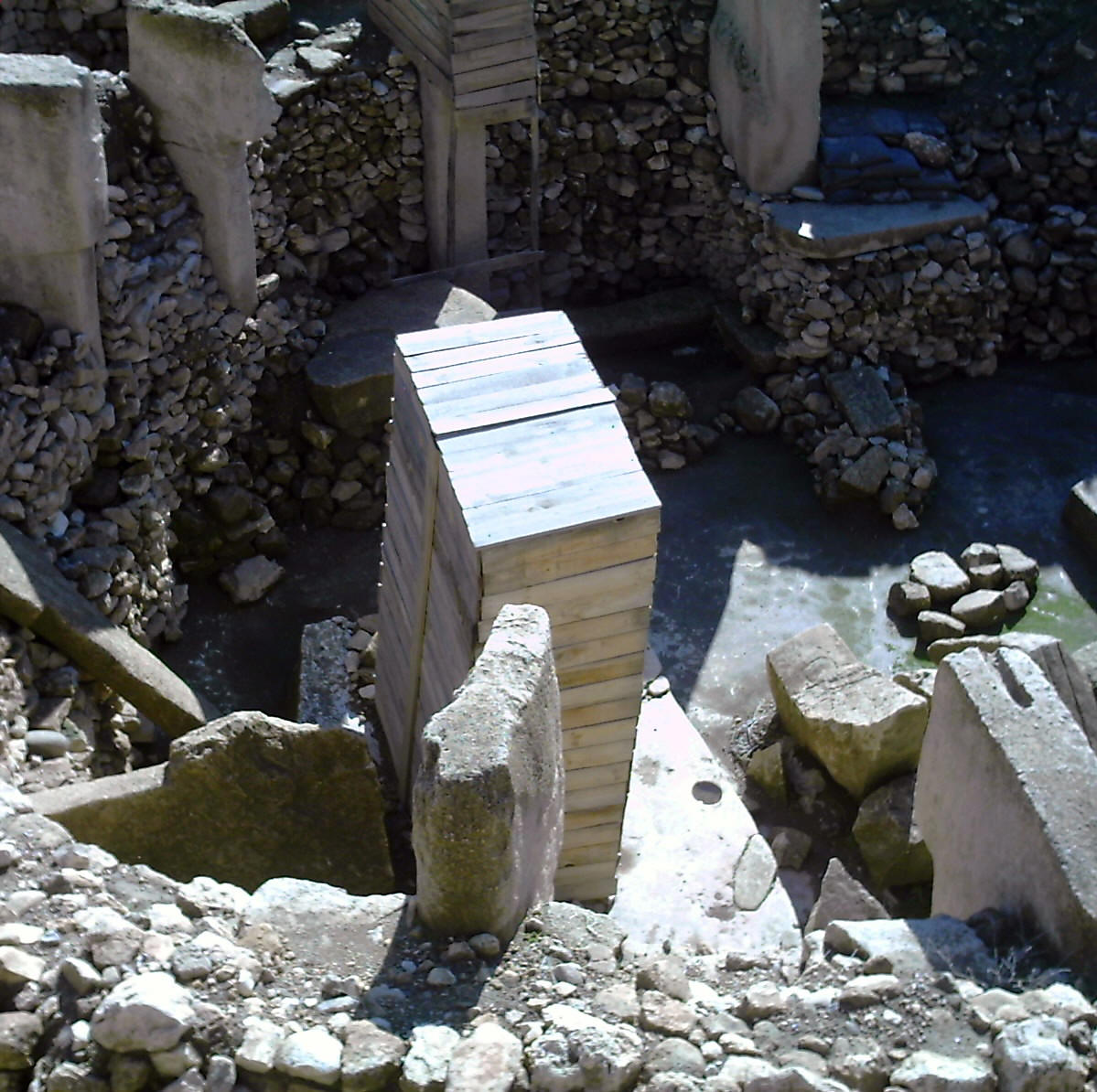
Gobekli Tepe- Some of the more fragile columns like this one have been
encased in wooden boxes for protection.
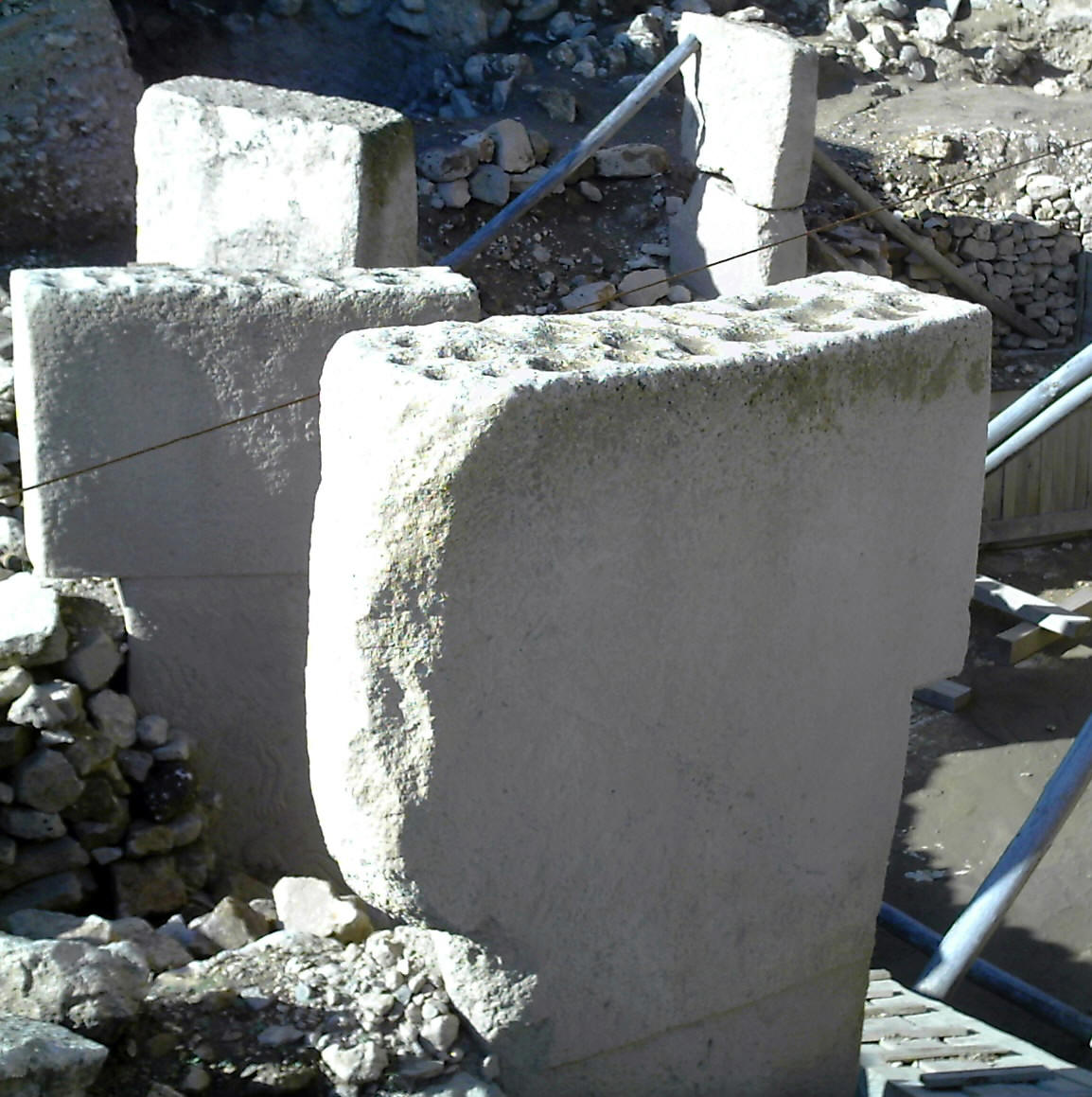
Gobekli Tepe- Some of the unusual columns like these have had bowl like
indentations carved into their tops.
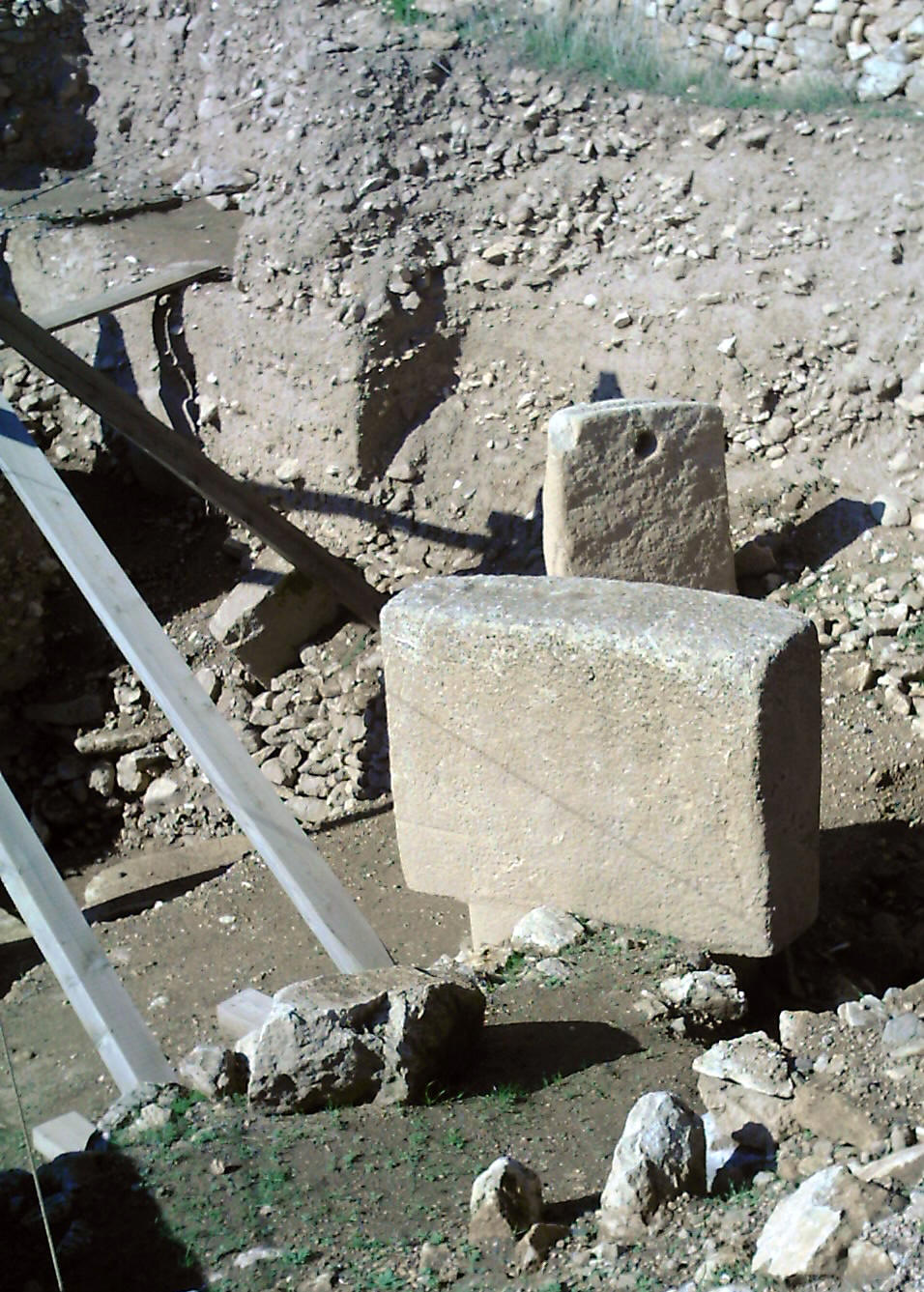
Gobekli Tepe- Sturdy steel supports protect some of the fragile structures .
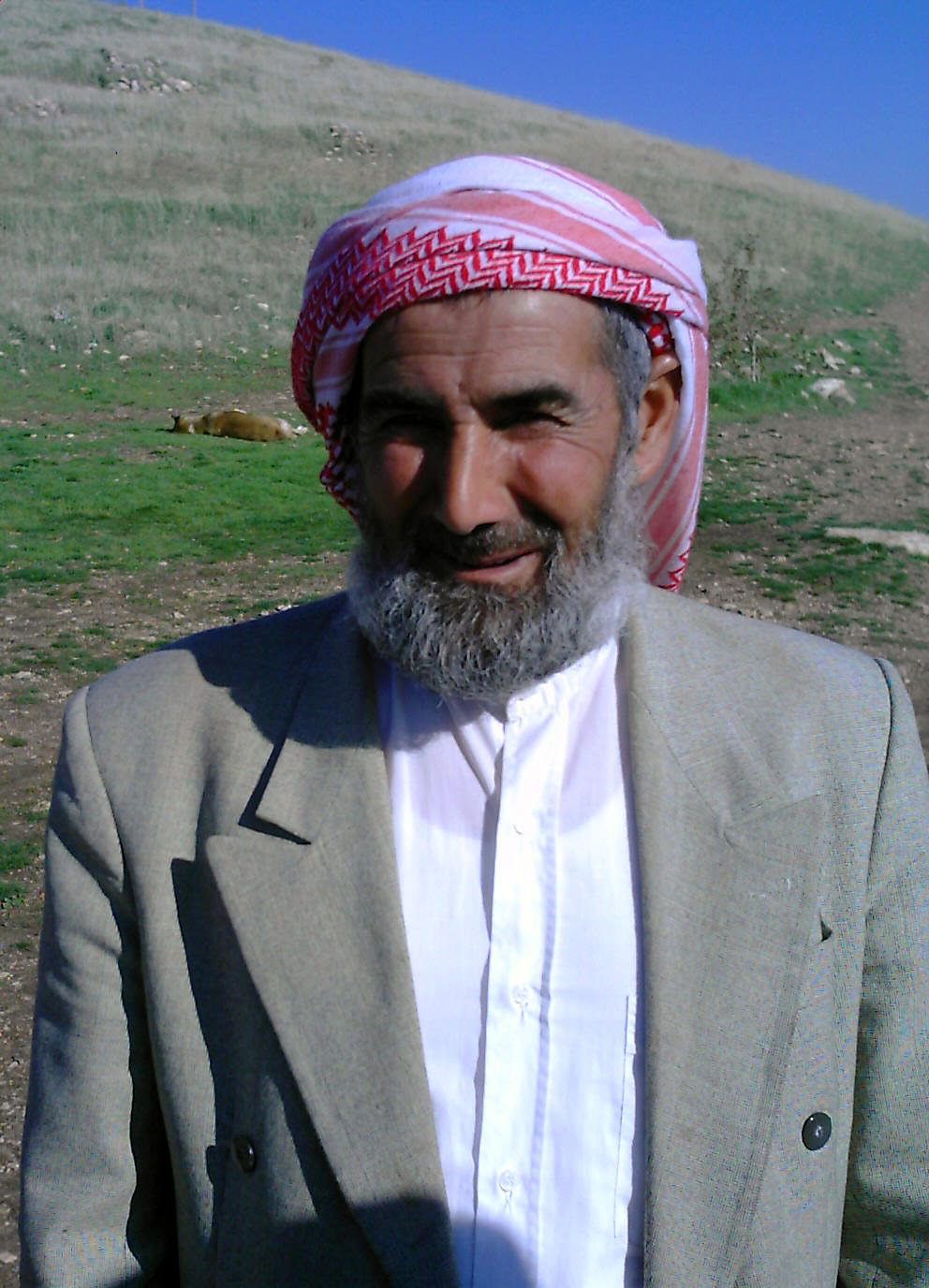
Gobekli Tepe- This is bashful caretaker Savak, nephew of the shepherd, Savak Yildiz who discovered the site back in 1994.
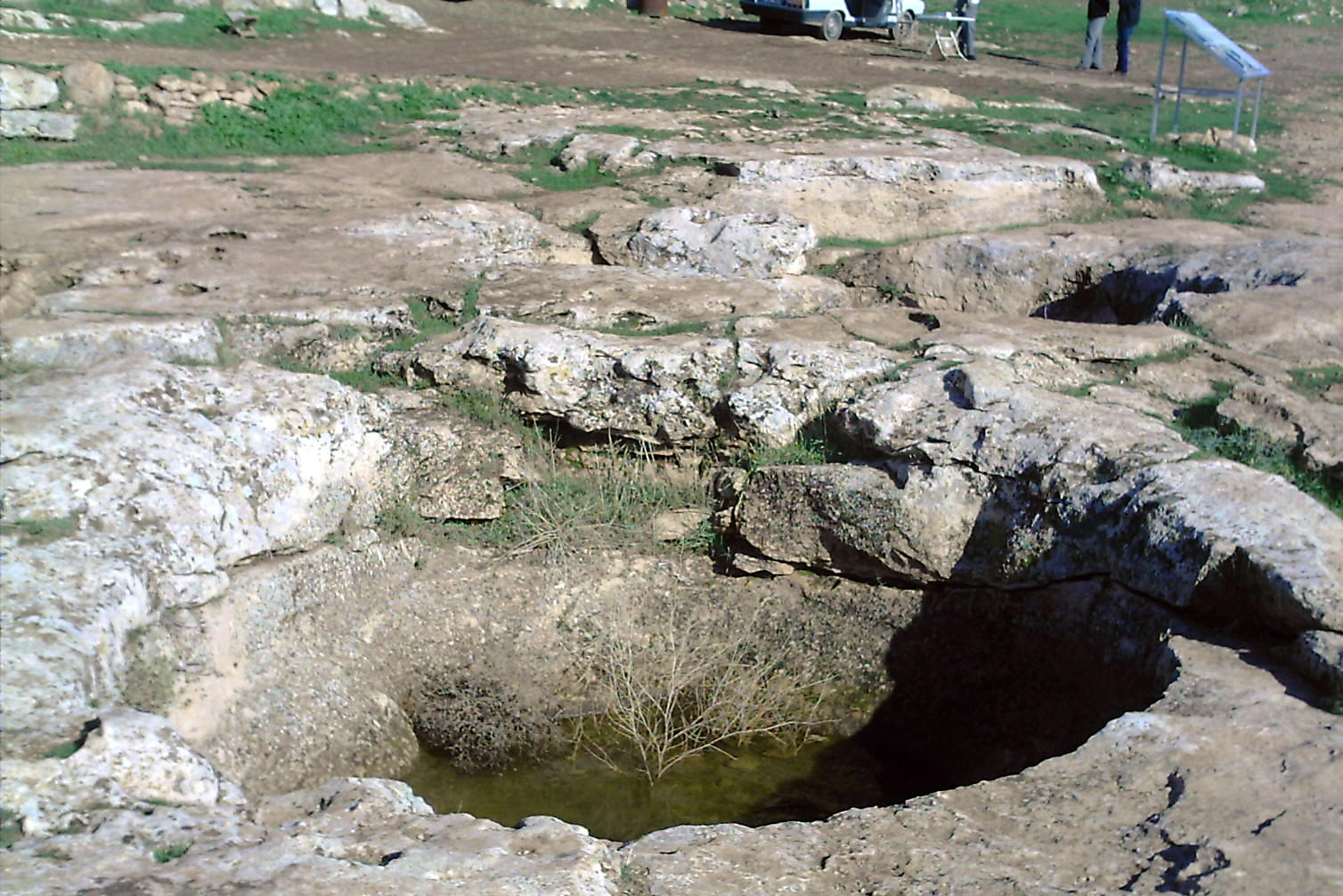
Gobekli Tepe- This is the first artifact cut into the bed rock I saw at the
edge of the parking area.
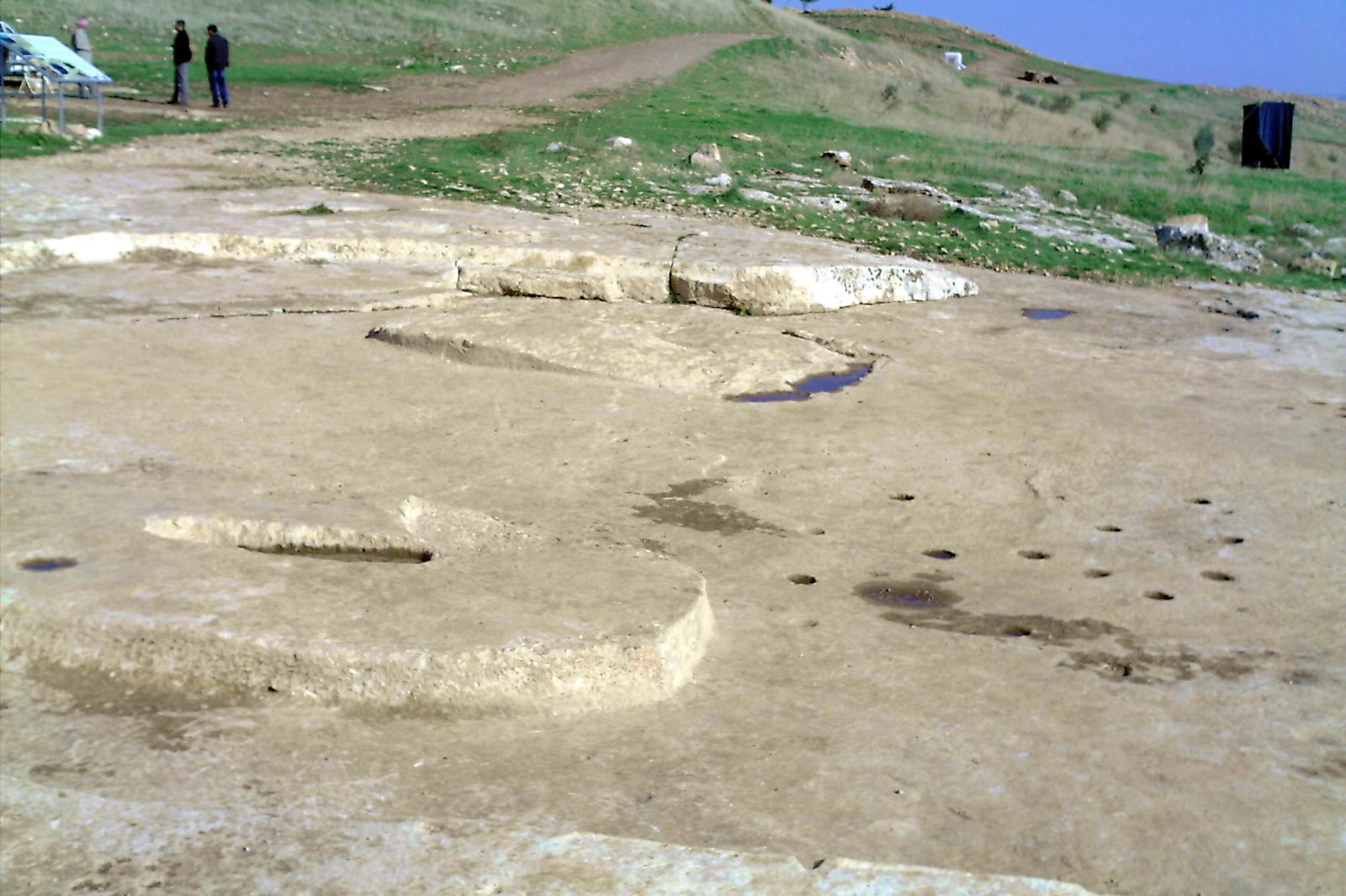
Gobekli Tepe- This is the first artifact cut into the bed rock I saw at the
edge of the parking area.
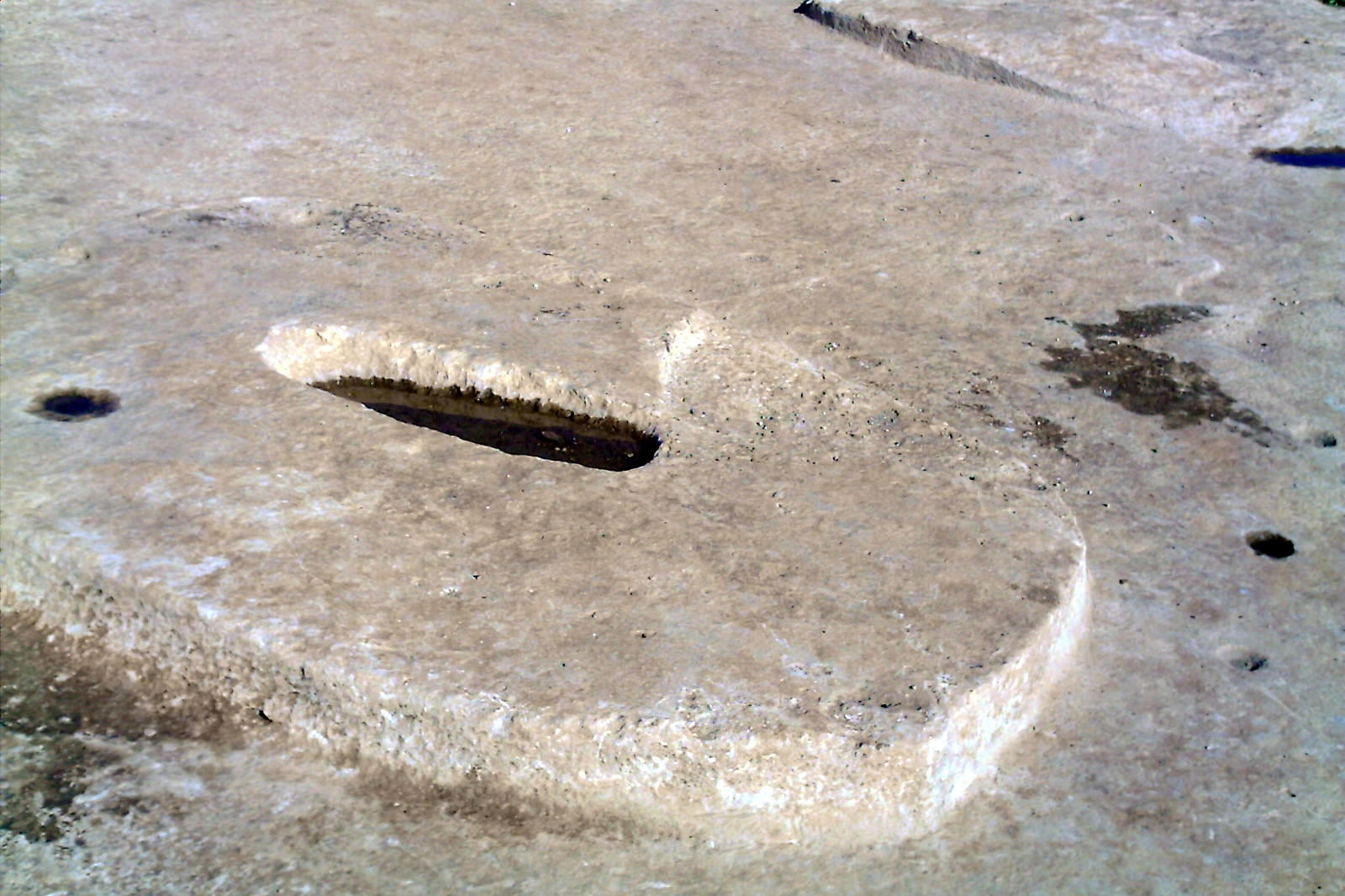
Gobekli Tepe- This is the first artifact cut into the bed rock I saw at the
edge of the parking area.
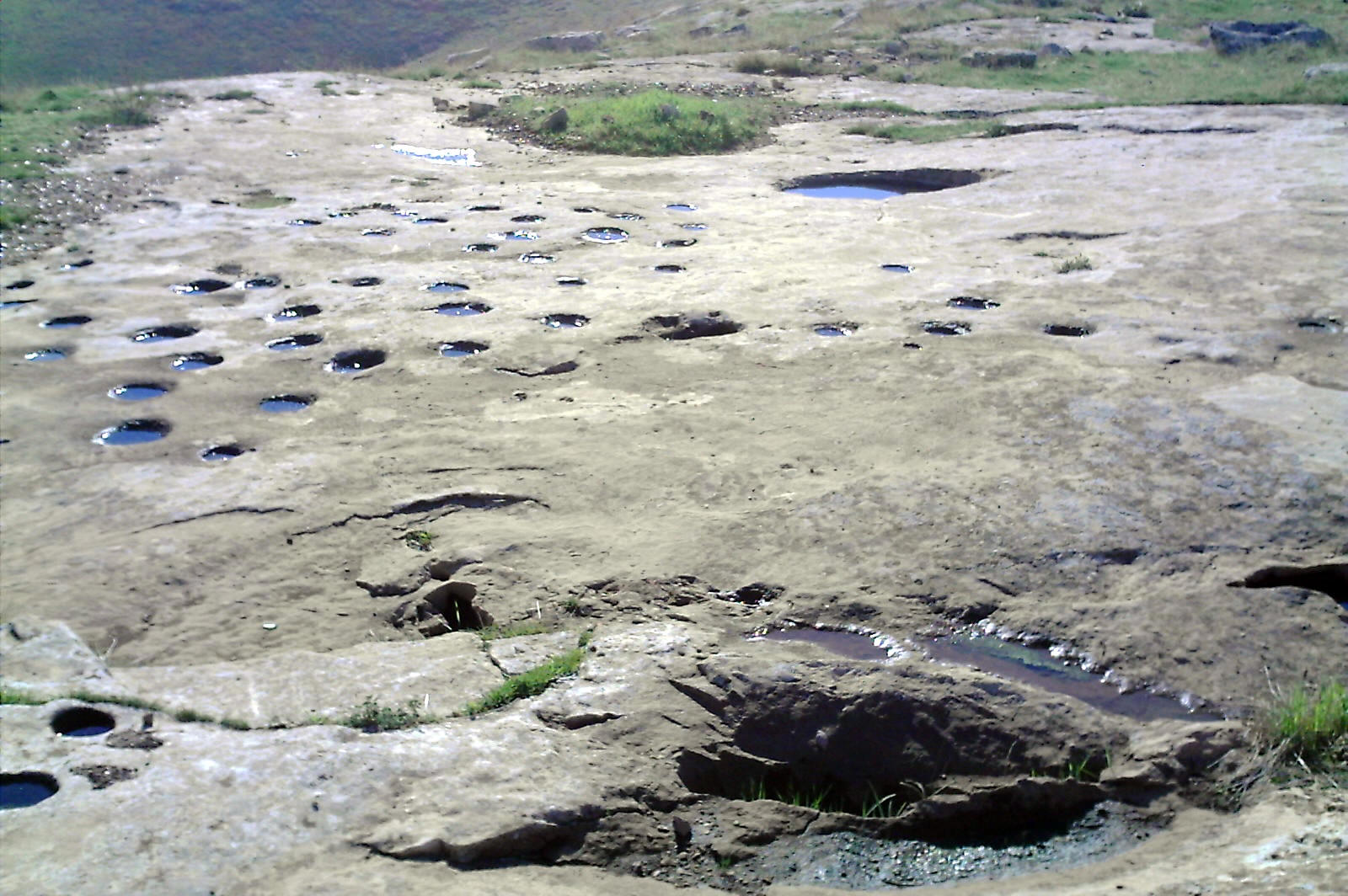
Gobekli Tepe- This is the first artifact cut into the bed rock I saw at the
edge of the parking area.
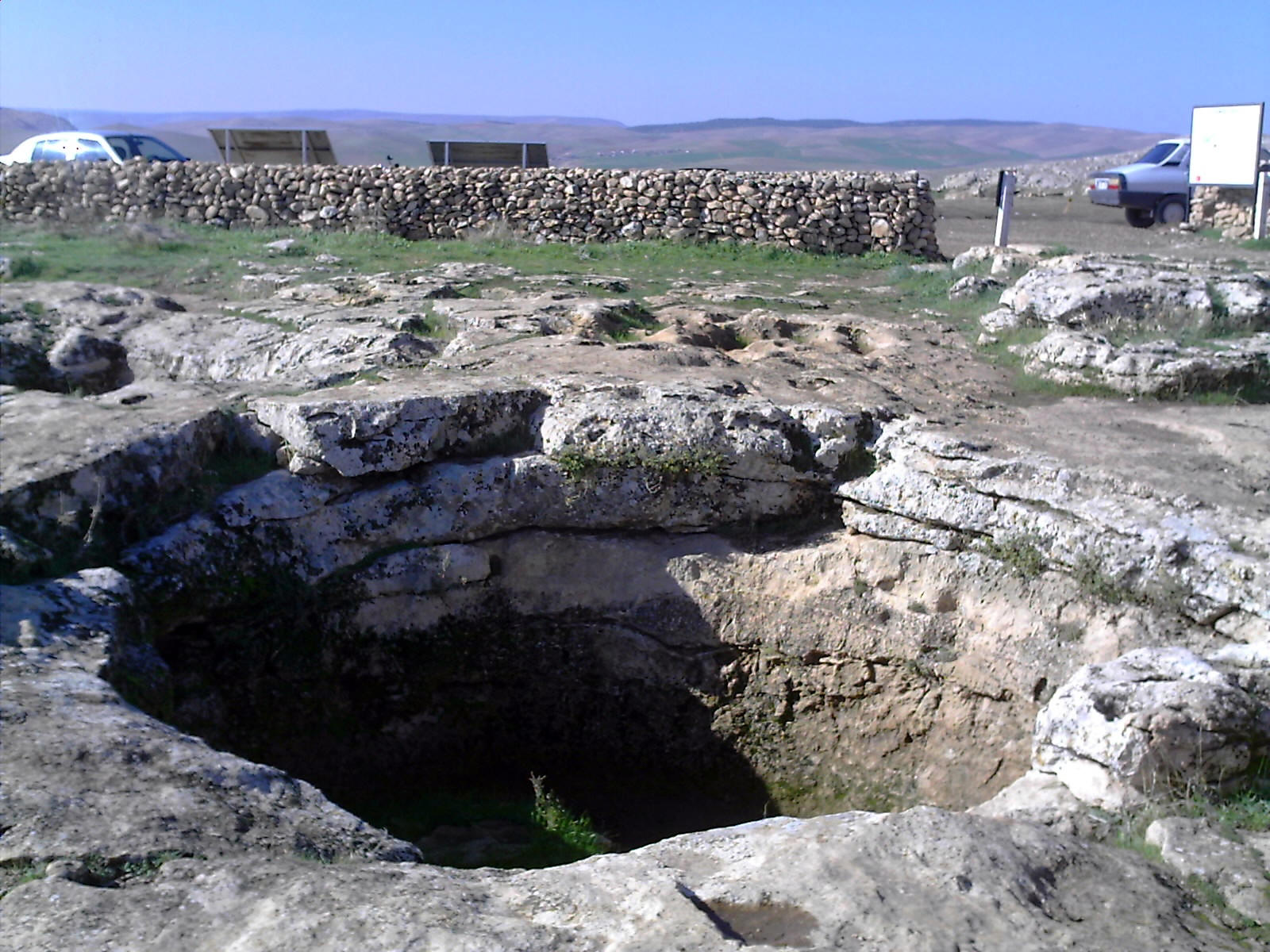
Gobekli Tepe- This is the first artifact cut into the bed rock I saw at the
edge of the parking area.
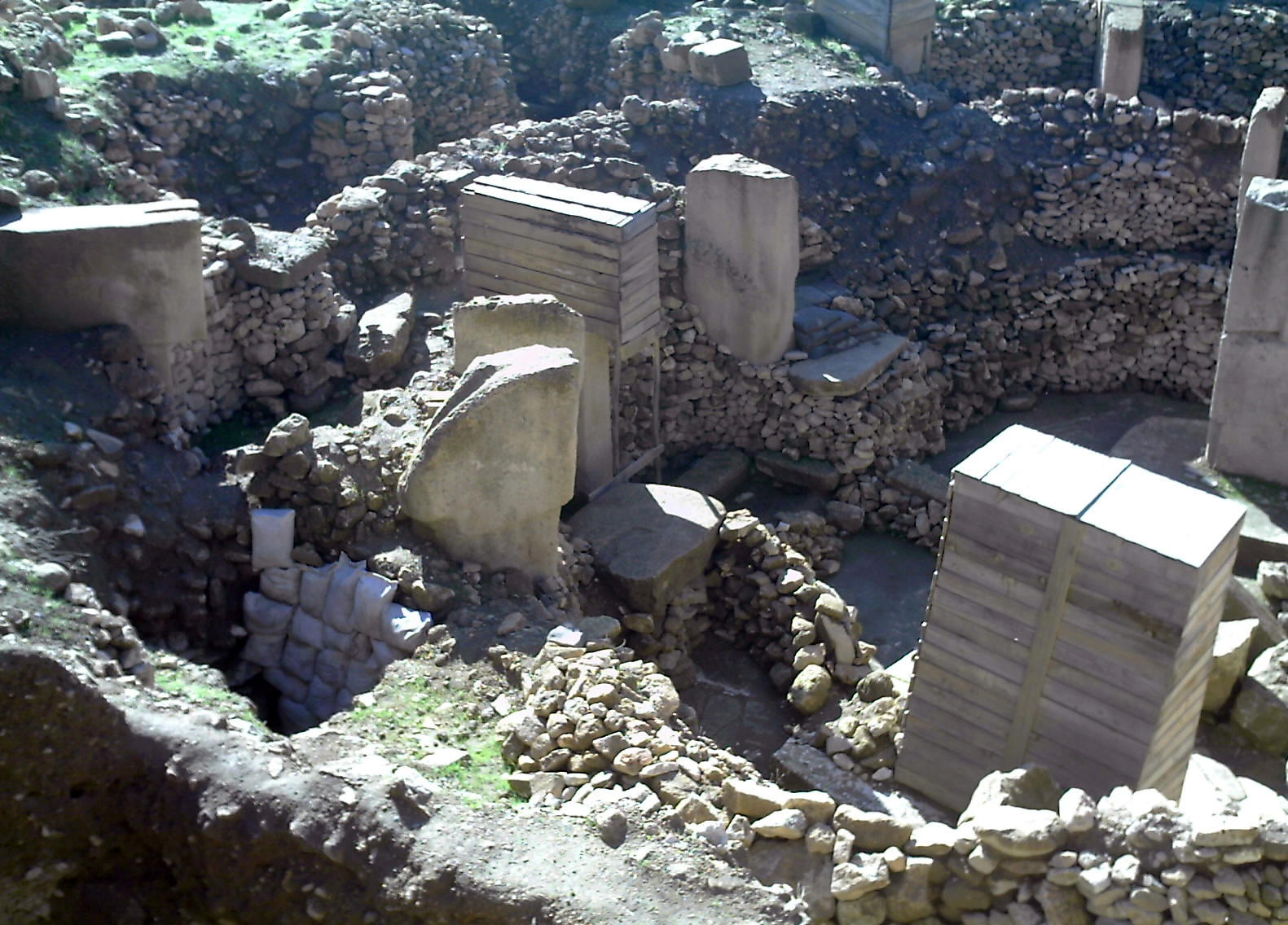
Gobekli Tepe- Walking around the several boardwalk systems I snapped
frequent photos. This is my once in a lifetime chance.
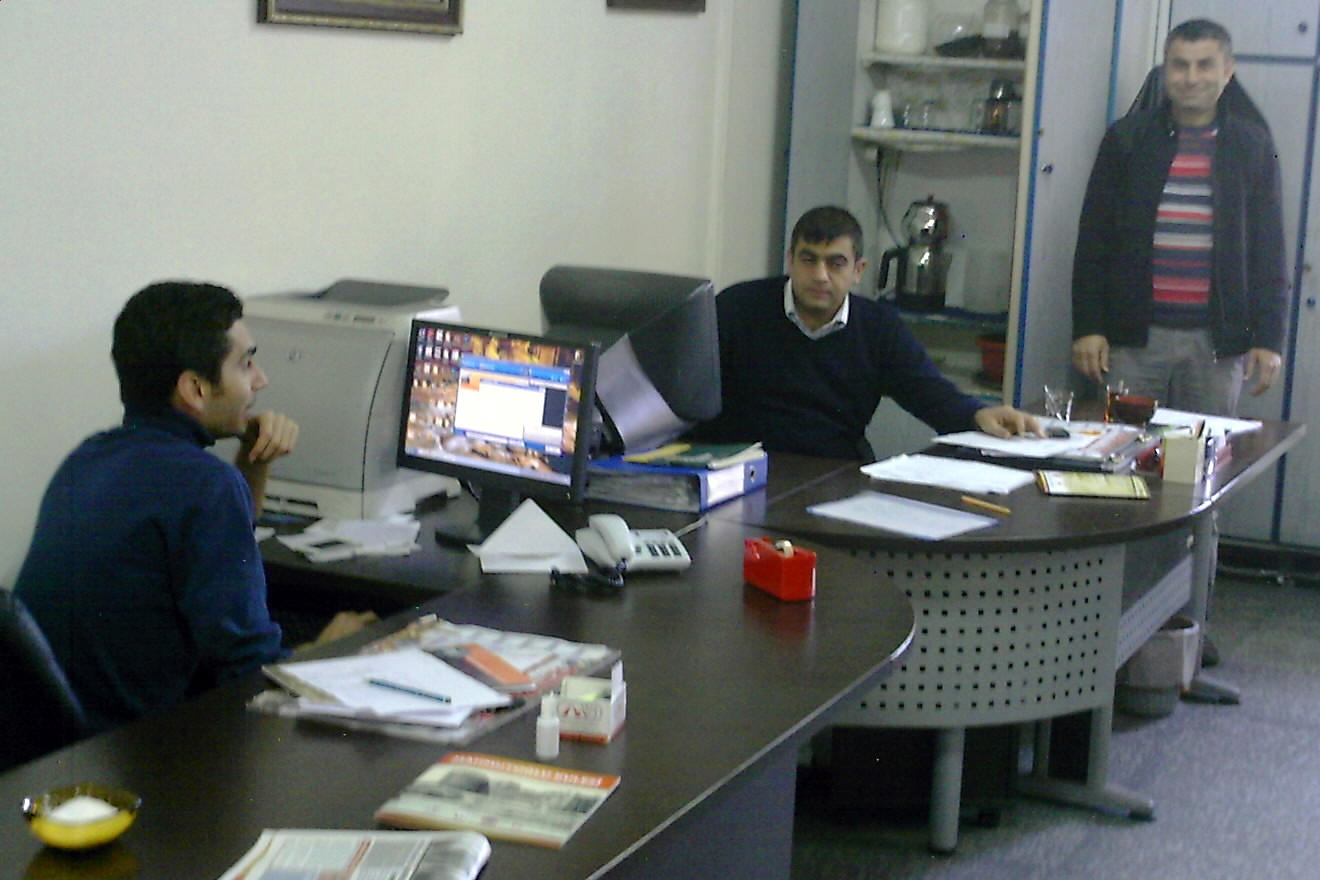
Urfa- Serdar and office colleagues who offered me tea, naturally!
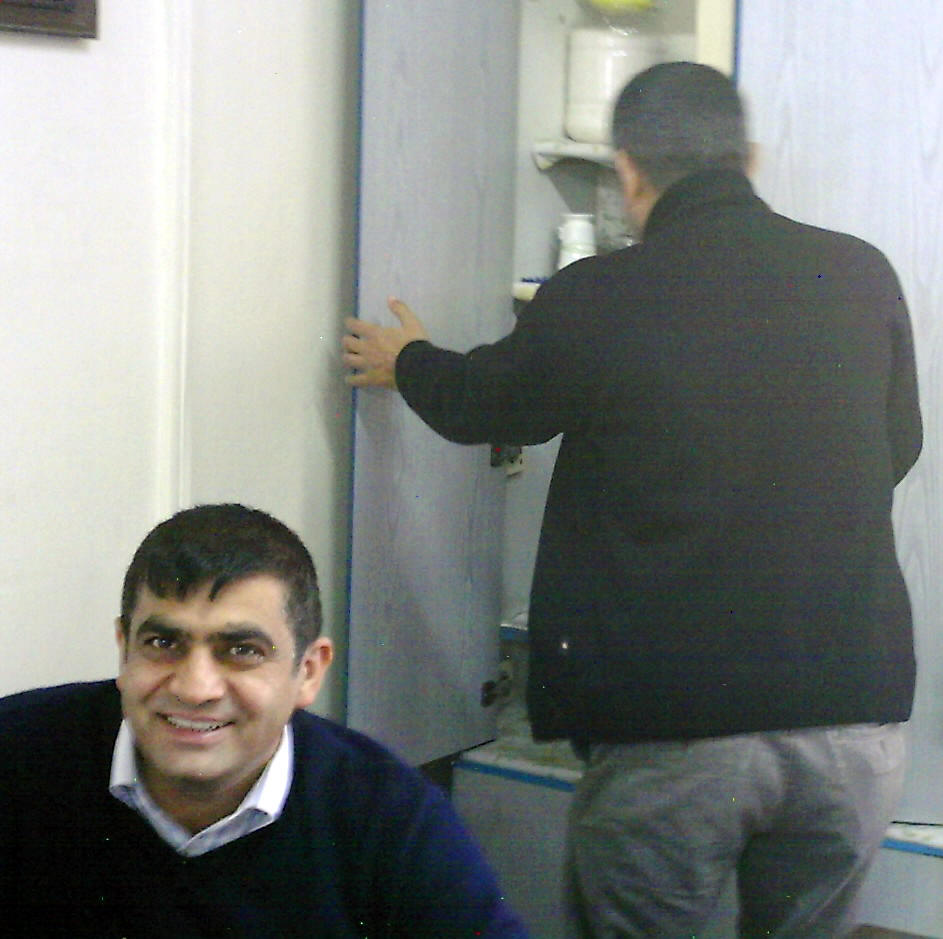
Urfa- Serdar preparing the tea from his office cabinet.
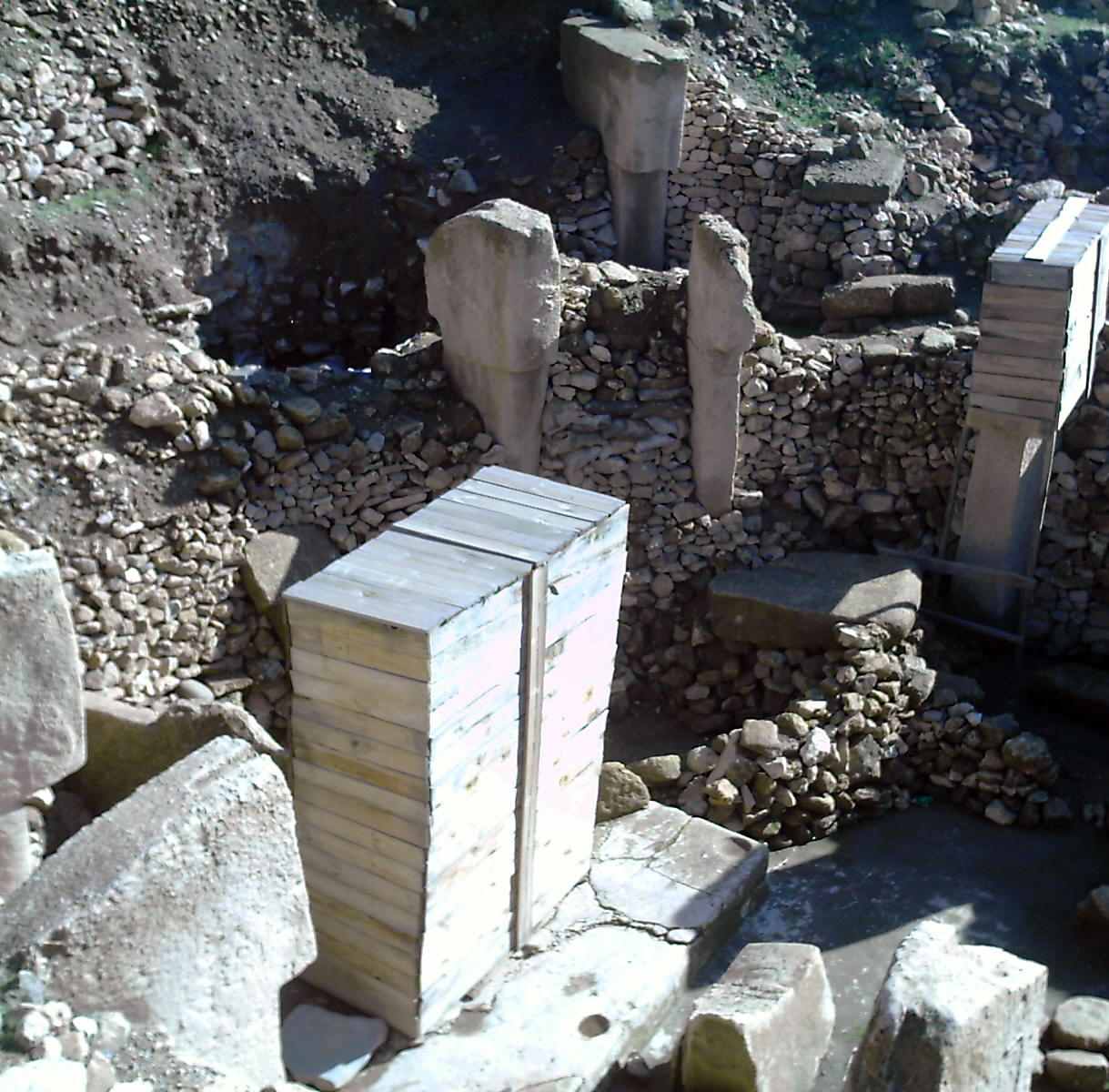
Gobekli Tepe- Many of the more fragile columns have
been encased in wooden boxes for protection.
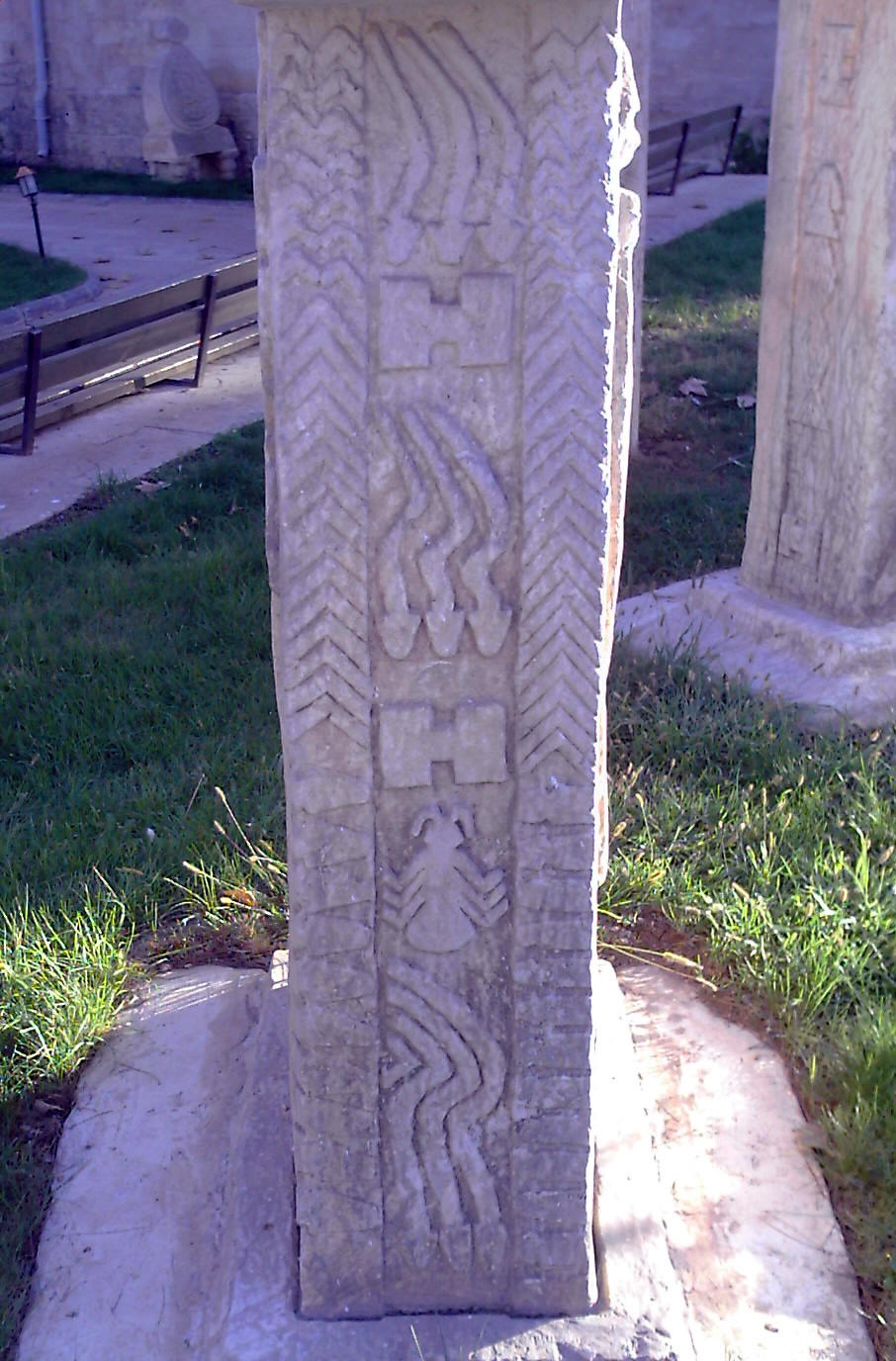
Urfa - Replica of Gobekli Tepe column on display in Culture Center garden.
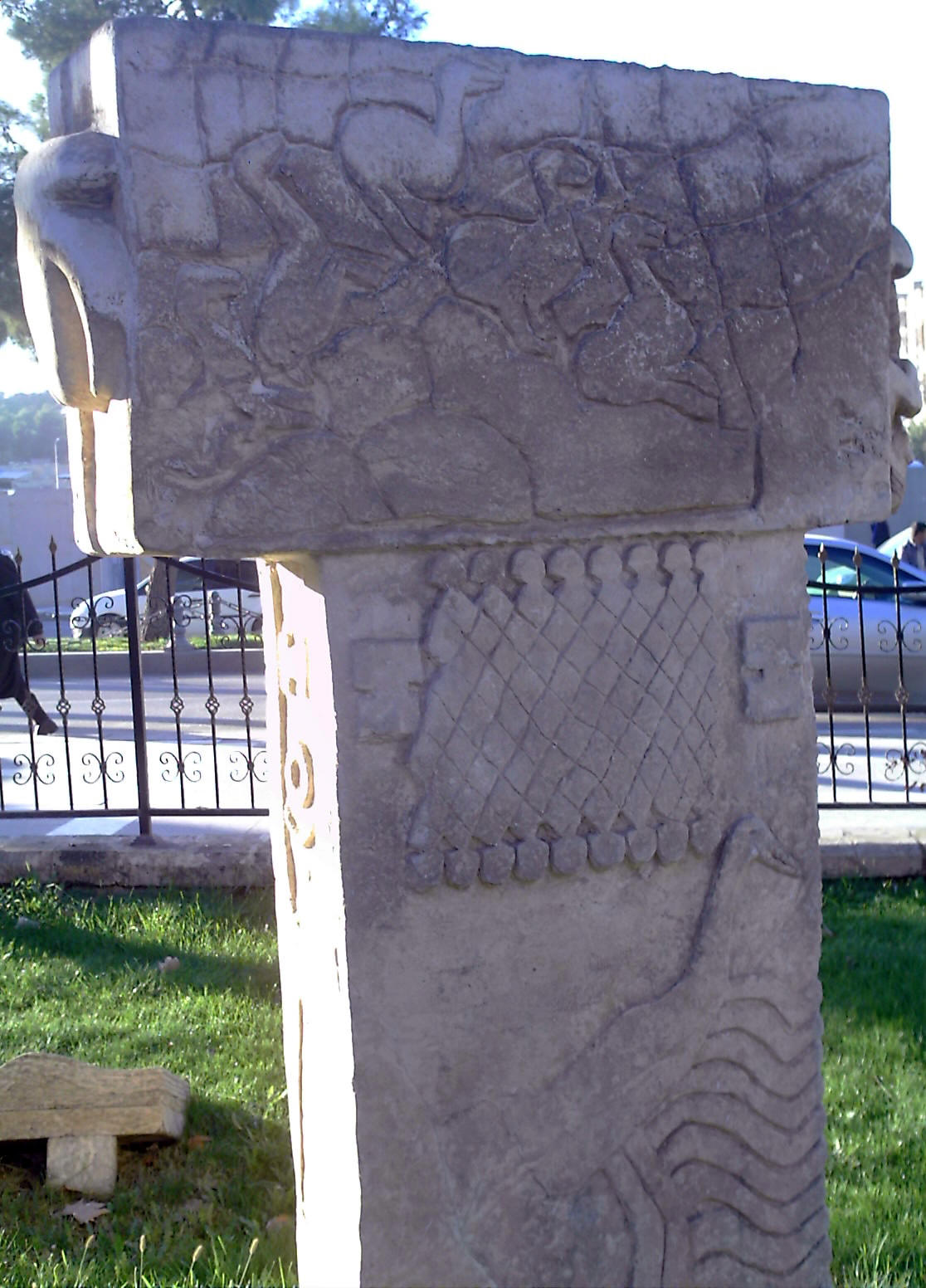
Urfa - Replica of Gobekli Tepe column on display in Culture Center garden.
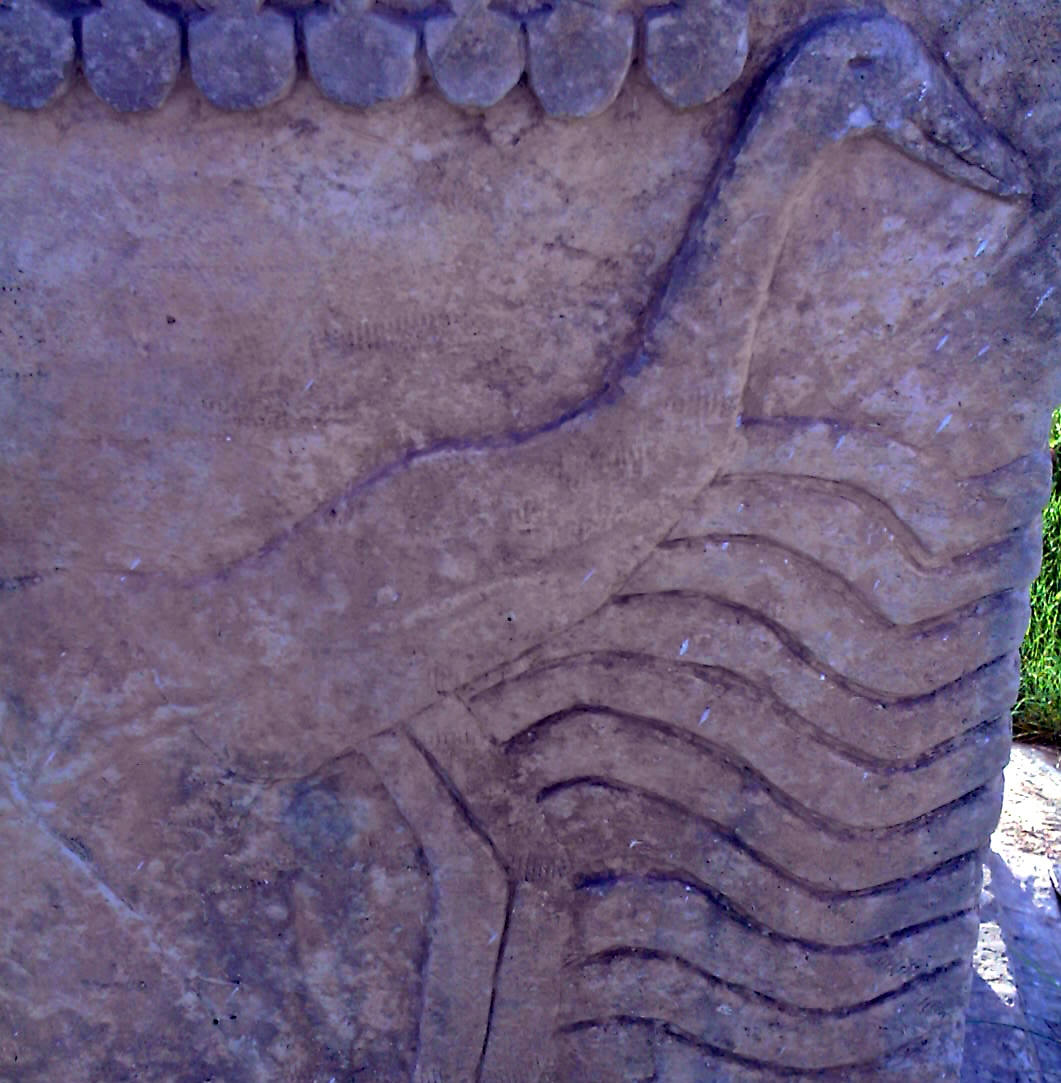
Urfa - Replica of Gobekli Tepe column on display in Culture Center garden.
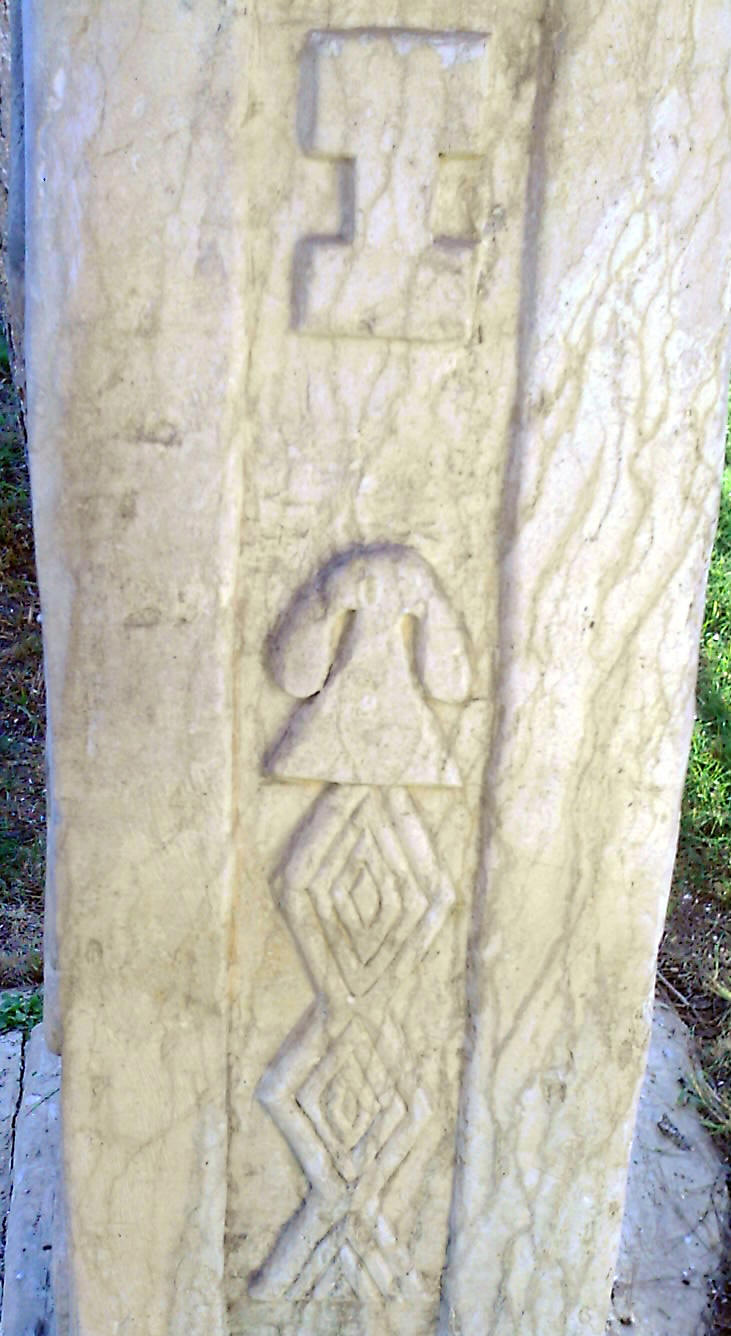
Urfa - Replica of Gobekli Tepe column on display in Culture Center garden.
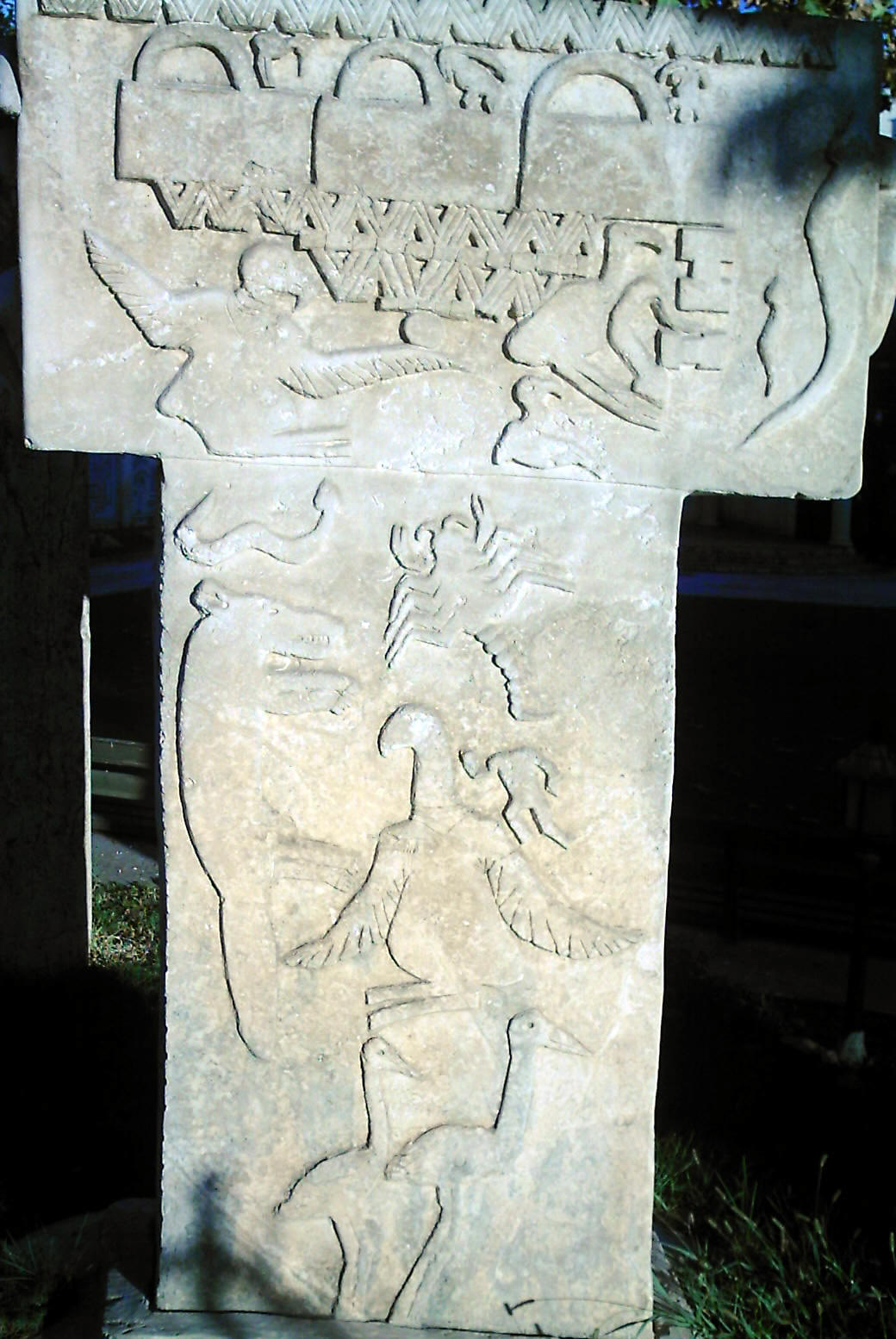
Urfa - Replica of Gobekli Tepe column on display in Culture Center garden.
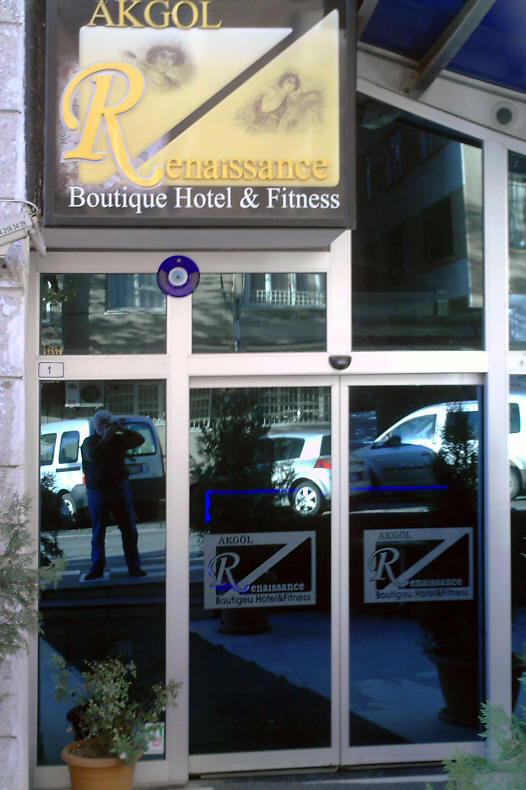
Urfa- Entrance to the quite good 70TL boutique Hotel Akgol where I spent my
last three nights in Urfa; notice the self portrait reflection in the glass
door.
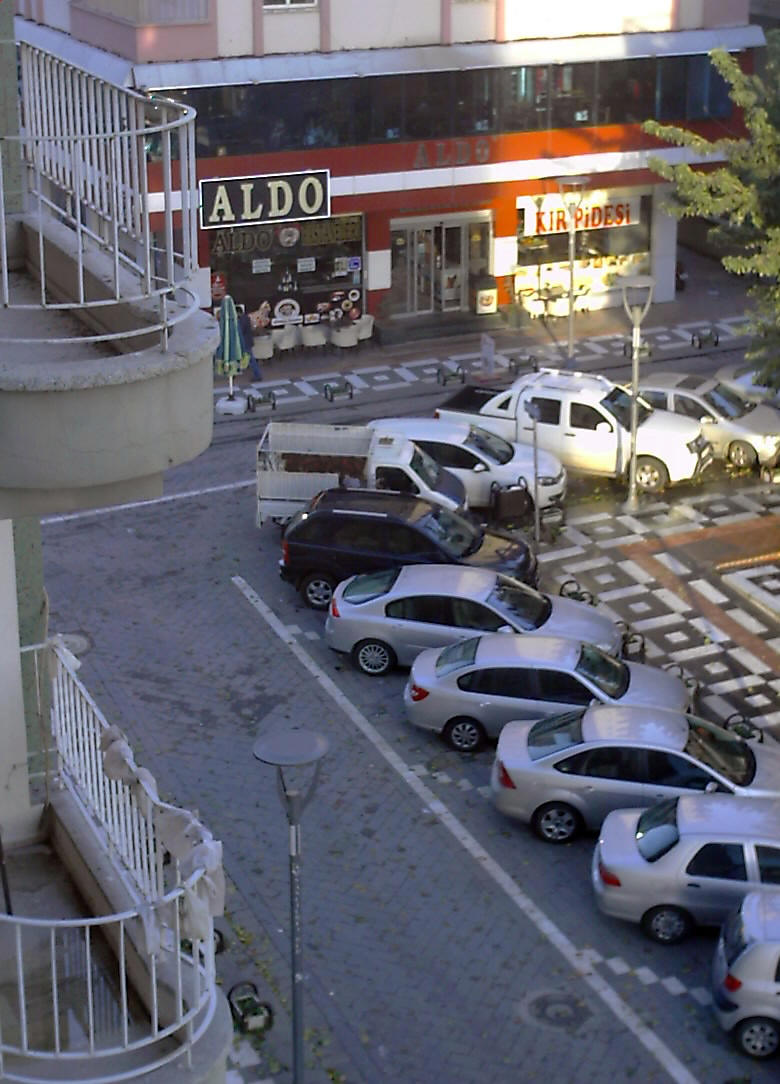
Urfa- View of the Aldo restaurant behind the 70TL Hotel Akgol.
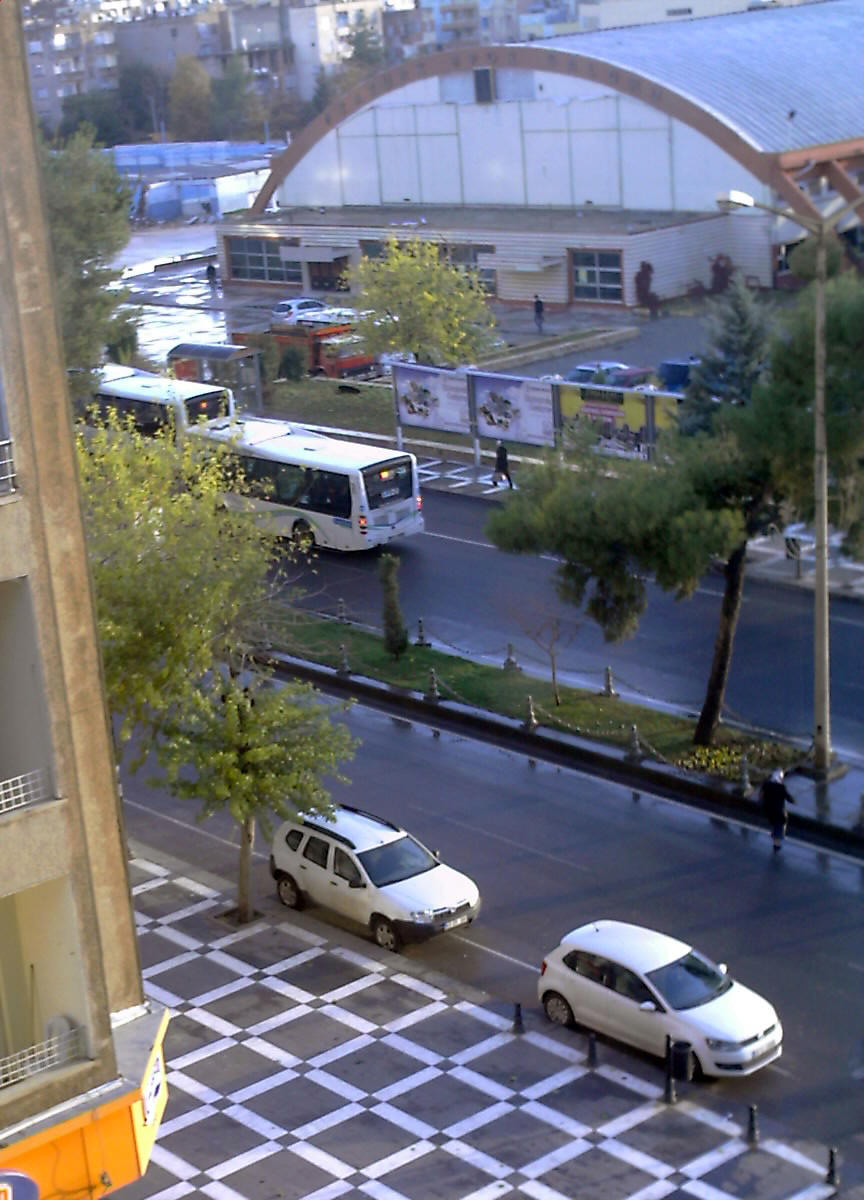
Urfa- View of the bus stop directly across the street from the 70TL Hotel
Akgol where I stayed my last three nights in Urfa.
|





























































































